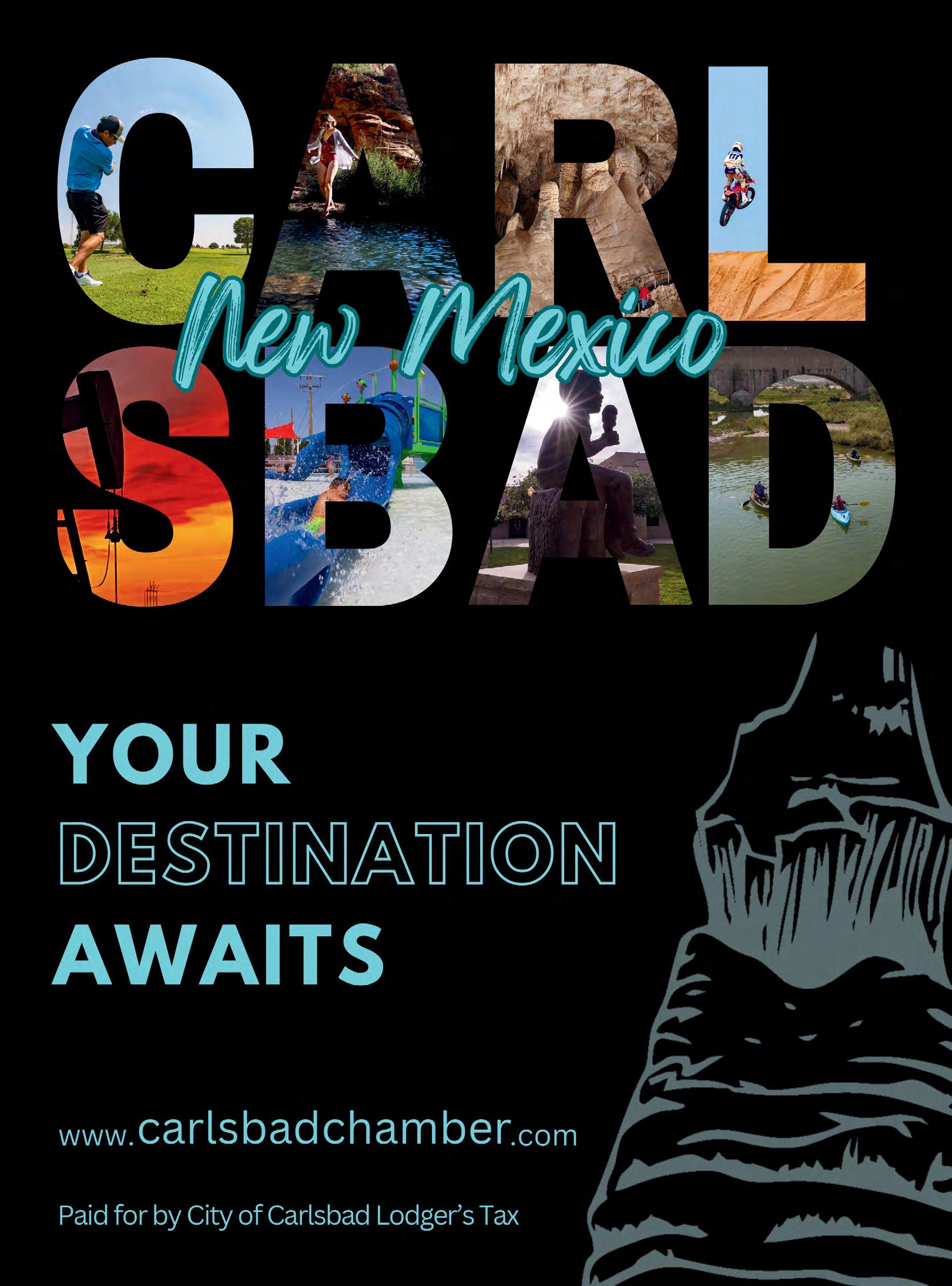
June/July 2024


June/July 2024
Whether it’s classic cars, old fashioned burgers or a museum that brings history to life, you can relive the glory days of Route 66 in its birthplace. We love our city and know the best places to eat, drink and play.
SEE YOU IN SPRINGFIELD,
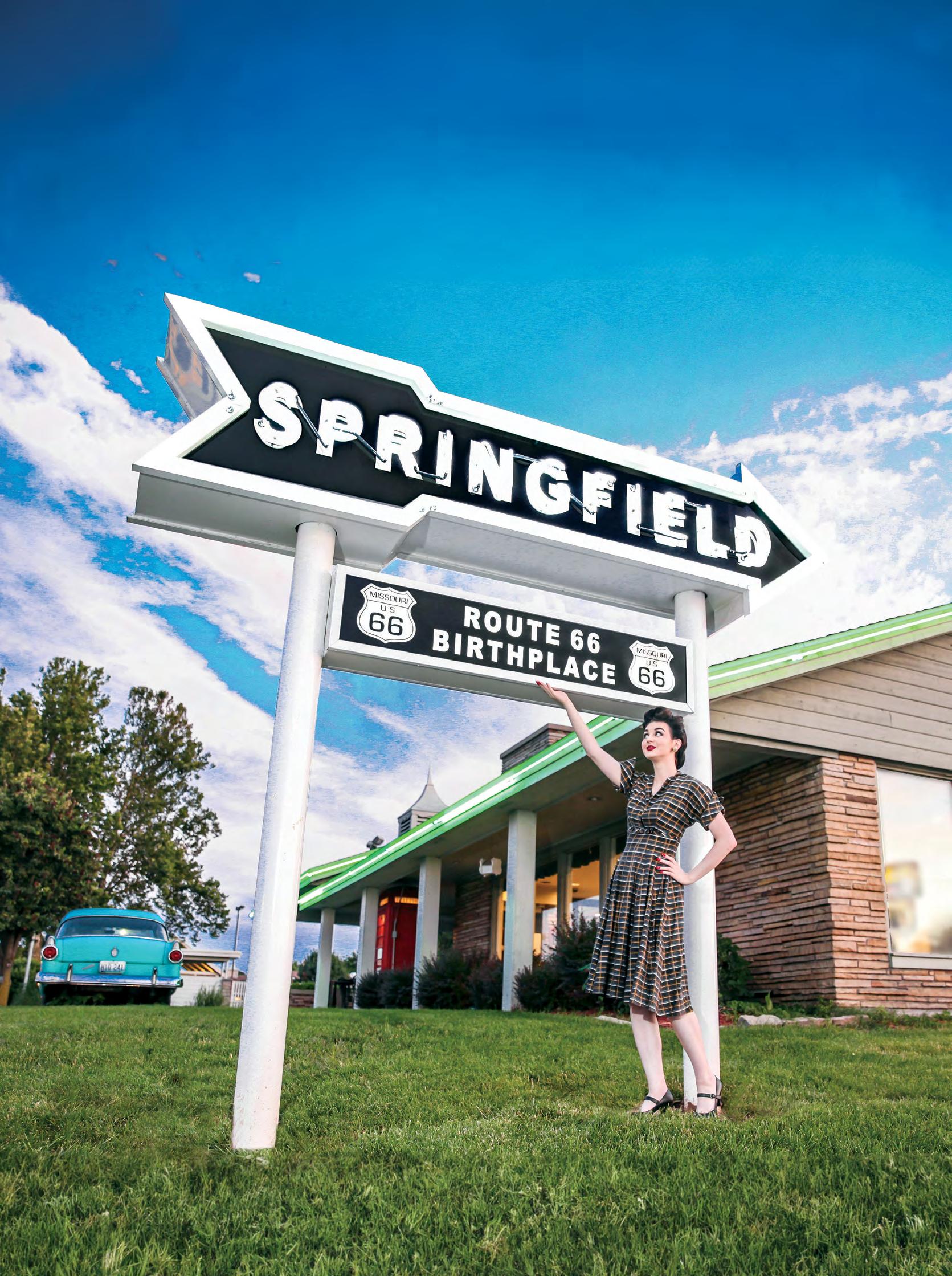























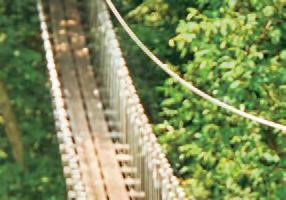







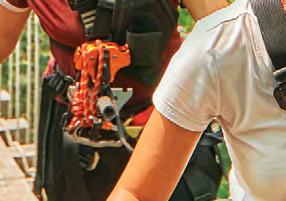
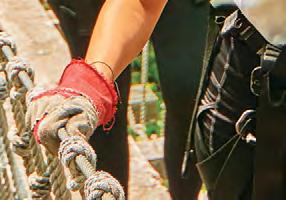
















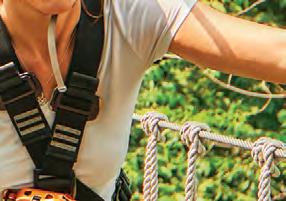

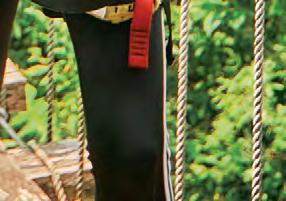

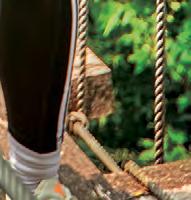

















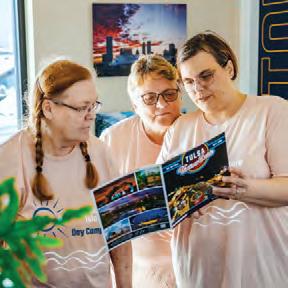
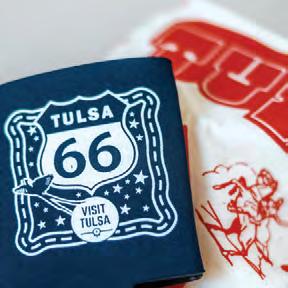
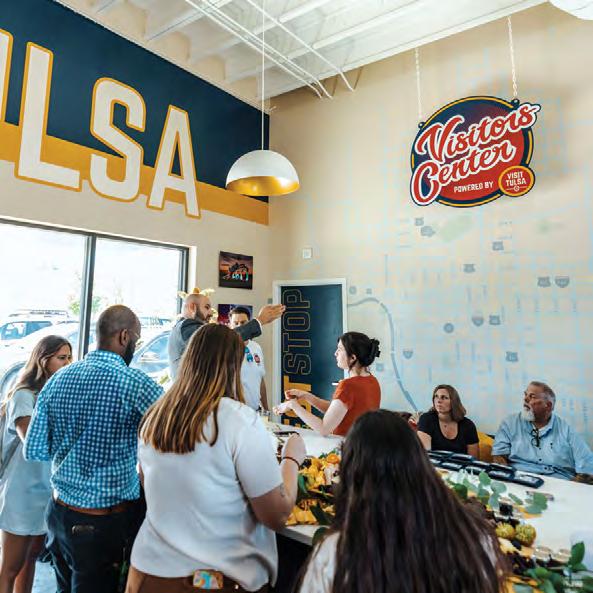




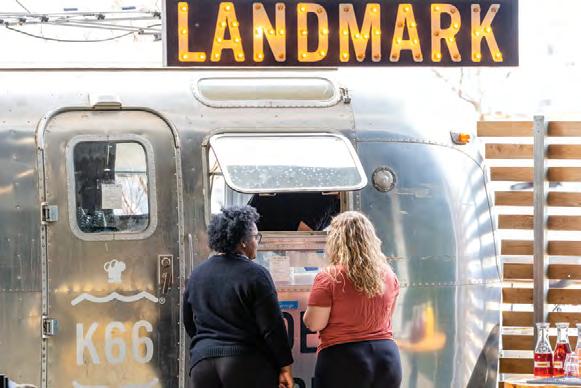







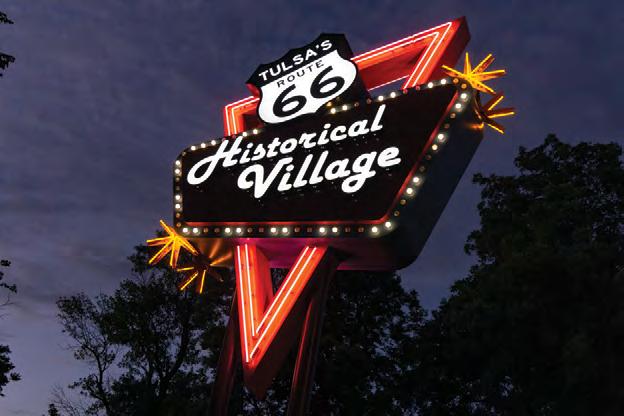


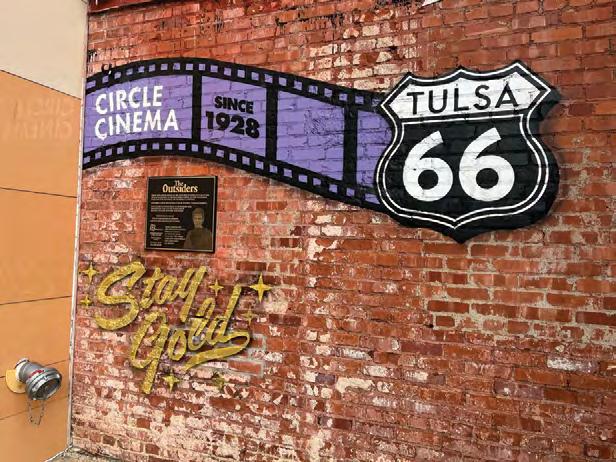




















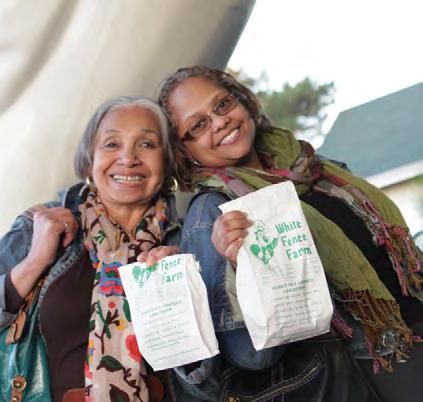









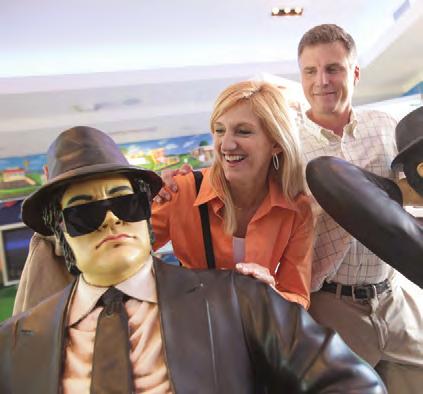











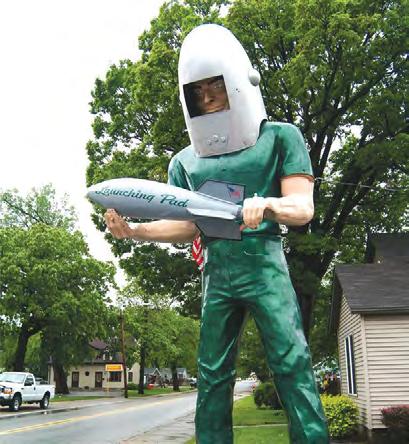







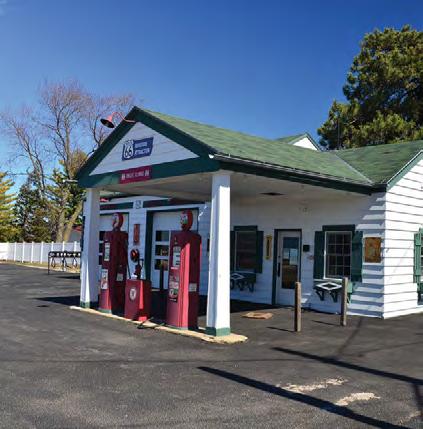












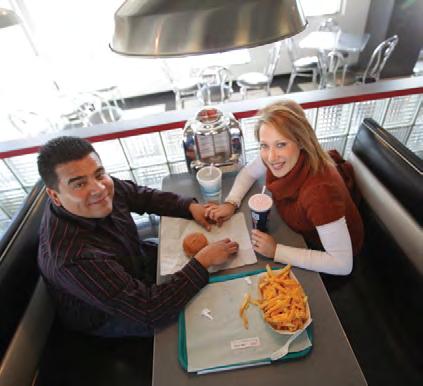








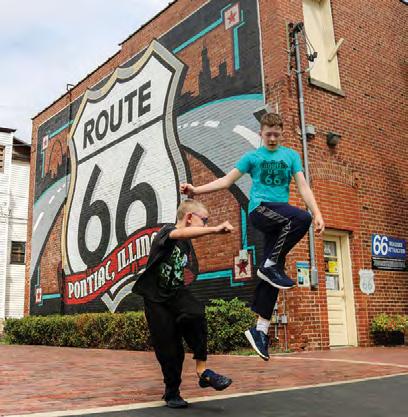








On Museum Square in Downtown Bloomington, the Cruisin’ with Lincoln on 66 Visitors Center is located on the ground floor of the nationally accredited McLean County Museum of History.
The Visitors Center is a Route 66 gateway. Discover Route 66 history through an interpretive exhibit, and shop for unique local gift items, maps, and publications. A travel kiosk allows visitors to explore all the things to see and do in the area as well as plan their next stop on Route 66. CRUISIN’ WITH LINCOLN ON 66 VISITORS CENTER
Open Monday–Saturday 9 a.m.–5 p.m. Free Admission on Tuesdays until 8 p.m. 200 N. Main Street, Bloomington, IL 61701 309.827.0428 / CruisinwithLincolnon66.org
*10% o gift purchases
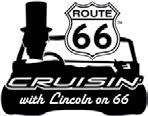
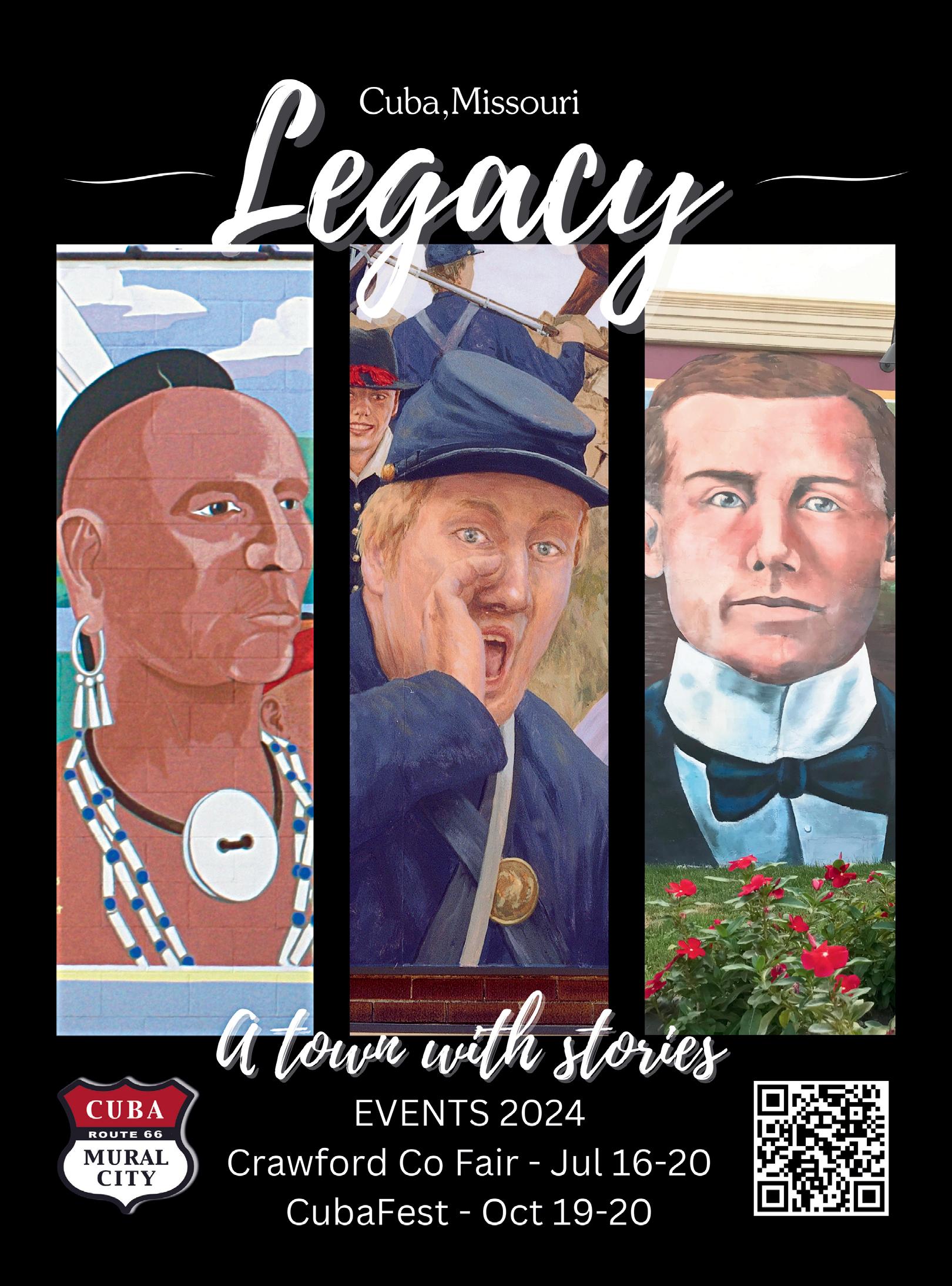
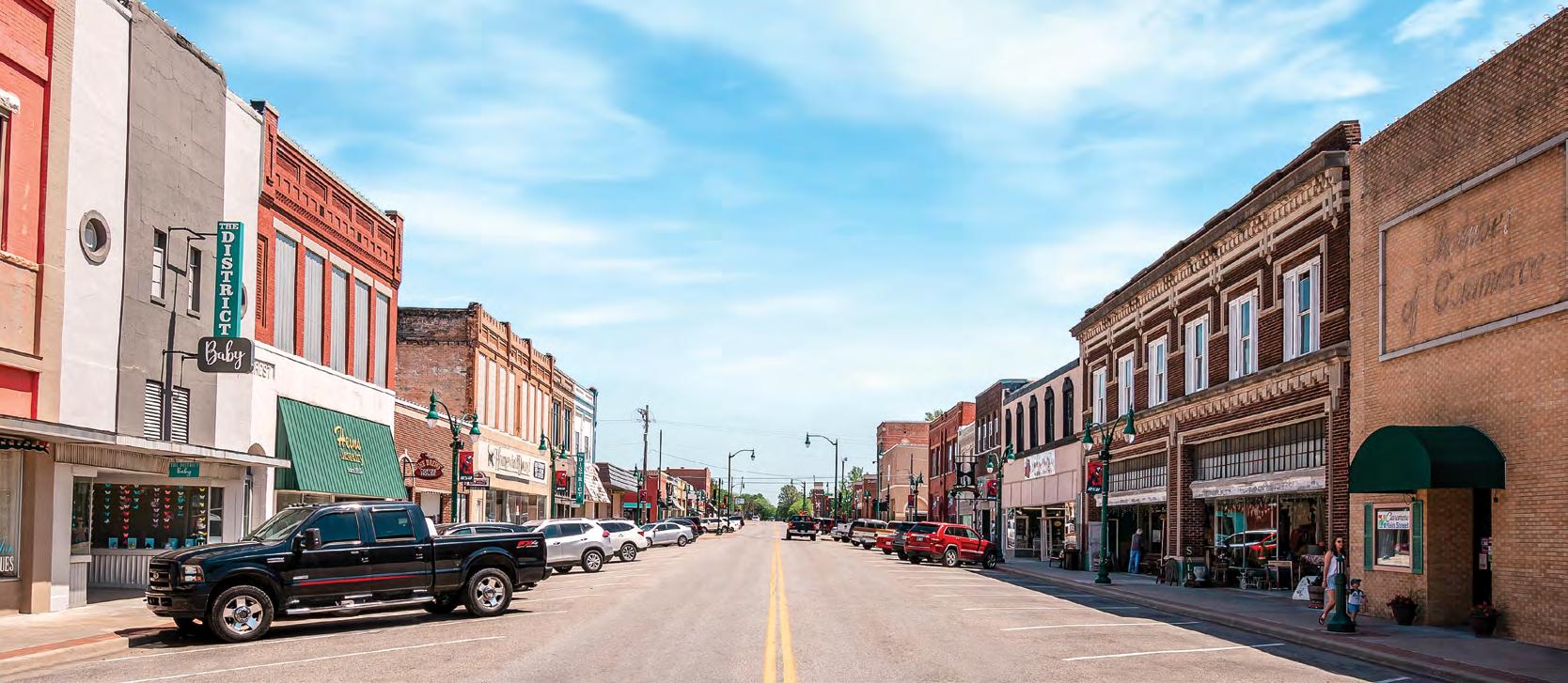
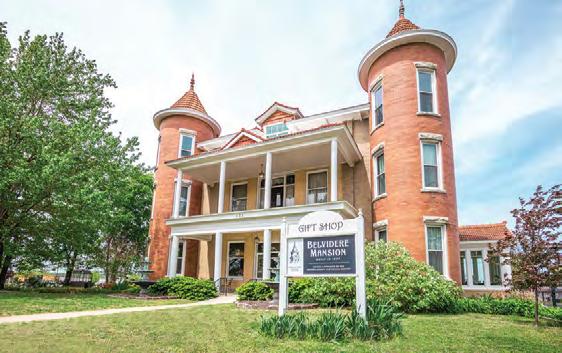





Remains of Cadiz Summit, East of Amboy, California. Photograph by Billy Brewer.
Vinita, Oklahoma, is home to a little café that has a big story. With a history that goes back to the 1960s, this humble but colorful eatery has a Mother Road tale that is packed with hopes, dreams, diversity, two giant guardians, and more than a pinch of ingenuity. This is an American story.
There are many places along Route 66 that collect and celebrate America of yesteryear. But some do it a little more unique than others. This is one of those stories. A story that began around 1930 with a filling station that fueled motorists for almost three decades. It then transformed into a beloved roadside attraction featuring a talkative, friendly truck driver. Today, under second generation owners, it stands as an iconic Mother Road stop where the legacy of America’s most famous highway is whimsically celebrated.
She is one of the music industry’s most respected female singersongwriters, and a performer who leaves it all out on the stage. With her husky voice and soulful blend of rock, folk, and blues, Melissa Etheridge has captivated audiences around the world since the 1980s, and she is nowhere close to slowing down. In this conversation, she takes us into her journey, both challenging and rewarding, that has brought her to where she is today.
If there is one town that evokes the spirit of the Mother Road, it would have to be Seligman, Arizona. And if there was one place in Seligman that truly captures the essence of Route 66, it would have to be the Snow Cap. This eatery is as famous for its tasty food as it is for its wacky antics, outlandish decorations, and for the endless gags played on patrons. Find out how it all began.
America is famous for its roadside attractions. It is the land of the unexpected, the bizarre. This is one of the nation’s biggest tourism draws. And down in southern Illinois, is a destination that has more questions that it does answers. Known as Cahokia Mounds, this once thriving settlement dating back to about 700 A.D., simply vanished. What happened and where did they go?
La Posada Hotel, Winslow, Arizona. Photograph by Efren Lopez/ Route66Images.


There is a commercial that I cannot get out of my head. Don’t you hate that? The main chorus says, “Summertime is here again… da da da da dum dum dum da da dum…” Okay, not very helpful, I know, but man is it stuck in my brain. Regardless, the message is right. Summertime is truly here again. It is June, and the leaves on the trees are green and abundant, and the birds are back in full force. I’ve always loved waking up to their song. Me, personally, I am thrilled with the start of the days of endless sunshine and optimism. I was born for summer.
Every year when my son closes school, my family and I hit the road, and investigate our beloved Route 66 and a host of other fascinating destinations. This year, we will be spending eight weeks on the historic highway, heading west to the ever-blue Pacific Ocean, and then venturing up the sunny California coast, before turning back east through Death Valley, into Nevada as we trace the country’s “Loneliest Highway” for another few weeks. After that, we have Utah on the horizon, and then back on the Mother Road to Chicago. It is a big trip, but it will be wonderful to be back with many familiar faces and places, and to encounter some brand-new discoveries and excursions. America is, without a doubt, the most diverse, beautiful country on the planet – and we plan to spend our summer soaking up as much of it as possible. I hope that you all get to do so as well.
Every year we seek to create an issue — June/July: The Big Summer Issue — that will do justice to the season. We aim to bring you stories, imagery, and celebrity interviews that will entertain, inform, and whet your appetite to get out and explore. This year is no exception.
In this issue, we take you on a journey into the history and people behind several of the most beloved destinations on Route 66. The Snow Cap Drive-In in Seligman, Arizona, has long been one of the most popular stops along the highway, but other than the Delgadillo family’s love of hospitality and great food, what do you know about the origins of this quirky establishment and the journey that it has taken over the decades? We promise you, after you finish reading this article, you will be even keener to pay them a visit.
Down in Missouri, just west of Springfield, Gary Turner built his love letter to the Mother Road, and it is as endearing today as ever. Now manned by his daughter Barb and her partner, George, Gary’s Gay Parita is a car stopper. I remember the first time that I traveled that route and the unusual — and unexpected — attraction came into view, we were immediately taken aback. We had to pull over! We wandered around, impressed with the huge collection of vintage signs and midcentury advertising when a gravely voice interrupted our reverie: “Where ya’ll from?” This is a story that just keeps getting better as the years roll by.
Down in Oklahoma live two giants. They are of the friendly and welcoming sort, and they too have a story. And the vintage café that they stand guard over has had a journey that makes for some entertaining reading. This year when you venture down America’s most famous highway, make a point of stopping in Vinita and grabbing a bite at the Hi-Way Cafe. But first, consume this story and prepare yourself for the carnival that is awaiting you along this fine stretch of the historic road.
These, and so much more, make up this year’s summer issue.
I hope that we will see you out on the road this season. It is always such a joy to meet fellow travelers and get an opportunity to celebrate classic Americana with our amazing readers.
Oh, in case you were wondering, that jingle is still rolling around in my head!
Stay well and travel safely.
Blessings,
Brennen Matthews EditorPUBLISHER
Thin Tread Media
EDITOR
Brennen Matthews
DEPUTY EDITOR
Kate Wambui
EDITOR-AT-LARGE
Nick Gerlich
LEAD EDITORIAL
PHOTOGRAPHER
David J. Schwartz
LAYOUT AND DESIGN
Tom Heffron
DIGITAL
Matheus Alves
ILLUSTRATOR
Jennifer Mallon
EDITORIAL INTERN
Chloe Cassidy
CONTRIBUTORS AND PHOTOGRAPHERS
Aaron Garza
Billy Brewer Brotherdale
Chandler O’Leary
Cheryl Eichar Jett
Dick Lyon
Efren Lopez
Jim Luning
Joseph L. Roberts
Kate Matthews
Lauren Dukoff
Mitchell Brown
Paul Richard
Sarah L. Boyd
Editorial submissions should be sent to brennen@routemagazine.us.
To subscribe or purchase available back issues visit us at www.routemagazine.us.
Advertising inquiries should be sent to advertising@routemagazine.us.
ROUTE is published six times per year by Thin Tread Media. No part of this publication may be copied or reprinted without the written consent of the Publisher. The views expressed by the contributors are not necessarily those of the Publisher, Editor, or service contractors. Every effort has been made to maintain the accuracy of the information presented in this publication. No responsibility is assumed for errors, changes or omissions. The Publisher does not take any responsibility for unsolicited manuscripts or photography.
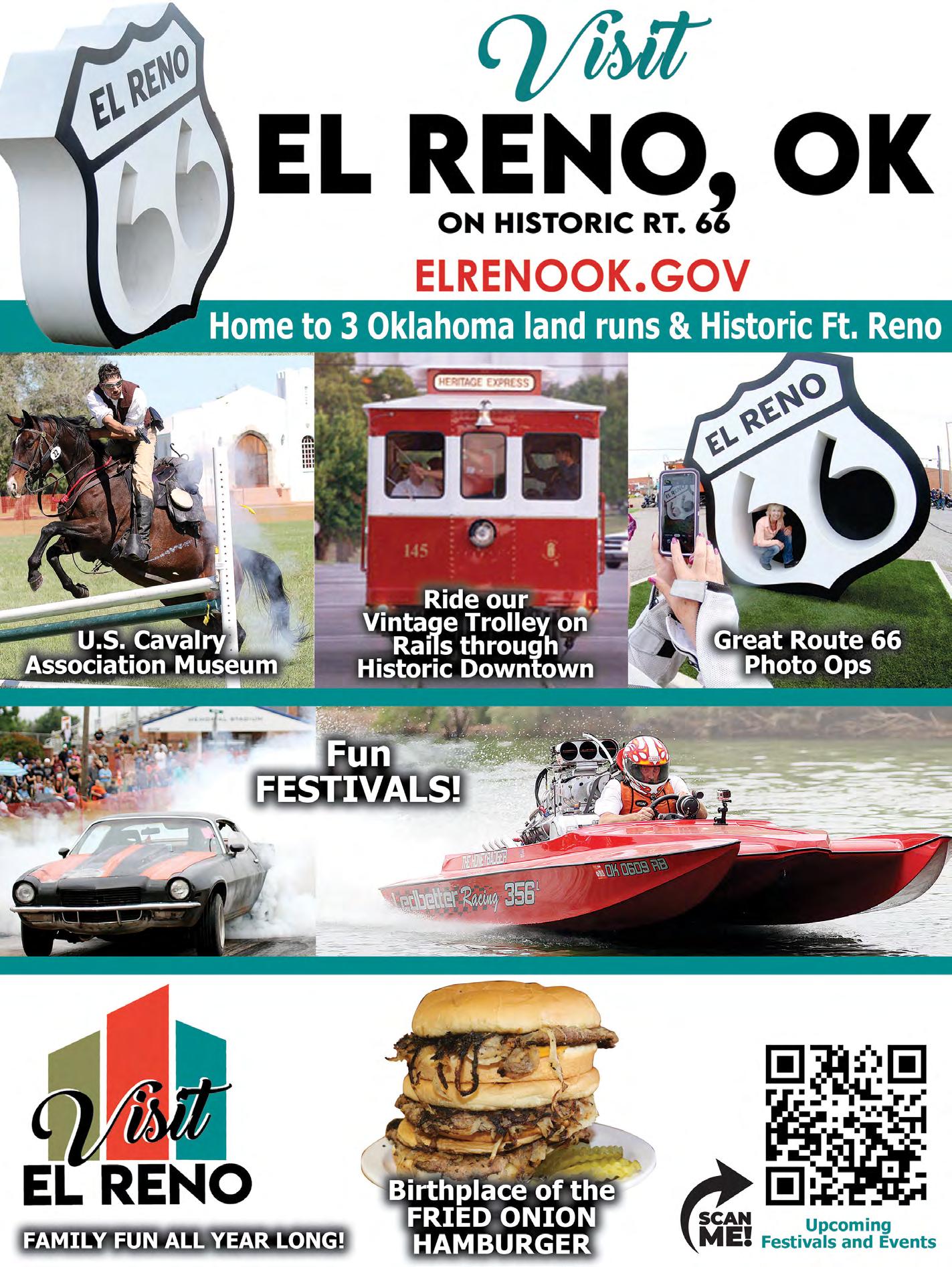

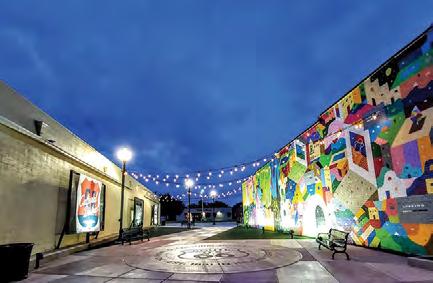

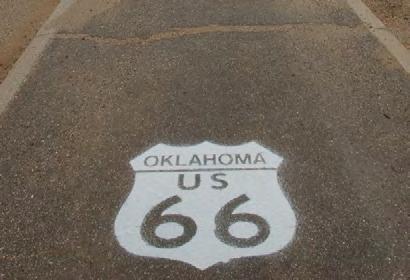

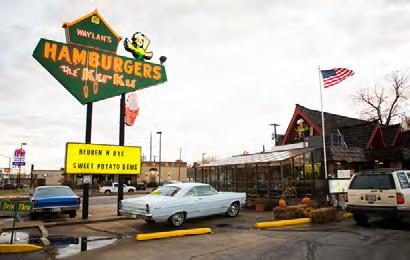

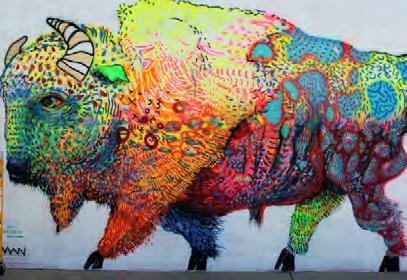


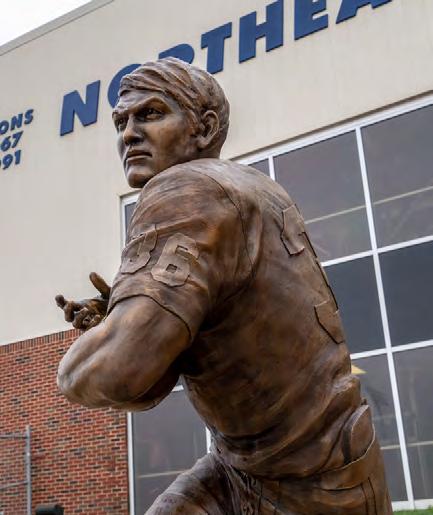










Ancross a windswept, desolate desert landscape, roughly 500 feet off Route 66, in the Mojave Desert and surrounded by endless nothingness, stand two striking lion-dog-like statues: Foo Dogs, they are called in the Western world. These around five-foot white marble statues, muscle-bound and fierce in appearance, with intricate detailing and striking, magnificent manes, sit stoically just about four miles east of Amboy, California. Mounted on cinder block pedestals, approximately 1.4 miles apart, these exotic beasts of the Orient seem to stand guard over something or, perhaps, someone. However, their presence here in the barren land, tormented by a relentless sun, remains an imposing mystery. Who, and what, are they protecting? How did they get here, and why? We love a good mystery and this one has perplexed travelers for a long time!
“It is completely empty. It is nothing but desert out there, it’s the Mojave Desert. There’s nothing around these lions for miles,” said Beth Murray, a member of the California Historic Route 66 Association. “It’s a big nothing patch of land with two statues about which no one has any freaking idea. I mean, the entire roadie family who prides themselves about knowing everything about Route 66 has no idea where these lions came from or how they got there.”
The history of Chinese guardian lions dates back thousands of years to the Han Dynasty. Symbolically seen as protectors, they were always featured in pairs, with the male on the right and the female on the left. These mythical animals were placed in front of entrances to temples, tombs, and other structures to guard and ward off spirits and intruders. And so it is with the Mojave lions. While the physical appearance of the Mojave lions may seem similar, each is identifiable by the symbols that they hold: the male, caught mid-roar, is on the right with its left front paw resting on a decorated ball, symbolizing the building or structure under his protection. To the left, is the
female with a lion cub under her right paw, representing the nurturer and protector of people dwelling within the home or structure. Which begs the question: why are there guardian lions out in the middle of nowhere without a building or person in sight to protect?
Stories of the sighting of the Mojave lions started popping up sometime in late 2013. Any leads as to what spawned them gave up nothing but a few sparse anecdotes of people who recalled seeing them outside a restaurant in San Bernardino, and hearsay about a Chinese company that was looking to create a luxury getaway spot out in the desert.

“So, there was a gentleman that lived out there…” continued Murray. “He’s passed away now, but he told the owners of the Roadrunner [Cafe] that there were plans on doing a kind of Palm Desert Resort.”
Perhaps issues with infrastructure led to this potential resort being canceled. Maybe someone decided it would just be fun to drop these statues out in the desert as something interesting in the Mojave for other travelers to ponder. Whatever the reason, the Mojave lions have become a much-visited roadside attraction where travelers have attached their own meaning, often leaving memorials, mementos from coins, teddy bears, and flags, to jewelry. There was even once a Facebook page dedicated to the Mojave guardian lions. But to date, no one has come forward to claim them.
Whatever these guardian lions were once intended for, now they stand as a marker for travelers heading down the National Trails Highway, an oddity in the high desert to be examined and to spark interest in just what else is hidden in the sand and dust beyond where the road ends. One thing is for certain: these creatures, who represent an ancient history, acting as gates without doors or walls, are now guardian protectors of the Mother Road and all who travel it through the desert.

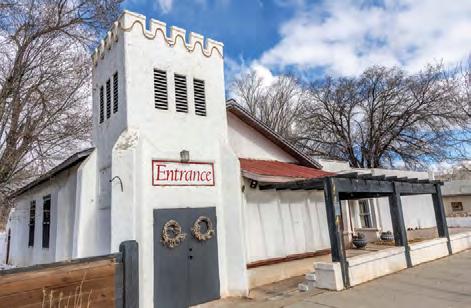
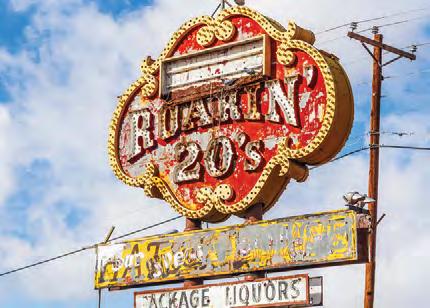










With a population of 981, Odell, Illinois, is undeniably a quintessential Midwestern town. Its motto, “A small town with a big heart where everybody is somebody,” captures its welcoming spirit. Nestled on Route 66 in Livingston County, Odell is a mere 76 miles from bustling Chicago, but the energy in the town could not be more different. It holds a serenity, a charm that is somewhat unique to Illinois’ stretch of Mother Road. Today, the town attracts roadside travelers keen to visit its beautifully restored 1932 Standard Oil Gas Station, now a Route 66 visitor center, and maybe stop for a bite at Cafe 110 West, but it was not always so sleepy. As a matter of fact, for a period of the town’s history, it was downright busy! During Route 66’s heyday, the town bustled to the extent of requiring a pedestrian tunnel for those on foot to safely cross the busy two-lane highway.
From 1921 to 1922, Odell witnessed the construction of the “Chicago-Springfield East St. Louis Road,” later renamed Route 4 and designated as Route 66 in 1926. Route 66, which cut straight through the center of Odell, brought both opportunities and its fair share of challenges. While it provided small-town residents with access to a major highway, it also disrupted their tranquil streets with increased vehicle traffic. It also impacted pedestrian safety as streetlights and stop signs were scarce in Odell during that era.
In 1946, a significant development occurred with the construction of a four-lane bypass of Route 66 located just one-fourth mile west of Odell. As a result, the bulk of traffic traveling between Chicago and St. Louis bypassed Odell, altering the town’s dynamics. “They still had crossing guards because there were about 11 gas stations that were still on West Street,” said Dave Sullivan, a Route 66 historian who attended St. Paul’s Catholic School. “There were a ton of gas stations and restaurants that were in Odell. And a lot of the houses, if you lived on West Street, you would just put in gas pumps by your house and sell gas during the daytime. An unbelievable number of people did that. In the small towns, that really happened a lot. I worked on Route 66 [during] high school, at a gas station, and it was just a great little town to grow up in.”
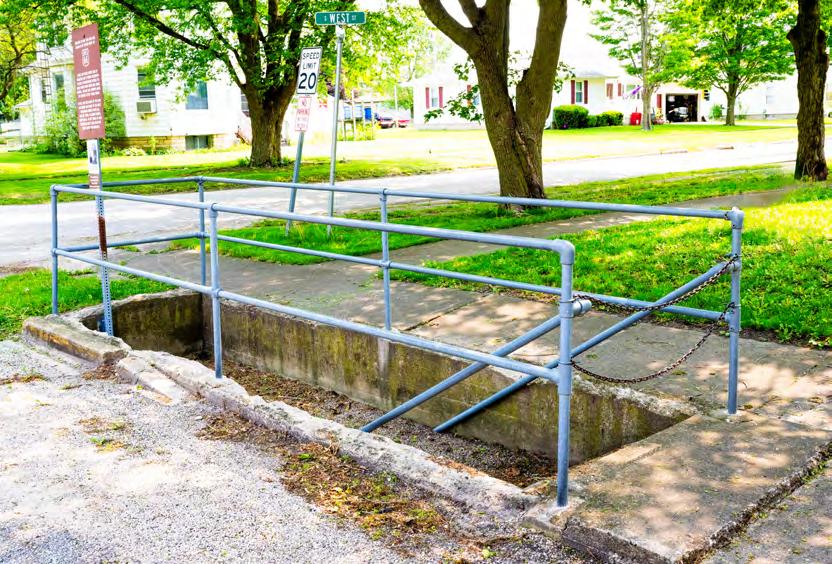
Student safety was a paramount concern for those attending St. Paul’s Catholic School in Odell. With the eastwest commute posing risks, the town and church authorities opted for an underpass instead of a stop sign. Therefore, in 1934, a 30 to 35-foot tunnel was constructed beneath Route 66 at the intersection of South West Street and West Hamilton Street, coinciding with the church’s location. This tunnel not only safeguarded students but also served as a passage for church members. Affectionately dubbed the “subway,” the Odell Pedestrian Tunnel became a symbol of community protection and convenience.
During that era, Pontiac, Illinois, situated a mere 10 miles from Odell, faced a similar predicament. Recognizing the parental concerns surrounding their children crossing Route 66, a comparable tunnel was erected in Pontiac. This tunnel catered to students attending the Ladd School, ensuring their safety, and easing the worries of the community.
While the St. Paul School continues to serve students from pre-kindergarten to eighth grade, St. Paul’s Catholic High School ceased operations in 1966 and the high school building was demolished in 1971. Coinciding with this — and as traffic dwindled — the tunnel was filled with gravel and securely sealed with cement, rendering it unusable. Similarly, Pontiac made a formal request in 1972 to 1973 for the removal of their tunnel. “The [Pontiac] tunnel became more of a nuisance than an asset. I’ve had some of my friends tell me that they got their first kiss in the tunnel in Pontiac. It was a hangout for a little privacy for teenagers. That is why the school board asked the city to ask the state to remove it,” said Sullivan.
In 2006, the Route 66 Association of Illinois Preservation Committee, alongside local residents, convened at the former entrance of the South West Street tunnel in Odell. Their shared objective was to honor history by unearthing a portion of the tunnel’s stairs, a meaningful act of preservation. A solitary marble was discovered on the second step, an artifact now housed at the visitor center. Additionally, committee members installed railing reminiscent of the original design along three sides of the partially unearthed tunnel, while a chain was placed across the front for added protection. Concurrently, a historic marker was erected beside the former entrance on South West Street, serving as a testament to Odell’s rich past, forever intertwined with the legacy of the iconic highway.

In the early 20th Century, the idea of a cross-country route connecting Chicago to Los Angeles began to take shape. It was a time when the nation was on the cusp of transformation, and the call of the open road beckoned to those hungry for exploration. In the Midwest, the original proposal was to bypass the towns of Waynesville, Lebanon, and Marshfield, because there were too many rivers to cross and the landscape too hilly. Fortunately, a group of insightful Lebanon community leaders lobbied the Highway Commission for a more direct route through their town. Their efforts paid off and the new U.S. Highway 66 through Lebanon was mapped out in 1926. The town became a vital pit stop along the highway, birthing iconic places like the Munger Moss Motel with its amazing, flashing neon sign.
However, as the years rolled on, interstate highways bypassed Main Street, and the once-bustling Route 66 in Lebanon fell silent. But the spirit of the road was not so easily extinguished.
A revival would be ignited in the form of a 36,000 square foot space: the Lebanon-Laclede County Route 66 Museum.
To better understand the museum, one must dive into the town’s library itself. From 1896 to 1936, Lebanon lacked an official library. Then everything changed on June 6, 1938. The city received its first library, later expanding to a brand-new building at 135 Harwood in 1951. Ten years later, they merged into the Lebanon-Laclede County Public Library.
Though it was a community effort, two men helped kick-start the project: Bill Wheeler, former president of the Lebanon-Laclede County Route 66 Society, and Gary Sosniecki, ex-publisher of The Lebanon Daily Record . With their proposal approved by the library board, Wheeler and Sosniecki took to the road for inspiration.
“We drove from Lebanon all the way to Joplin to stop at small museums and libraries to get some ideas,” explained Sosniecki. “And we sat down in a cubby hole at the Joplin Library… and we sketched an idea for the museum and how it should be laid out. And I was amazed, years later, that the architect adopted many of the ideas we had in that sketch.”
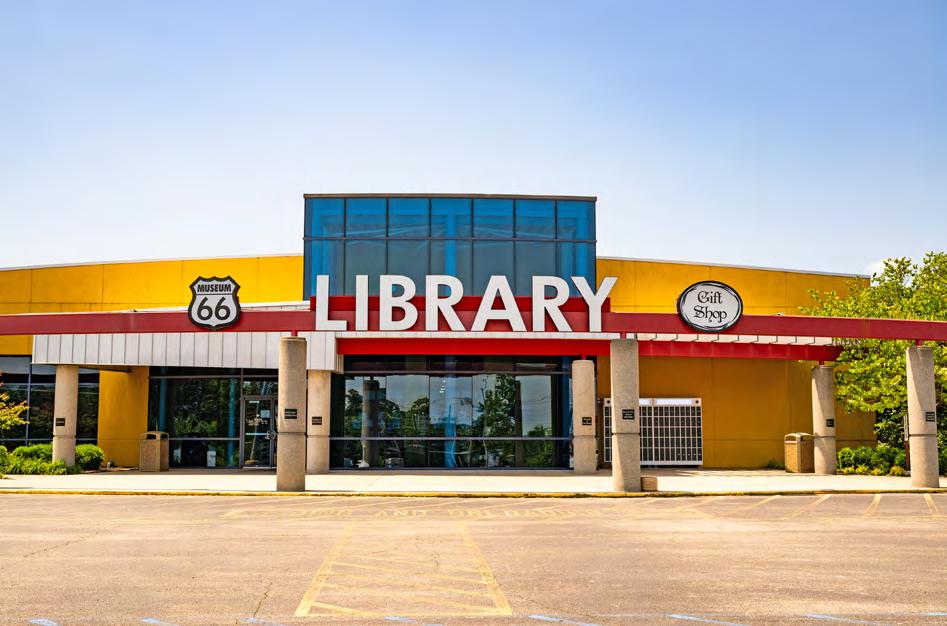
In 2004, the Route 66 Museum opened its doors to the world. Built within Kmart’s former garage, visitors to this self-guided museum are welcomed with a giant Route 66 shield displayed across the sleek floor, alongside a colorful mural painted by local high school students depicting vintage landmarks from the west to the eastern side of Laclede County: the Harris Cafe and the Harris Cabins from Conway, Missouri, to name a few. Filled with exhibits that showcase the evolution of Route 66 — from its humble beginnings in the 1920s to its heyday as the Main Street of America — the vintage gas
But there was a problem: the one-story Harwood Building’s space was limited.
In 2000, the library board responded to the demand for a bigger space, but they were struggling to find an adequate home. Fortuitously, the old Kmart in town was put up for sale, and with 60,000 square feet of space, it had more than enough room for the hefty collection of books and then some. The library board purchased the building in 2002, and a $6 million remodeling project began in 2003. Around the same time, a group of passionate locals, fueled by a deep appreciation for the cultural significance of Route 66, had a vision to include a Route 66-focused museum in the library. A place that would honor the Mother Road’s legacy in Lebanon.
pumps, neon signs, photographs of the town’s motels, diners, and roadside attractions all offer a glimpse into a beautiful bygone era. One of the museum’s most prized displays is a replica Phillips 66 gas station with two pumps and a black Model A brewing car.
“We decided on that location because there’s a garage door where you can pull classic cars into the museum and change them out periodically,” said Sosniecki. “It became a lot easier, when someone donated a car, just to be in the museum.”
From a retro diner featuring a classy jukebox and an old cash register, to a detailed diorama dedicated to Colonel Arthur Nelson’s “Nelsonville” — whose land donation was fundamental in Route 66 running west of Highway 5 in Lebanon — the Route 66 Museum stands as a guardian of memories and a storyteller of a bygone era that reminds visitors of the importance of this quiet Missouri county.
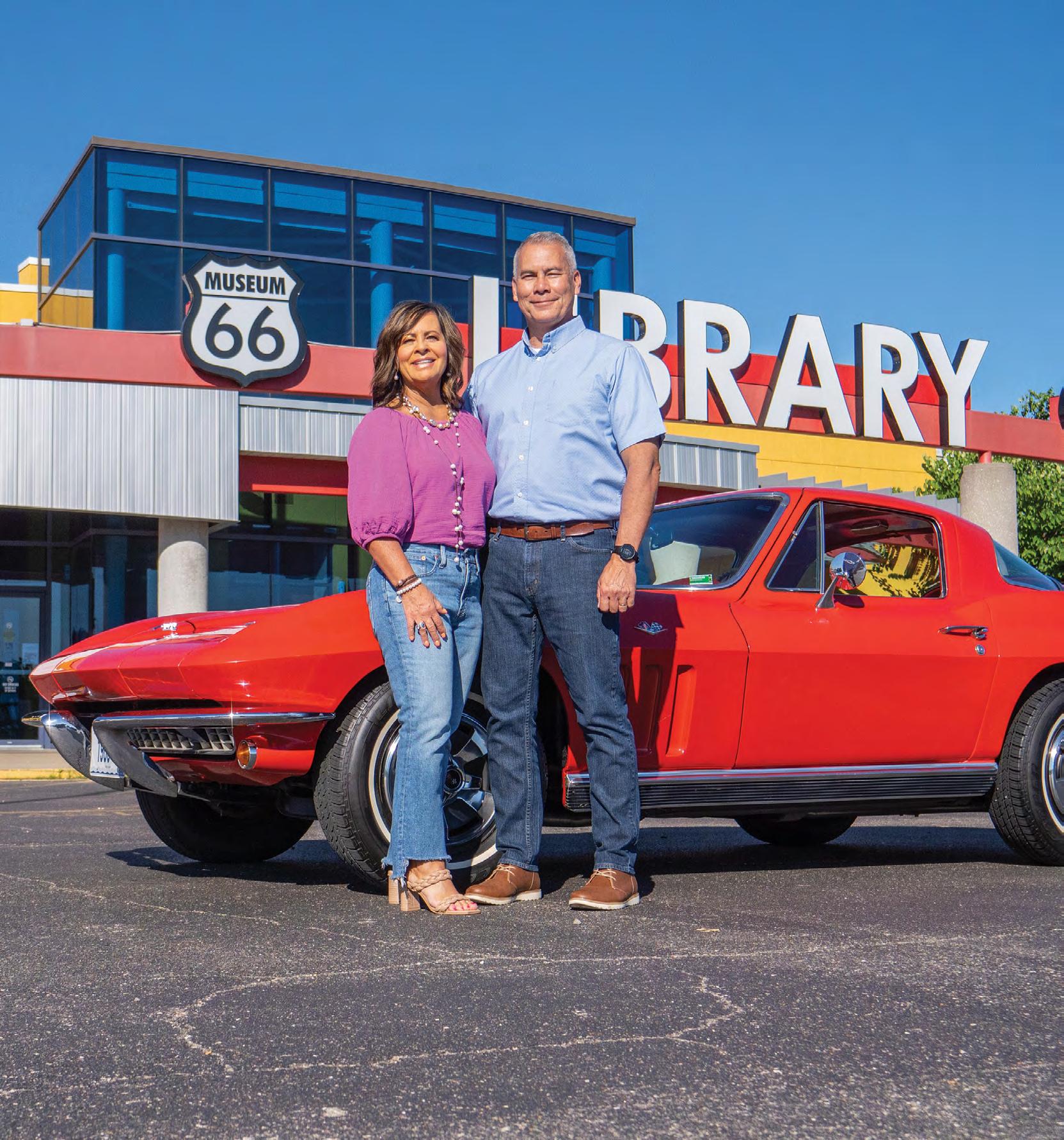

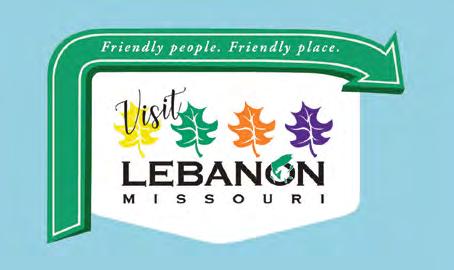
MORE THAN
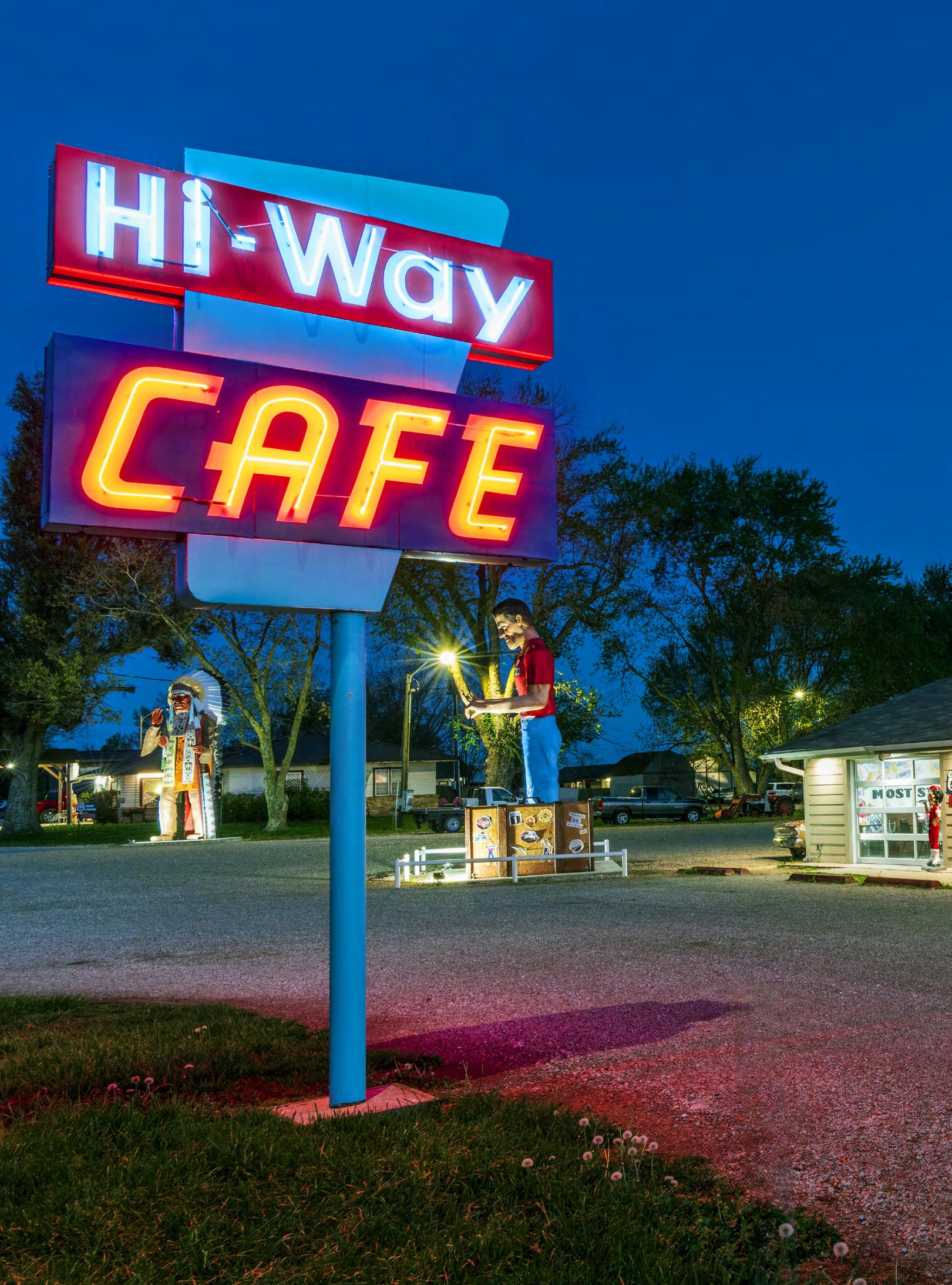
 By Cheryl Eichar Jett
Photographs by Efren Lopez/Route66Images
By Cheryl Eichar Jett
Photographs by Efren Lopez/Route66Images
Vinita, Oklahoma, has not been called “The Crossroads of America” for nothing. The second oldest town in the state, it was along the path of the Texas Road cattle trail and later the Jefferson Highway, part of the early National Trail System. (Today, U.S. Route 69 approximately follows the path of both earlier roads.) When U.S. Highway 66 began its east-west crawl through Oklahoma, it cut right across Vinita at the southwest edge of town. Not known just for its plethora of roads, Vinita was originally established at the crossing of the Atlantic and Pacific — now Burlington Northern Santa Fe — and the Missouri, Kansas, Texas — now Union Pacific — Railroads. The city is still an intersection point for those two railroads, plus nowadays, the town is known as the “Crossroads of Green Country,” the Northeastern corner of Oklahoma. In 2000, a crossroad of another kind was faced by a young couple in Dallas, Texas, who wanted a richer family life for their growing family — including grandparents. Would they stay in Dallas with their own parents scattered elsewhere? Or could they find the perfect spot for all to agree to move to? Eventually, they settled on Vinita, where after a bit of time, they would serve travelers passing through town on all those old roads (plus Interstate 44) with a modest motel and a café next door that, with a newly-restored neon sign, a Muffler Man, and a Big Indian, splashed itself all over social media in 2023.
Tom Schwartz Builds a Café — Twice
The café got its start when in the mid-1950s, a young Oklahoma man, Tom Schwartz, had an idea. As a child of Vinita, he had watched the traffic whizzing through town on east-west Route 66 and observed the north-south travel on the Jefferson Highway. He saw an opportunity. On an auspicious spot southwest of town, Schwartz built a truck stop with a café and a small motel to garner a share of the business from all those motorists. He called it “Champlin” Truck Stop, but today, no one seems to know why he chose that name for his enterprise. Like much along America’s Main Street, this nugget seems to be lost to history. But whatever the name, Schwartz was in business. That is, until the early 1960s, when the Oklahoma Highway Department let Schwartz know that new westbound lanes to make this stretch of Route 66 a fourlane highway would be constructed right through his truck stop, which would be condemned. The State of Oklahoma bought him out and put his buildings up for sale by auction. Apparently undiscouraged, Schwartz bought his buildings back — except for the tiny motel — and hired a crew to dismantle and move them 100 feet north. There, he began to rebuild his business, reusing everything he could. But he took things a step further in this location. He installed a neon sign
of his own design, and his rebuilt eatery became the Hi-Way Cafe. It opened in 1963. From that point on, the café has been open continuously under one operator or another. Schwartz himself did not run it for long before a string of other operators took over the café, changing hands every now and then throughout the rest of the 20th Century and into the 2000s — through good times and bad.
In Dallas, it was about the year 2000, and Beth and Alan Hilburn, who had been high school sweethearts, had a good life together. Beth worked in the marketing department at American Airlines, and Alan had his own trucking company. And they had a young daughter, whose care they shared so she didn’t have to go to daycare. But they wanted more. They craved a family setting somewhere where they could be near Beth’s parents, at that time living in west Texas, so that their children — there would be two more — could grow up with grandparents nearby. Beth remembered growing up without her grandparents nearby and didn’t want her children to experience that, too.
They began looking in Oklahoma — Beth had grown up in the Sooner State and still had cousins there. And then Beth’s parents, Bill and Barbara Wood, settled the issue. The Woods had experience operating small motels, and when Beth discovered the Western Motel on Route 66 just outside of Vinita, Oklahoma, the Woods knew the right thing to do to make the family dream of living near each other come true. Purchasing the Western Motel, they moved to Vinita from west Texas.
The Hilburns followed in September 2001, leaving Dallas behind. Conveniently, a charming “giraffe rock” 1940s-era house with 40 acres sat just west of the Western Motel. It was available, and the Hilburns moved in. There, right next door to her own parents, Beth and Alan raised their children alongside their grandparents. At first, Beth commuted back and forth to Dallas to keep her marketing job, but then she reached another turning point.
“We were rolling along, and then about eight years into [my parents’] ownership of the Western Motel, the café, which was a struggling Mexican restaurant at the time, went up for auction,” Beth explained. “My dad said to me, ‘I am thinking about buying the café next door, just because it’s a good business decision. I would like it if you would run it for six months, just to get it off the ground.’ And I was like, ‘Oh, okay, anything you need me to do.’”
Bill took his daughter up on her offer and proceeded to buy the Hi-Way Cafe at auction on March 24, 2011. From that day on, Beth and Alan’s daily lives changed immediately, from a steady routine of domestic life and employment elsewhere to playing every role in running a small-scale eatery.
“My dad signed the papers in the morning, and Alan and I took over that afternoon as cook and waitress. The old owners left, and we just walked in. We never even closed one day,” said Beth. “It was crazy, but we knew that we had payments, so we just went to work. To me, that shows exactly what a small business person does. It reminds me of a duck — you’re smiling on the top of the water but underneath you’re pedaling like crazy just to get going.”
Beth and Alan kept pedaling through the years as their clientele grew. And eventually, they ended up with the
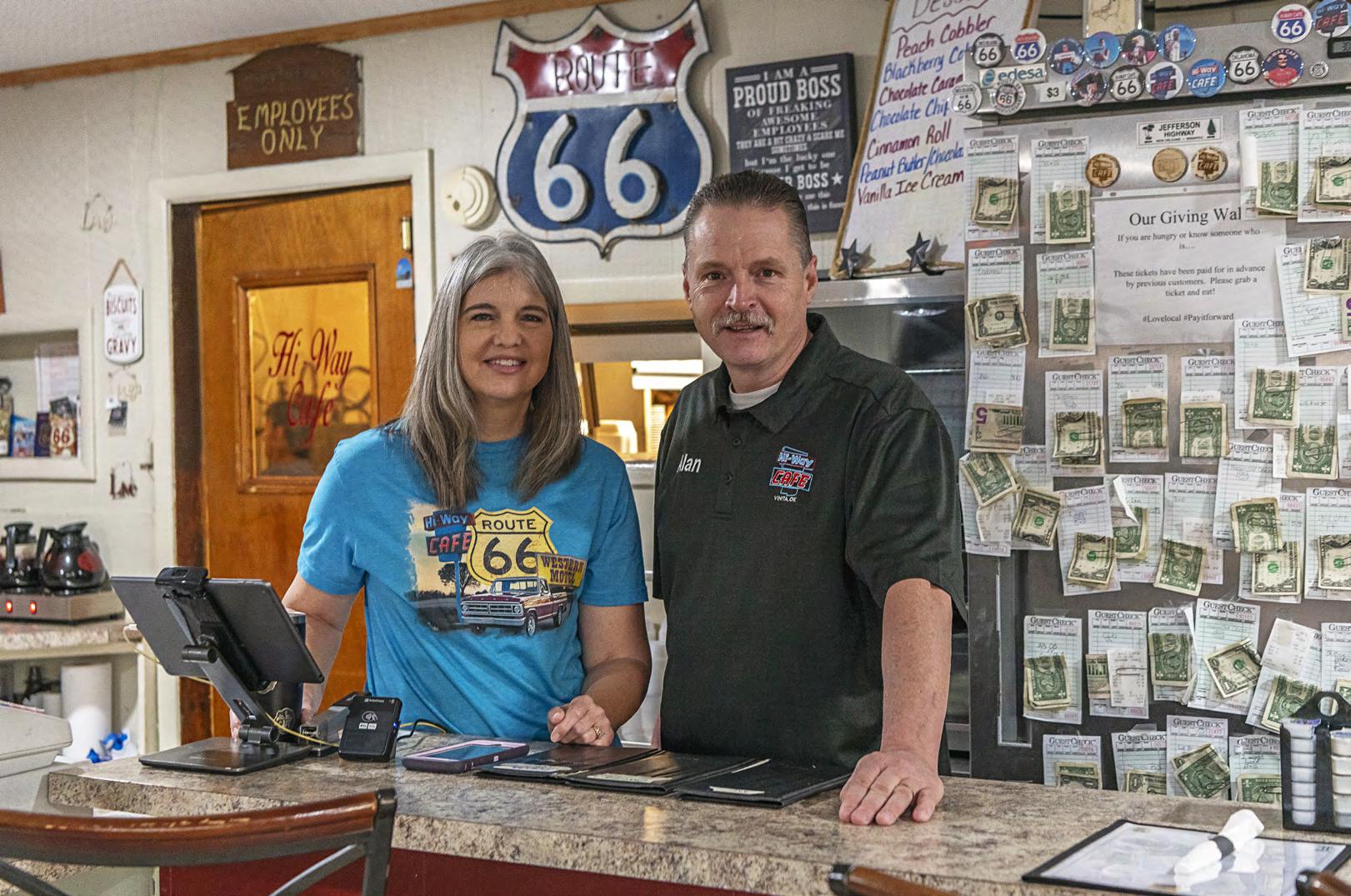
‘50s-era Western Motel as well, after Bill Wood, her father, passed away in October 2020. “It was just too much for my mom to run without him. She was alone with just the memories. So, we moved her to our house and then we took it over that following January. Really, the last 10 years of my dad’s life there wasn’t a lot of maintenance that was done. So, we’ve remodeled 18 of the 20 rooms so far, which is super fun. Some are Route 66-themed and have pictures of the motel from the early ‘70s and pictures of the café — what it looked like back in the day.”
In 2022, two grant applications were submitted that paid off big time. One would have a huge impact on the café’s visibility and popularity — it would restore the iconic redwhite-and-blue sign that Tom Schwartz had designed back in 1963. The Hilburns, the Oklahoma Route 66 Association, and the Route 66 Association of Missouri’s Neon Heritage Preservation Committee had begun the cooperative process early in 2022 of applying to NPS for a 50/50 cost share grant by National Park Service, part of its Route 66 corridor preservation grant program, to restore the Hi-Way sign. This grant application was accompanied by 20 letters of recommendation — more than any other neon sign project submitted to the NPS grant program in its 22-year history! The grant was awarded later in the year and the sign was taken down on January 6, 2023, for its restoration by Encino Signs in Tulsa. New glass tubes were shaped by hand to replace the neon that had gone out decades earlier. And the
colors for the new paint job were accurately restored thanks to a 1980s photograph luckily taken by Route 66 artist and photographer Jerry McClanahan. (More about the sign’s return and re-lighting event in just a minute.)
The other successful application was for a grant program backing historic small restaurants, funded by the National Trust for Historic Preservation and American Express. Twenty-five restaurants across the U.S. were selected to receive the grant, and for the Hi-Way Cafe, it meant an additional 30 seats inside the café, outdoor murals, and security cameras and lighting.
While these additions were in progress, the couple’s “giving wall” inside the café, where customers could pay for meals for others who needed them, was getting noticed, and filmmakers arrived to include the café in a documentary. Next, in an incredible chain of events, the Hilburns heard from Mobil 1, who had a muffler man on tour that would arrive in their parking lot in October 2022 for a visit.
“Mobil 1 had decided that instead of spending money on television advertisements, they were going to invest in the road’s small businesses and try to bring awareness to them,” Beth explained. “They started their ‘Keep Route 66 Kickin’ campaign with a Muffler Man with a suitcase — ‘Big Bill’ — in California, and they were transporting him along Route 66 to iconic stops. Their last stop was scheduled to be the Litchfield [Illinois] Skyview Drive-In. There, they actually broke a Guinness World Record for the most dogs at a drivein movie!”
After the 199 officially-counted canines at the Skyview Drive-In, Mobil 1 continued their Guinness Book of World
Records streak with other campaigns, and the Hilburns were interested in participating. Some friends had a 1963 AMC Rambler for sale, which intrigued the couple, especially since their café also dated to 1963. So, as part of the “Keep Route 66 Kickin’” campaign, the Hi-Way Cafe and Mobil 1 began a campaign to achieve the World Record for Most Stickers on a Car: 66,000! Afterwards, the layer of stickers was coated to protect them, and the Rambler was parked in the “garage,” a fun addition to the café with additional seating and a jukebox. On March 7, 2023, just a couple of weeks before the sign re-lighting, another 1963 Rambler was given a home at the café to allow visitors a chance for a photo op and to “sticker” this car themselves with random stickers.
On March 25, 2023, the results of the efforts to get the original Hi-Way Cafe neon sign retored paid off big time, as a crowd of about 200 from at least six states cheered the achievement. Tom Schwartz, the original owner who built the café and installed the sign in 1963, flipped the switch to relight the neon sign, and social media subsequently lit up with photos of the newly restored and installed neon sign. With owner-operators in charge of the Hi-Way Cafe, Tom had moved on up to Kansas City, but made the trip down to Vinita especially for the sign re-lighting event. It’s a good thing that he did because, sadly, he passed away just three months later at the age of 87.
The same day of the sign re-lighting, Beth Hilburn had an exciting announcement with some news she’d been saving for the sign event: Big Bill, the Mobil 1 Muffler Man holding his “Keep Route 66 Kickin’” sign, would be coming back to the Hi-Way Cafe — this time to stay. “The Mobil 1 storyline was that Big Bill had traveled all of Route 66 and he had chosen to come back to the Hi-Way Cafe to live out the rest of his days. I thought it was a great plan. I loved it.” And so, the Muffler Man and his suitcase arrived in April 2023 to stay.
Then, in August, the Hilburns announced that Big Bill would soon have a large friend joining him. The “Big Indian” had stood on the Mohawk Trail outside of Charlemont,
Massachusetts, for 49 years, but his creator Rodman Shutt had passed away. “American Giants” Muffler Man expert Joel Baker contacted Beth to see if they would be interested in buying him from the current owner. The Hilburns purchased the 20-foot-tall Big Indian, who would arrive at his new home in Vinita on November 10 after some restoration.
“To be honest, I couldn’t say ‘yes’ fast enough,” Beth said. “I wanted to preserve him. That was my main goal. The craftsmanship was amazing. I felt like, as a piece of art, he deserved a new home. As a proud Delaware and Cherokee tribal member, it is an incredible honor to be able to bring him to Oklahoma where he can now call the Western Motel and Hi-Way Cafe home.”
If the 2023 attractions put the Hi-Way Cafe on the Route 66 travelers’ map, then certainly the Hilburns’ food delivery service from 2020 to 2021 endeared the café’s owners to Vinita residents. The couple’s answer to two predicaments caused by the coronavirus pandemic — get food to local residents and keep their own employees — was to create a food delivery service.
“We actually went to seven days a week when we started delivering meals to people. We also started delivering boxed groceries to people, so you could order a box of, say, hamburger fixings,” said Beth. “Then, we started doing family style meals. It helped everybody. We were trying to think of ways that we could serve the community and keep us going during that time.”
Now, as 2024 is well into its travel season, other amenities have replaced the food delivery service. A varied menu features something for everyone, and customers can choose to eat inside, where there are now 94 seats, or at a picnic table out under the shade trees. There is a once-a-month Saturday Steak night to try, and during regular hours, it’s worth checking your eating utensils, because an unexpected set of vintage silverware with your meal means a free dessert.

“The Hi-Way Cafe has become a go-to eatery on Route 66, cherished by locals and a rising star among road trip destinations,” said Jackie Stewart, executive director of Green Country Tourism. “Offering a menu brimming with home-cooked fare, it promises an authentic taste of the storied Mother Road. Enhanced by the impressive Big Indian and the iconic Big Bill muffler man, this café stands out as a must-visit landmark on the historic highway.”
Early Oklahoma travelers found Vinita pretty easily — trails and railroads led to the little town. Now highway travelers from all directions can hardly miss Vinita with its attractions and hospitality businesses. A restored neon sign, a Muffler Man with his huge suitcase, a Big Indian, and plenty of good food and fun promotions bring many of them to the Hi-Way Cafe. Here, a couple’s intentions to move nearer to family intersected with an old café that needed a future. You just can’t beat a good crossroads.


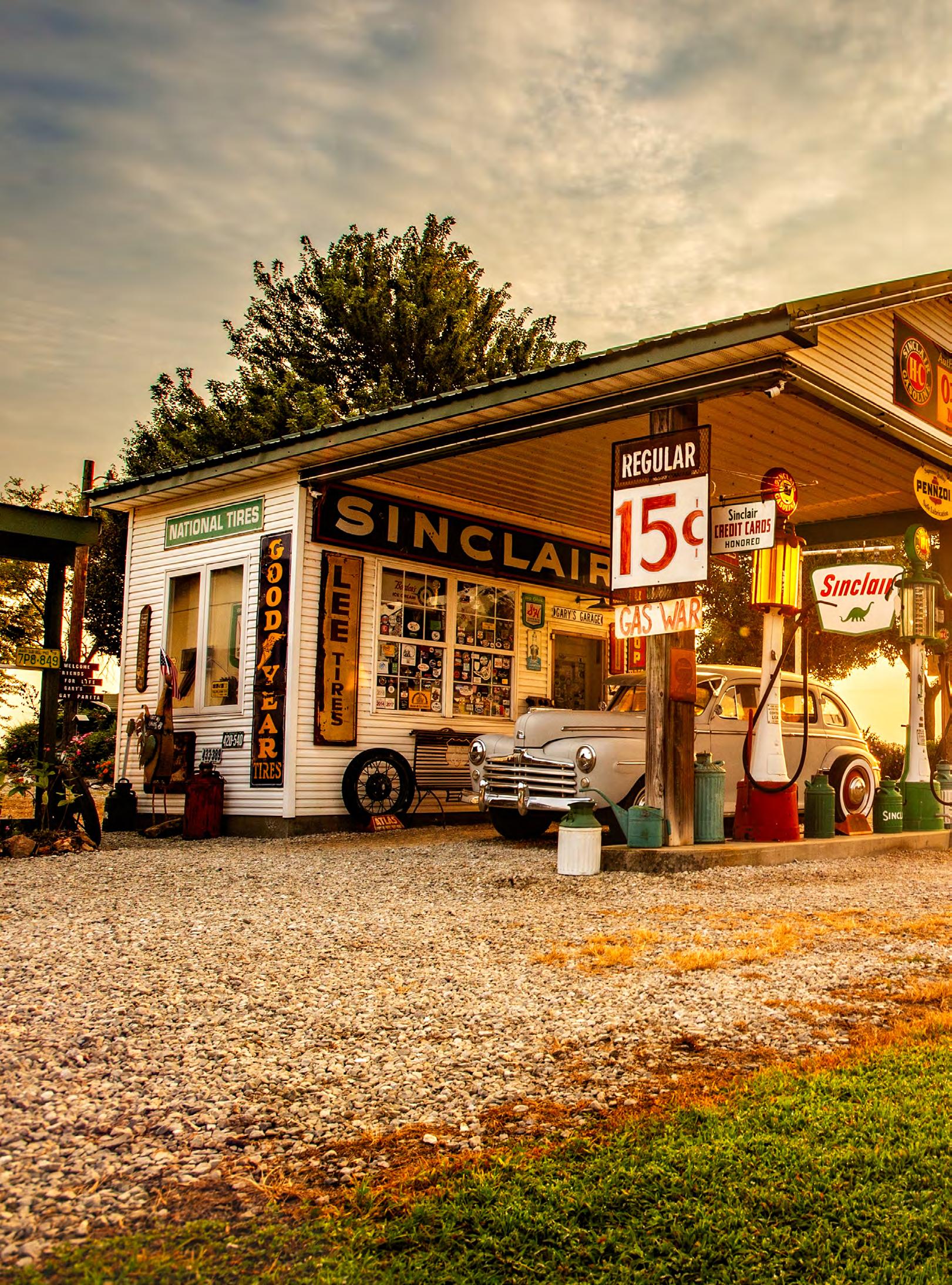

Let’s say you are planning a trip down Route 66. This has been a lifelong dream, something that popped up on a social media feed, or something on the news that piqued your interest. Common knowledge has you knowing generally what Route 66 is, where it goes. A couple of Google searches, an Amazon purchase, a visit to some Facebook groups, and you’ve got some maps and a few stops that are “must do’s” along the way. There is a lot of information out there about places along America’s most iconic highway. Stories of historical events, places and monuments, but what makes the trip most interesting is that there are characters at every turn along Route 66 and seeking them out is all part of the fun.
The characters that help turn a roadside point of interest into a celebrated landmark or a “must-stop” are usually as much of the attraction as the architecture or spectacle itself. It is the unique, eccentric, or the larger-than-life personality behind these celebrated landmarks that make all the difference. But rarely do these gallant personalities outlive the curiosities or monuments they have created. Then what? Hopefully, a new caretaker, with as much passion, comes into the picture to maintain the legend and memory. Such is the case for one of the Mother Road’s most acclaimed roadside stops; Gary’s Gay Parita in Paris Spring Junction, Missouri. The hero of the next chapter in the legacy of Gary’s Gay Parita and its creator, Gary Turner, is unsurprisingly his daughter Barb and her incredibly gregarious partner George.
As you head west out of Springfield, Missouri, you can take “Old Route 66,” or I-44 to Route 96. Not too far past the tiny locale of Halltown, the two alignments come to a point, aiming you straight at Gary’s Gay Parita. Right there at Old Route 66 and Missouri County 1210 sits one of the state’s most beloved Mother Road destinations: a replica of a Sinclair Gas Station, twice burned down and resurrected. Gary’s Gay Parita is known throughout Route 66 communities as a must-stop destination, mostly because of its amazingly friendly creator, Gary Turner. A beloved character whose passion for Route 66 — and his ability to sit and chat with anyone like an old friend — engaged and entertained visitors from across the globe. What had initially been built as more of a man cave project quickly turned into a storied Mother Road landmark.
Some history to set the stage. In 1926, Fred and Gay Mason bought 80 acres of land on which to graze cattle and open a gas station and motor court. The station was built between 1926 to 1930 and lovingly named Gay Parita. The name was a combination of Fred’s wife’s name, Gay, and the Italian word for “parity” or “equal”: parita.
Fast forward to 1953, a spark set the station ablaze, burning it to the ground. Not to let a devastating fire snuff out their business, Fred and Gay simply rebuilt the gas station, but yet again, in 1955, the embers of fate had other plans and the station was set ablaze one final time. However, this time, Fred and Gay decided not to tempt a trifecta and did not rebuild. The underground tanks were removed, and the cows roamed freely, but a stone garage remained.
In the early 1980s, the land was sold to Gary Turner’s brother-in-law and sister, Steve and Leah Faucet. During this time, Gary had been working on various enterprises, from being a sharpshooter at Knott’s Berry Farm, to running a used car lot, to professionally driving a truck throughout the Midwest. Gary was not one to sit idle. However, as the years flew past, Gary, along with his wife Lena, began contemplating the next enterprise they could embark on. Gary was planning his retirement. In 2003, he bought the property that the original Gay Parita gas station was on from his brother in-law, Steve, and set to work on a new project. The idea of recreating this piece of history, for the third time was going to be the next adventure in the Turners’ life.
Steve Faucet and Gary’s nephew, Steve Jr., were charged with the construction of the “new” Gay Parita, and there was a lot to get done.
“The idea of Gary’s Gay Parita started in 2003, 20 years ago now, when my Dad bought 2 ½ acres from my uncle. Then about 2006, I believe, is when he started recreating the gas station,” said Barb Turner, Gary’s daughter. “I’m not exactly sure how long it took to build — I was in Charleston — but I know that [initially], there was a gas station on Route 66 that my dad wanted to move here.” But her uncle had another idea. “He said, ‘No, I’ll build one for you on the property.’ So, my dad had my uncle and cousin build the gas station. Back then he used to serve watermelon and stuff under a tree to all the bikers that came by. Then he decided to build the pavilion so that he could feed watermelon to all the motorcyclists and tourists, too. I believe that he built the shirt shop last.”

If you are going to have a reimagined old-timey gas station along one of the most famous roads in the world, you need to make it look authentic. Steve Faucet had a few interesting pieces of gas station memorabilia that he donated to Gary to get the station started, but Gary himself quickly became an avid collector and preservationist.
“My dad really started collecting when he bought the place. I think he wanted to give something back to Route 66. He was a truck driver, he was born in Missouri, and we actually lived off Route 66 in Springfield. We have an original sign out there from when Gay and Fred owned the place. My aunt and uncle said that they pulled it out of the dirt when they had the property. So, it’s in pretty rough shape, but you can see where it says cabins on it, and it was for Coca-Cola. So, it’s neat,” continued Barb.
Gary’s Gay Parita was on its way to becoming a Route 66 must-stop icon over the next dozen years. Gary became known along the Route as a sociable and knowledgeable
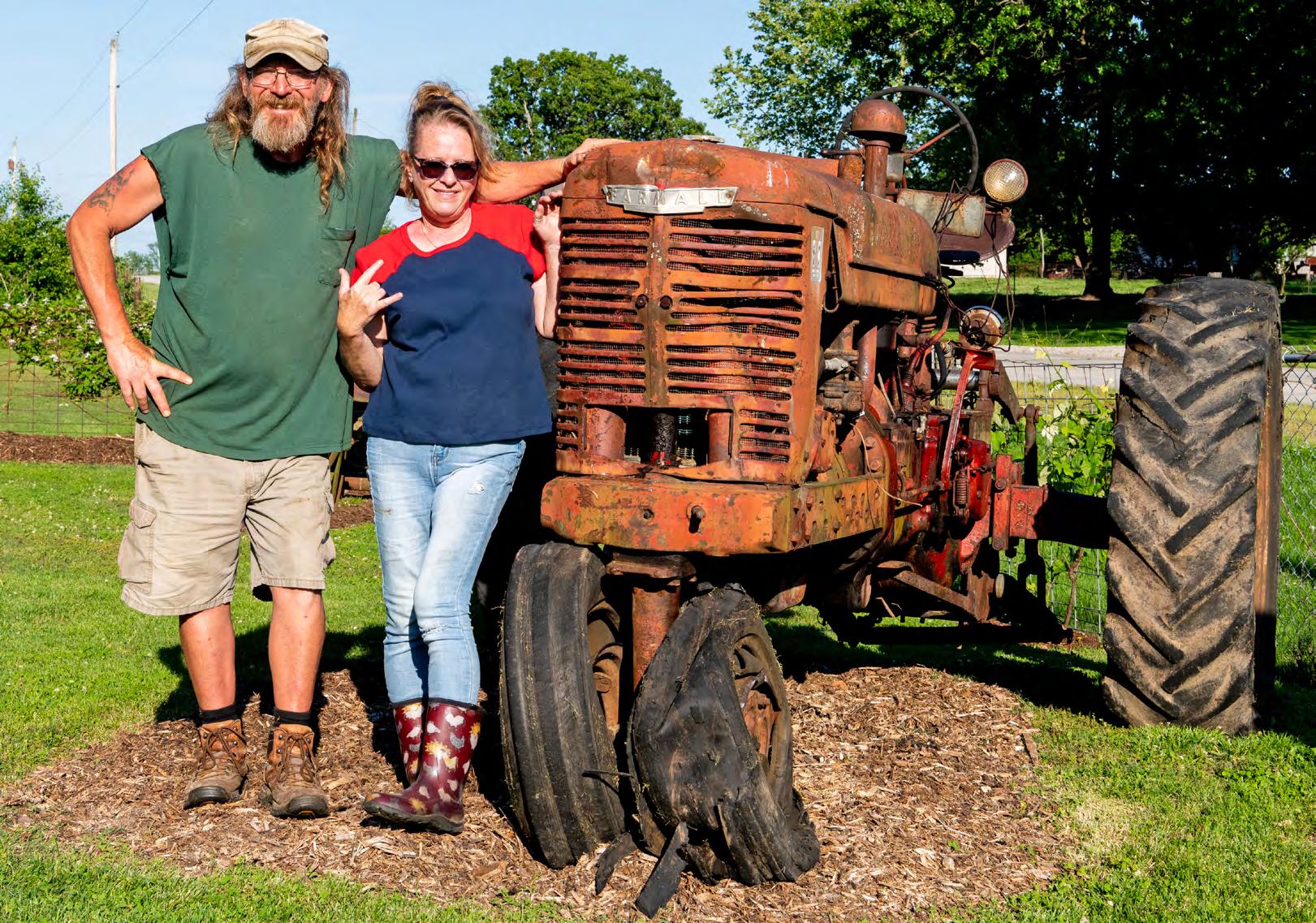
character who could sit and talk to anyone from anywhere. Gary and his wife became well-known and beloved among travelers and fellow Route 66 merchants.
In 2014, a series of health issues hit both Gary and Lena causing the project to take a back seat and close while the couple sought treatment.
Gary had been a lifelong smoker and emphysema, heart attacks, and a stroke had taken their toll. Lena, too, was not well and suffered from diabetes and cirrhosis of the liver. Travelers would continue to stop, however, and take photos — but there was no Gary or Lena to greet them. Sadly, on January 22, 2015, Gary passed away and, not long after, on May 18, 2015, Lena followed her husband of 56 years.
Gary’s Gay Parita had become a destination along a long, narrow historical journey. His business was a picturesque recreation of a time that once was, a true draw in its own right, but Gary himself was as much, if not more, of the pull for the crowds. With the passing of the entertainer, the owner, the soul behind such a place, one wonders if the attraction can carry on without them. What does it take to carry a legacy? Without a focus on preservation, often iconic landmarks simply get sold and repurposed, and something more profitable is put in its place. This was the crossroads of Gary’s Gay Parita. Almost a year had gone by since Gary and Lena had passed, and while relatives
had pitched in to secure and maintain the property the best they could, there was no one there to greet travelers. Signs started to get pilfered, the weeds grew — a reminder to those who had hoped to see Gary or Lena that they were no longer there — and an era had truly ended. But there was a glimmer, a slight hope still in the family.
During Gary’s hospital stay in January of 2015, his youngest daughter, Barb Turner-Barnes, made a promise to her father that she would return home and take over the family business. She would be the one to carry on the torch that her father and mother had lit on Route 66.
“I told my mom, it’s not going to be a process where I can’t get here in a week, because of course, I had to get rid of a lot of things. I had to put my house on the market. It’s a process of getting all those things done. And then I had worked for Carmike Cinemas for 23 years. I had to let them know a while in advance because I didn’t just want to put in a notice and say, okay, bye. So I let them know once my house and stuff was sold, that I would be moving back to Missouri to reopen my dad’s station. When I told George what I needed to do, he was [like], ‘Okay, let’s do this’; he was super supportive, but it was probably a nine month process to get ready and make the move. We got here, April 1st of 2016.” said Barb.
After Lena’s passing, and before Barb and George could get moved back to Missouri, there needed to be an action
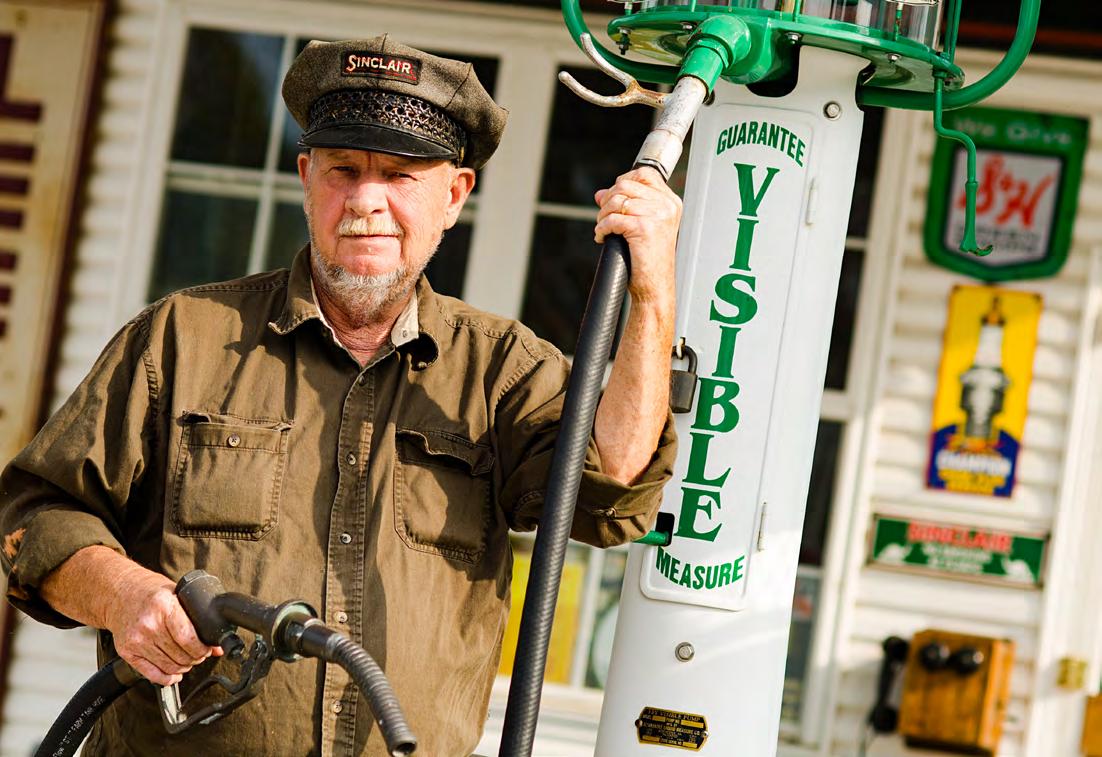
plan for the property. “We locked everything up. I told my aunt and uncle that I wanted to leave the signs out, because we had so many tourists that came by, and they knew that my parents had passed. I didn’t want it to feel like it was just gone. Everybody was already devastated about the whole thing. So, I said, ‘Let’s leave the signs.’ And my aunt looked at me and she said, ‘I’m not sure that’s what you want to do because people are going to come and steal them.’ And I said, ‘Surely they wouldn’t do that.’ Well, we had 14 signs taken, so I probably shouldn’t have left them out. But, I felt like we had to keep it alive so that people could come by and at least have something to remember the place by. So, after that happened, my aunt and uncle took the rest of the stuff down. When George and I got here, they came out and we started putting all the signs back up. We’re still putting signs back up and we’ve been here since 2016.”
Among the family, Barb and George were in the best position to take over the business. Both had traveled extensively in their younger lives, which helped with the international tourists, and both were ready for a new opportunity; they did not have kids like Barb’s other siblings. They were a natural choice to pull up stakes and take over. “We pulled up with the biggest U-haul and another U-haul with my stuff from Charleston. My parents’ house hadn’t been touched, other than things put away, and secured. We had left it the way it was when they passed. So, we had to go through the process of cleaning everything out, redoing the house, and then putting all of our stuff in. Plus the station — it was a big process.”
Barb, staying true to her promise to her father, opened the gate the first day they were there. Not shockingly, but very emotionally, it became very apparent the effect that her parents, especially her father, had had on the people he interacted with via Route 66. Barb’s thought was to just open up, let people see the process of the station getting up and running with Barb and George taking the reins.
“My whole reason for doing this was to keep my mom and dad’s memory alive. That’s been the most important thing to me about this whole process. I just want people to see what my dad did. We’re constantly fixing up or
adding or replacing pieces. Recently someone contacted us saying they had a duplicate of one of the Sinclair signs that was stolen, if we wanted it. We did some additions to the pavilion… you work for 15 minutes on something and then someone stops by, they’re our first priority, so it just takes time to get things done. If my dad was here, we would totally be bumping heads though. He wanted the place the way he wanted it. It’s a guy’s dream to come here and see all this stuff, but I wanted it to be a girl’s dream too, so I planted all these flowers and gardens. The flowers are also for my mom.”
Carrying the weight of parental loss and the grieving process along with holding up a large personality’s legacy is a tall ask for anyone. But Barb and George busied themselves with settling in and getting reconnected with Missouri and the family business. Travelers and visitors would stream in throughout the day, eager to meet Gary’s daughter, excited to meet George, and to see Gary’s Gay Parita open again.
“It was hard to grasp people coming in and crying because they were like, ‘Are you Gary’s daughter?’” said Barb. “They’d meet me and start crying. I was like, wow. It was hard for me losing them, then being back at their place, and they’re not here. Sometimes it still gets emotional for me. I love talking about them, but it’s hard for me to do it all the time. It’s a lot easier for George, and he does a great job of it. I’m thankful for all the past generations that got to come and see this place when they [her parents] were here, and when my aunt and uncle were here, when my dad recreated the station. There are a lot of memories. And that’s what it’s supposed to be: a getaway from everyday hectic life, a vacation down the route, seeing those things that past generations made for us.”
Every day, Barb and George meet people from all walks of life, from all corners of the globe. Route 66 has been the string that threads so many people, places, and generations together. “There’s just something about this road. I find being here so comfortable, being amongst the old things. Meeting all these people on the road and talking to people from across the globe. I love it. The road unites people, even as it’s constantly changing, it unites us,” said George.
“My dad put so much time and energy, so much money… everything into this place. I want it to always be my dad’s station. That’s what it is, and what it’s always gonna be,” Barb shared.
Today, Barb and George are in the role of caretaker and advocate. They’re taking care of the home and business that Barb’s family built, and they’re advocating for the legacy left behind by the experience that her parents gave to travelers on Route 66. Gary’s Gay Parita, Gary and Lena, the people they touched, are all part of a story that Barb and George get to retell while making new memories and adding to the legacy that her parents started some 20 years ago.

Wilmington, Illinois. Established as a mill town for local farmers in 1836 by Thomas Cox, Wilmington has had a rich and diverse history that includes its early beginnings as a bustling riverfront community, serving as part of the Underground Railroad during the Civil War and, eventually, to becoming an iconic stop along America’s Main Street. They even have their own muffler man giant — Gemini! Nowadays though, one of the things that Wilmington is most known for is its charming thoroughfare known as Water Street.
This historic road, with its timeworn buildings steeped in tales of yesteryear, held the heartbeat of the town, its destiny intertwined with the river. As ships and barges navigated the waters of the Kankakee carrying goods from one riverbank to another, Water Street, which ran along the banks of the river, became a hub for merchants, traders, travelers, and farmers. The town flourished boasting a post office, a general store, several hotels, banks, and other establishments all along this riverfront rue.
As the decades passed, Water Street flowed through the eras of coal mining, the industrial revolution, and the evolution of transportation. But as times changed, with businesses coming and going as needs changed and the economy shifted, Water Street found itself quiet, dotted with empty, abandoned buildings.
the little five-and-dimes closed up. Well, Wilmington filled that little niche up with antique shops, and it’s been very profitable.”
Today, Water Street stands as a blend of historic charm and modern vibrancy, where 19th Century architecture meets quaint stores and fun local eateries that now fill the once abandoned premises. Vintage buildings with aged brick exteriors and faded colors, lined one after another in a neat row, all hold a story that has shaped the town’s narrative: a one-story brick post office, a traditional barber shop across from a simple café and, at the end of the road, at the intersection of Route 66 stands the 1836 historic Eagle Hotel — the oldest commercial building in Wilmington. Giant murals tell tales of the town’s past, another celebrates Route 66 heritage.
With the antique shops came more tourists, mostly along Route 66, hunting for history and eager to take home pieces of it from local stores. Luckily, the tourism reflected from the antiquing boom of the decade has carried through to modern day, marking it as an important part of Wilmington’s story.
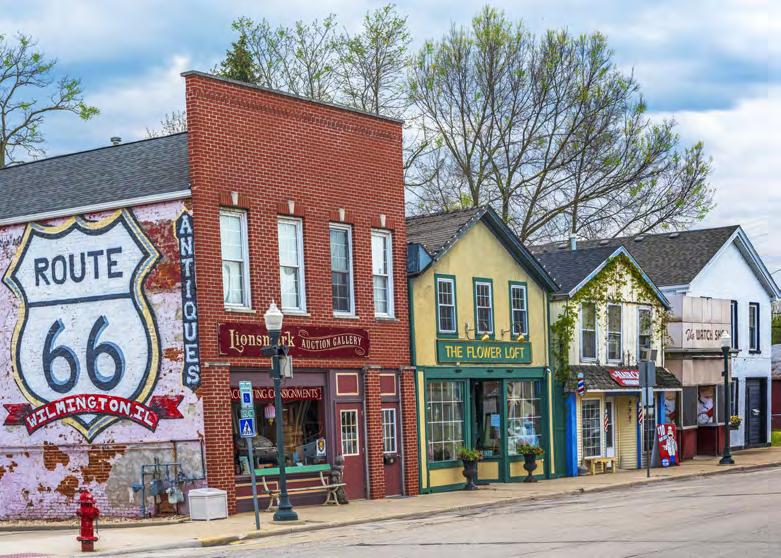
Threatened with being washed away into the echoes of the past, but determined to preserve the legacy of Water Street, Wilmington community members rallied together to take advantage of the antiques trend that was sweeping through much of the U.S. in the 1970s. They filled their empty buildings with local traders who were ready and willing to meet the demands of a growing antiquarian population.
“The first antique shop I remember was probably in the ‘60s. During the ‘70s is when they really started taking off,” said Bill Weidling, former Wilmington mayor and current president of the Wilmington Area Historical Society. “It’s kind of turned into a little antique destination. And that’s one [area] where Wilmington is pretty darn lucky. A lot of the smaller towns, you know, as their big box stores came in,
“The most important thing about saving that history is that that is what people want to come to see. If you don’t have something of unique interest, then nobody is going to stop. Hence, people like to go to see things like the Liberty Bell or the Statue of Liberty,” said Weidling. “It’s a unique item and the history is all part of it. In Wilmington, it started with the antique shops. [We] started getting more and more people coming in and it’s just grown bigger and bigger. I think that’s when [businesses] realized that people liked to collect antiques. People just started filling those empty stores up.”
In the heart of Illinois, along the Kankakee River, the once empty shops looking for new life, now stand as a prominent piece of Wilmington’s history. Water Street remains not just a thoroughfare, but a living, breathing testament to the enduring spirit of a community bound together by the flow of time and the stories etched into the very fabric of age-old buildings that continue to define the town’s vibrant history. Yet another beautiful discovery to be made when next on a Route 66 adventure.


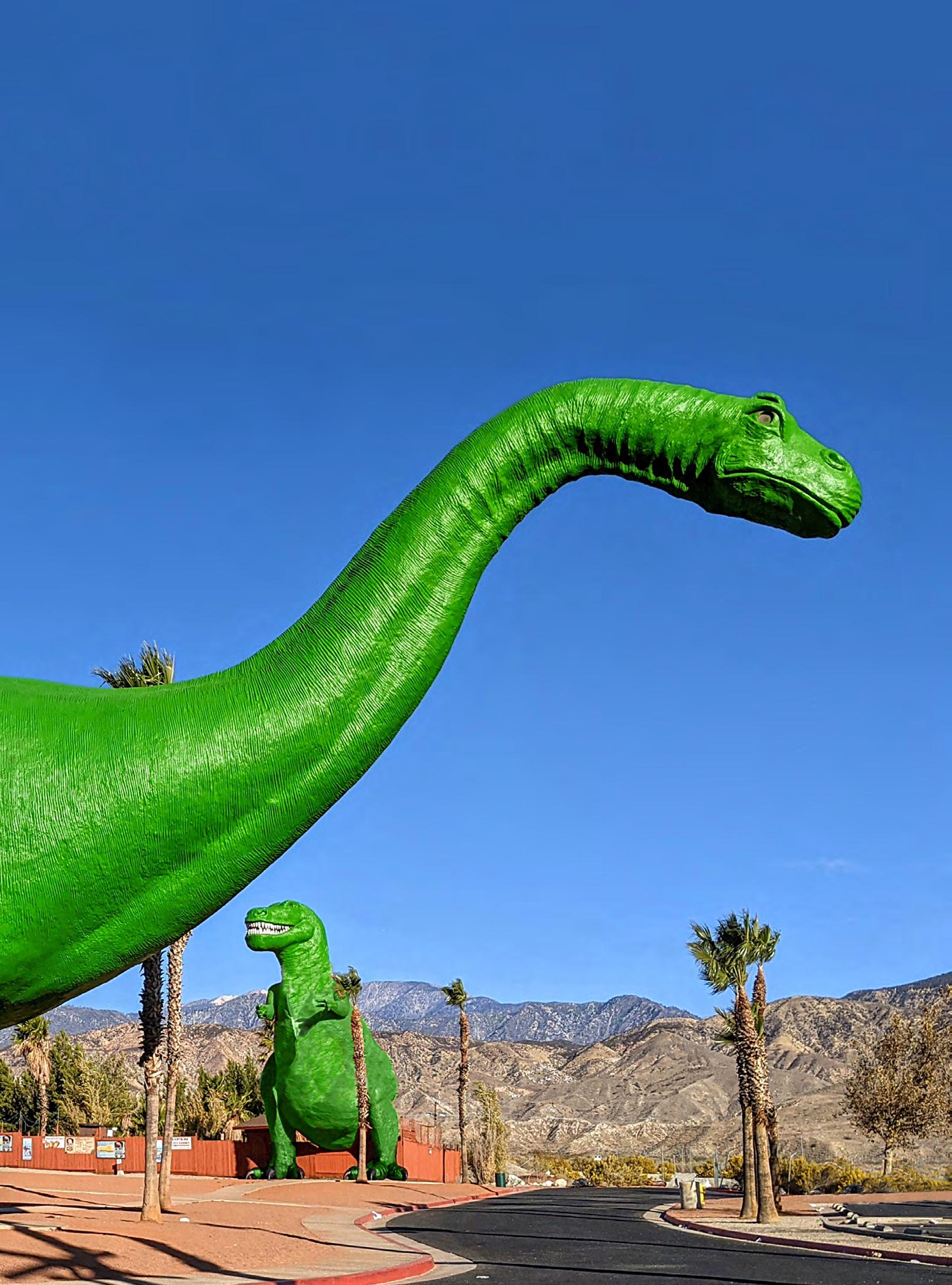
Roadside art and quirky attractions have delighted American travelers for decades. Some famous highways like historic Route 66 provide a plethora of oddities that capture the imagination, offering a glimpse into America’s creativity and love for the unusual. However, some of the most extraordinary roadside curiosities are found well off of the beaten path.
Down in the desolate Californian desert, neatly tucked off of the black tar strip of Interstate 10, stands a surprise for road travelers. A big surprise! Towering over the gently wavering palm trees of the tiny community of Cabazon, are two legendary specimens of architecture: Dinny the Brontosaurus and Mr. Rex the Tyrannosaurus — and their story stands about as high as they do.
One day, while walking down the neon-washed, resort paved streets of Atlantic City, New Jersey, a young boy named Claude K. Bell encountered something that would have an impact on his life in a huge way. A 65-foot-tall novelty structure, in the shape of an elephant, lovingly named Lucy, caught Bell’s eye and attention. What made Lucy stand out — besides her imposing size — was that her belly hosted a small museum that was accessed via a spiral staircase. Inside Lucy’s belly were charming exhibits that told the story of her fascinating history, while an observation deck on her back provided sweeping views of the surrounding landscape. A young Bell was smitten. Lucy’s elaborate design and ingenuity would inspire his own creation years later.
After many seasons of working as a sculptor and theme park artist at Knott’s Berry Farm in California, where he and his second wife, Anne Marie, also operated a portrait studio, Bell determined it was time to bring his childhood inspiration to life. So, in 1964, on a 62-acre property in Cabazon that he had purchased in 1946, Bell set to work on an 11-year labor of love that would inspire sojourners from across America to behold his masterpiece.
Bell envisioned Dinosaur Gardens, a prehistoric-themed attraction that would draw motorists off the freeway and to his truck stop restaurant The Wheel Inn. His initial creation consisted of a steel skeleton framework that stood unfinished for some eight years, promoting many “What is it?” questions. Eventually, a neck, head, and hardened skin, made from shotcrete, were added to the steel frame, bringing to life a primeval beast that towered at a staggering 45-feethigh and spanned an intimidating150-feet from neck to tail. “In the next [30] years, I’m going to build an entire family of dinosaurs here,” said Bell, in an interview on April 12, 1970, with a reporter from the Eugene Register-Guard newspaper. “I’ve always been a nut for prehistoric animals. [Dinny] will be the strongest dinosaur ever built, [and] the first dinosaur in history, as far as I know, to be used as a building.” Dinny the Brontosaurus was completed in 1975 and featured a doorway in the tail, with stairs leading into its belly. An 18-by-56-foot main room served as a museum and gift shop. Despite facing financial challenges and skepticism from critics, Bell remained committed to his vision. With his creative gears still spinning, Bell set out to build an even
more impressive sculpture—a lifelike Tyrannosaurus Rex. Though Bell originally planned to make the jaggedtoothed tyrannosaur 90-feet-tall, by the time Mr. Rex was unveiled to the public in the early 1980s, he stood at 65-feet-tall — mimicking Lucy’s height. With Rex, visitors would be able to climb into the beast’s mouth and get a unique view of the tranquil desert landscape through its razor-sharp teeth.
Notwithstanding their eccentricity, it was not until 1985 that the dinosaurs really became a public sensation and were firmly put on the cultural map as a roadside destination. Featured prominently in the cult classic Pee-wee’s Big Adventure , the world was introduced to Bell’s enormous creations via an unexpected, but rather appropriate, cartoony character named Pee-wee Herman (Paul Reubens). In the film, Pee-wee is on a cross-country trip in search of his stolen red bicycle. His journey has brought him to a diner in Cabazon where he meets a troubled waitress, Simone. Entering Mr. Rex’s head to have a heart-to-heart conversation with Simone, events take a bad turn as Simone’s jealous boyfriend, Andy, misinterprets their friendship and chases Herman around Dinny’s tree-trunk thick legs while swinging a giant bone club. It is a comical scene that has inspired thousands to make the trek in search of the Cabazon Dinosaurs.
“Because they are concrete and monolithic, you can see them from the interstate,” said Doug Kirby, co-author of the Roadside America website. “So, not only were they a local curiosity, but it was something that people coming to and from Los Angeles could see. They were the closest dinosaurs to a metro area, which garnered them a lot of attention — versus some of the other dinosaur statues which were older around the country but located in more obscure places... [like] the middle of the desert.”
Among the scattered blueprints within Bell’s dusty workshop were also ideas for designing a woolly mammoth and saber-tooth tiger sculpture. However, these were not to be. In 1988, at the respectable age of 91, Bell passed away from pneumonia before his full vision could be realized. The restaurant closed in 2013 and was bulldozed in 2016, but thankfully, the dinosaurs have continued to thrive, honoring the memory of their creator amidst the scattered palm trees of Cabazon.
Today, the Cabazon Dinosaurs are part of a creationist museum owned by MKA Cabazon Partnership, a company that bought the land and dinosaurs from Bell’s family around 1996. Despite the shift in management, the dinosaurs remain a source of inspiration, bringing smiles to both adults and children. Besides painting the dinosaurs different colors to honor specific holidays, the new owners continue to fulfill Bell’s original purpose, allowing visitors to roam around the inner bowels of these concrete creatures — albeit for a price.
The Cabazon Dinosaurs epitomize the quirky and nostalgic atmosphere that harkens back to a bygone era of kitschy American roadside attractions. And with a little luck, they will remain spinning within the machine of modern pop culture for decades to come.


Melissa Etheridge is not just a musician; she’s a force of nature, blending her raw, soulful voice with poignant lyrics to create an indelible mark on the music industry. Born in Leavenworth, Kansas, in 1961, Etheridge’s journey to musical stardom is as inspiring as her powerful vocals.
Her rise to fame began with her self-titled debut album in 1988, featuring hits like “Bring Me Some Water” and “Like the Way I Do,” which showcased her gritty vocals and unapologetic lyrics. Throughout her career, she’s continued to captivate audiences with her honest songwriting and electrifying performances.
Etheridge has amassed an impressive array of accolades, including multiple Grammy Awards and an Academy Award for Best Original Song for “I Need to Wake Up” from the documentary “An Inconvenient Truth.” Her discography boasts a string of hit songs like, “Come to My Window,” “I Want to Come Over,” and “I’m the Only One,” each track showcasing her evolution as an artist, while staying true to her Midwestern roots.
Yet, Etheridge’s life took a poignant turn in 2004 when she was diagnosed with breast cancer. Rather than succumbing to fear, she confronted the disease head-on, becoming an advocate for breast cancer awareness and a symbol of strength for countless women facing similar battles. Her openness about her struggle, including her decision to undergo chemotherapy and her subsequent journey to recovery, resonated deeply with fans around the world. Despite the challenges she faced, Etheridge never allowed cancer to dim her creative spark. She continued to produce music that reflected her resilience and determination, earning critical acclaim and accolades along the way. Her willingness to speak out on social and political issues — combined with her electrifying stage presence — has inspired generations of fans to stand up for what they believe in.
Melissa Etheridge has left a lasting impression on the world, inspiring countless individuals to find strength in their own struggles and to embrace life with unwavering passion. In this conversation, discover the fascinating journey that this musical icon made to arrive where she proudly stands today.
You started singing and songwriting at a really young age. How did you decide that you wanted to become a songwriter and pursue a career in music?
It was the late 1960s, early 1970s, and there was great music: it was everywhere. There was one radio station — you got it all in one place and everyone heard the same things. WHB 710 Radio, which was the radio station in Kansas City, would play the Jackson 5, then you’d hear Tammy Wynette, Led Zeppelin, then a Frank Sinatra song. So, it varied, but it was all this great music. We constantly listened to the radio at home. When I was young, my parents would bring home albums… The Mamas & the Papas, Aretha Franklin, and I would listen to them over and over. My mother would also have classical rock records. I fell in love with music.
When I was a kid, my biggest influence was probably The Archies , the cartoon. I watched it as a child, and I thought, “They’re in school; they’re playing instruments.”
When I was eight years old, my father brought home an old Stella Harmony guitar for my sister, but she didn’t play it. They finally let me play it, even though they said I was too young. Then, by the time I was 10 years old, I was really playing the guitar and writing.
Do you remember the first song that you wrote?
Yes! (Laughs) Well, I remember the first song that I wrote as a 10-year-old. “We were on the bus.” I rhymed “Gus” with that, then I would write “Love, don’t let it fly away, it’s love.” Like protest songs, when I was 10! This would be 1970 and 1971. When I was 12 years old, my grandmother passed away, and I wrote my first real song, “Lonely as a Child.” It was sad. It was about a child in a war-torn country, losing its mother. It was very sad. I liked that people had an emotional reaction, and I kept writing sad, emotional songs. I played in bands, I played cover songs, I learned what a hit pop song was. You learn what people like to hear and the makings behind it. I found my own voice when I was 17 or 18.
Death is something that we don’t really understand when we are young. Did you find it cathartic to write that song, to deal with your grandmother’s death?
At the time, I didn’t know that was what I was doing. At the time, I was this kid that was feeling… my grandmother’s funeral was my first time with a death experience. I was moved by the way people gave respect to others who are grieving. It touched me deeply as we were driving to the cemetery. They would not only stop, but they pulled over to the side of the road. It touched me as a 12-year-old deeply. I sat down on the porch, and I wrote that song. Now that I look back, I can see that all of those things were connected, but at the time I was just gonna write a song.
You were very young at the time. How supportive were your parents to your progression toward a career in music?
They weren’t not supportive; that was the best thing. It was quiet, except for my older sister — she made a lot of noise. I would keep to myself and sit in the den and practice my guitar. My father got me a piano when I was 14, and I would write and play. Once I started singing a couple of songs that they liked, they would have me perform for visiting family. It was fun, but I remember once asking my mother at 16 or 17 — I was playing in bands and wanted to do this — I asked her if she thought that I would make it as a star, and she said, “It’s a one in a million chance, but why not you?” And that was enough to get me going.
When you were in grade seven, you started traveling with a local variety show. How did that come about?
I did! It was a fun thing to do on the weekend. It would be once every couple of weeks. He — Bob Hamill was his name, and he came from Philadelphia. I have no idea what he was doing in Leavenworth, Kansas — would gather all these acts together and we would go and play. It was never further than twenty miles. He reminded me of the music man, putting a show together. He was a showman; he was a ventriloquist… He convinced the Chamber of Commerce to put a talent
show on in the plaza, our local mall. It had seven stores, but it was the mall. I was in sixth grade, and my friend said, “Let’s go sing at the talent show.” We got up and sung folk songs. There were acrobats, dancers, [and] little girls and boys singing country songs. At the end of the final night, he said, “Give me your address, and I will sign you up, and you can be part of The Bob Hamill Variety Show.”
He called us up and we would play at old folks’ homes, Kiwanis clubs… then we started playing in the prisons. We would entertain these guys in prison, then we went to the women’s prison and did a show. It was bizarre, but it was delightful. They were crazy audiences; they were hooting and hollering — who knows why — but I enjoyed it. It was my first experience with an excited audience and that made me want to do it more.
Did you get nervous performing in front of people initially?
Yeah, there would be nerves, but it was so close to the excitement of it that it was more like fuel. Things would go wrong, and things would happen, but each experience helps you grow.
You went over to Boston to attend the Berklee College of Music? Was this straight after high school?
I graduated in May of 1979, and then I went to Boston in September. I stayed in Boston for about a year, but I never really wanted to go to school in the first place; college wasn’t anything that I thought about. But my mother wanted her daughter to go to college. So, I thought, “Okay, but it has to be a music college.” I was trained, I could read music, but Berklee was a place where you could major in guitar. There were no other places where that was offered. I got in there, and this is 1979, and in my guitar class of 60 kids, there were only two women. Each of my classes were like that; there were very few women. The talent there was remarkable. I came from a singer-songwriter, rock ‘n roll sort of base, and there’s these jazz guys that are running circles around everything. But I didn’t have a love for it. I had a teacher that told me this has to go after this… I said, “No, it doesn’t. There are no ‘have to’s’ in music,” and he said, “Yes, there is.” So, I sort of ran up against that, and it all fell apart. I got a job in a restaurant, was making a living, and I could have an apartment. I didn’t want to go to school anymore. I stuck around Boston and performed around town for another year.
By 21 you moved to the West Coast?
I turned 20 and I went back to Kansas City, because I lost my job. I don’t know why, but I got fired. I came home, got an apartment, and worked for another year to have enough money to buy a car to drive out to [Los Angeles].
LA can be a very lonely town when you are new and don’t really have a base. When you arrived at 21, did you know anyone? What was the game plan when you started driving West?
Well, I fortunately had an aunt who lived in LA. My father’s sister and my father’s brother both lived there. My aunt lived alone, and my sister had gone out there a couple of years

before and stayed. It wasn’t a good experience, but I didn’t know that at the time. I asked my father if he thought that I could sleep on Aunt Sue’s couch if I went out. (Laughs)
I had been able to make a living in Boston, I’d been able to make a living in Kansas City, and I was self-sustaining and took care of myself. I figured [that] I would go out to LA, get a job, and I’d be there. So, I drove out to California… I stayed in two hotels along the way. That’s all I could afford. I had friends in Oklahoma City that I stayed with, and a friend of a friend that I stayed with in Phoenix. But I got there.
So, I knew my aunt, but I did not know a single other soul otherwise. It was hard.
I quickly figured out that there was no work to be had in LA — musicians were playing for free and not having a problem with it. I was young and meeting women, and one came from Long Beach. We went to this new club called the Executive Suite, and I noticed that there was a piano in the corner. I asked if they had live music and they said no, but the [venue] used to be a steakhouse, and the piano came with the restaurant. They had a disco there at the time, and I told them that I could play before the disco. So, I got a job playing at this bar in Long Beach, like five nights a week, from 5PM to 9PM, before the disco.

I brought people in for cocktail hour. When that ended, because it got popular, and they went full disco, I went to the other bar in Long Beach called Que Sera. It was a women’s bar, and I played there. From that, I got a job at Vermie’s, and I went back and forth from Pasadena and Long Beach every other night. It was brutal, but the cost of gas wasn’t like it is now. Women would come every week to hear me play, I was a draw. There were these women that would come in on Sundays after their soccer games from Cal Tech. One night, one of them asked if I had a demo or something. I had made this demo of one song, and I gave it to her. That was enough to get a manager. He said that he wasn’t interested initially, but his wife came down… she was one of the coaches. So, she came down and she went back to him and said, “You have to come see this girl.” He finally came down and signed me right away. He liked the way that I performed. I was not just singing songs. He believed in me. He said, “I don’t know how long it’ll take, but I think you can make it. I think you have what it takes, so let’s try.”
Then, it was all about getting a record deal. That was the main focus. He started bringing record companies out to see me, and he brought the president of Capitol Records at the time; he was one of his best friends. My manager had managed Bread, and had been in the business for a while, so he was successful. And the guy loved me. It was 1982 or 1983. He said that he wanted to sign me. But then… I can’t tell you how many times I would get in with a record company and then the president would be fired, everybody would go away, and the whole deal fell apart. It was like that with A&M and then Warner Brothers, everybody came out to see me.
Yeah, the business has always been quite fickle. But in 1988 your first album comes out, finally.
Yes, on Island Records! Chris Blackwell himself walks in and literally asked me why I wasn’t signed. This was 1986. He said that he wanted me on his label and then he went away. I didn’t believe him, but he made it happen. I never even had an A&R guy; he loved me and signed me. It was super cool being on Island, but I didn’t know what to do. I’d never made a record before. I’d been performing solo for 10 years. I didn’t have any musicians and there wasn’t a record company guy there to guide me. But Chris said to me, “I want what I heard in the bar.” We had already done the photo shoot for the album cover, and Chris loved the picture so much that he had them blow it up. He had someone put the picture up and said, “Make the album sound like this photo,” so we did.
Your first album was successful right away.
Well, what do you call right away? It was successful on the rock radio in Canada. It was very big in Australia. It was huge in Europe. In America, it was playing on rock radio. They had the difference between pop and rock, but it was nice, and I’m very happy with how it hit. It was perfectly fine, and I was able to play and to go do concerts all over the world. I loved it.
Were you concerned that it wasn’t hitting on the Billboard Top 20?
I wouldn’t say I was concerned. But I was comparing myself to others, and that will make you sad every day, no matter who you are. I did a lot of that. Tracy Chapman’s album and mine came out on the exact same day. So, “Fast Car” was the number one song, but I’m so glad now. I wouldn’t trade it for anything.
Do you remember the first time you heard yourself on the radio?
Yes, I was in London. Chris always thought that I would break in London first, so he wanted me to be like Chrissie Hynde and The Pretenders, since they got huge in London, then came back to America. Initially, I did this intensive tour of England and, to this day, England is the least of all the English-speaking countries in the world for me. I sold the least number of records there, I never got on the radio,
and it never ever worked. It was painful. But I was with the record guy, and we had been to a radio station, we were driving away, and they played one of my songs. It was the first time I heard myself, as I’m in some car. The song came on and I thought, “Wait a minute, that’s me!” It blew my mind.
Did your life change after the first album came out?
Yeah, my life was constantly changing anyway. I got my own house, but I was gone most of the time. I loved being on the road, and I loved playing, and I was writing. When I was home, I had friends and we had a lot of fun, and then I’d go tour. I would come home and make an album. 1988 to 1993 was pretty much like that.
I am a huge fan of the Laurel Canyon culture of the 1970s and the music movement that was happening in southern California at the time. Was that era of interest to you?
Yeah! That is why I came out to California. I thought that Jackson Browne was going to be there and Crosby, Stills, Nash & Young, The Eagles, and Fleetwood Mac… they were all going to be playing in the Canyon. But I show up in 1982, and it was all Spandex and big hair, and I thought, “What happened?” It was completely different and very strange, but that was the music I was loving — that was it.
When you arrived, Whisky a Go Go and Troubadour, were those still clubs that people were playing at?
Yes, but it was Guns N’ Roses, Ratt, L.A. Guns.
Big hair and metal guys.
Yep.
How did you get connected with some of the musicians that you had looked up to?
When I was making my first record, the executive producer that Chris sent over to oversee it all, knew Bonnie Raitt. He had produced a couple of her albums. He wanted to introduce me to her and did so just before my first album came out. She was so kind and supportive; she was incredible. I also met Jackson Browne, and Bonnie quickly took me into that 1970s and 1980s bubble of people that were doing benefit work, moving socially forward, and they called me out to do those things. That is where I met everyone else.
Did you get a little starstruck in the early days?
I tried not to show it. I was also observing what they were like because they had what I wanted: what are they doing and how are they managing their careers?
In 1989, Brave and Crazy came out, and peaked at #22, and, in 1992, Never Enough also peaked at #22, but in-between, 1991 was a sad year for you.
Yeah, I lost my dad.
Very much so, he was an incredible human being. He was a high school teacher and a basketball coach. Everyone loved him. He had come from migrant farmers in Missouri, his father had been in World War II and was a horrible alcoholic. He had a metal plate in his head. His mother worked just as hard and there were seven kids. I think there were nine and two of them died. It was the poverty of the 1930s, the Great Depression. He came out of that, and he was good in sports; he had been a swimmer. His high school coach said that he could get a scholarship to college. My dad didn’t know anything about that: he didn’t know what he was going to do with this life. But he went to college, he met my mother, he married, and he graduated with a teaching degree. He was able to go up to Kansas — we didn’t have any family there, but he went up there and he started life. He had the belief that you can come from nothing and become something.
He got to see the first two albums, so he got to see his little girl successful at what she started when she was only seven.
Yeah, that was cool. I remember taking him to Quebec, he had never been up to Canada before. They came up to see me and we had such a wonderful time. I played at this big outdoor concert with thousands of people, it was fun to have him see me play on that level.
In 1993, you released the album that would catapult your career and fame, Yes I Am . It was a huge album for you. It had numerous radio hits, and it seemed like you were everywhere. That must’ve been a bit overwhelming.
The good news was that it took a good year for it to get there. I put the album out around 1993 and it was this slow momentum. I could feel it a little bit at a time. We would get out of the clubs, we were playing at more theaters, I was at different radio stations, different pop stations, so it slowly worked up. It wasn’t this big bang and then it was over. It was one of the reasons that the single “Come to My Window” never made it into the Top 10 of singles, but it was on the chart for the longest, because people would start playing it… and it took forever… and by the time these guys started playing it, then the others stopped playing it. It always kind of stayed around.
What was the story behind “Come to My Window”?
I was in this relationship; I was very dramatic, and we would spend a lot of time away from each other. I remember being in Europe, I called her, and we didn’t even say anything, we would just listen to each other breathe on the phone. It was this longing, yet there were parts of it… I remember writing the bridge “I don’t care what they think / I don’t care what they say / What do they know / About this love anyway?” completely separate. I remember bringing it in, and thought, “Wait a minute, that fits. I might be unhappy, but I don’t care what everybody says anyway. What are they, what do you know about what I’m doing?” Then, it was this sweetness — it was a mix of stuff. I almost didn’t put it on the album because I thought that it was too complicated of a song, but people seemed to like it. (Laughs)
That song was straightforward. I was getting back to my first album feel, because I could see how much people liked that bluesy rock. I was playing this blues lick and, then again, my relationships fed so many of these songs. She was unfaithful, and it was perfect. But I didn’t want to write and make me sound like poor, poor, pitiful me. I wanted to write like, “Wait a minute, you’re doing this, but you’re gonna regret it.”
“I
I wrote that song the next year, for the next album. That was me remembering the beginning of that relationship. She was married and I thought, “I don’t care, to hell with the consequences.” I thought, “I’m going to do this anyway.” And that is the song. (Laughs) It’s the stalker song.
You lost your son, Beckett, to an opioid overdose in 2020 when he was only 21. Tell me about Beckett.
Someone said this about him once, they said, “When Beckett is happy, everyone is happy. When Beckett is not happy, nobody is happy.” He was very bipolar, and he struggled with life. He struggled understanding it, finding a rhythm with it. They weren’t testing children back then, but who knows what he would have been diagnosed with. When he wasn’t using, or coming down, he was wonderful; we loved him so much. He was so much fun and so funny. He just couldn’t do life this time around.
He was passionate about snowboarding and hurt his ankle at some point. Is that how he got into the opioids?
Yeah, that’s when it got really bad.
You know, there is a stigma with pharmaceuticals: that if you’re weak, you’ll get hooked. It’s a stigma to label people that they’re troubled people. They either understand it, or they don’t understand it, that there is some kind of weakness, or it is their fault. That stigma still permeates today. That is what we are trying to combat in the Etheridge Foundation — the opioid use disorder. It is a real condition; it is covered by the American Disabilities Act, there is a lot of new thought around it.
There should be, it has destroyed enough lives.
Okay, so you have a brand-new album, “I’m Not Broken,” coming out in early July! You chose to record this one at the Topeka Correctional Facility for Women. Why so?
The Topeka prison is what the Leavenworth women’s penitentiary used to be: it used to be inside the men’s, it used to be together there, right next to Leavenworth in Lansing. In the 1990s, they moved it out to Topeka, so it is still the same institution, but they got it out and put it 45 minutes away. When I was in The Variety Show… Johnny Cash came to Leavenworth when I was eight years old. We didn’t get to see him, but they got to see him. At eight years old I thought that prison must be a place of fine entertainment. (Laughs) What Johnny Cash did to go in there and create [an] energy of goodness and hope, I always felt strongly about that. In the 1990s, Tammy Wynette became a friend, we were
talking about doing a concert, going down to a female prison in Virginia. Then she got sick and died, but I had been thinking about this forever. Finally, a few years ago, Paramount+ backed it, and I said, “Let’s do it!”
Terribly. But again, my nervousness is an excitement and there is an unknown. I get that energy when I am doing something, and I don’t know how it is going to go, because 95 percent of the time, I know how a show is going to go. I feel confident, I can’t wait, I’m so excited, it’s fun, and then it’s all over. But I didn’t know how this was going to go. I had to talk to the warden and say that my shows were very enthusiastic and emotional. I asked if she was going to make them sit. She said that they weren’t going to make them do anything. She kept telling me to play for as long as I want, do whatever I want, and play whatever I want. (Laughs) She fully supported the show, and I decided to go all out.
I knew that some of the women were going to have no idea who I was, I wasn’t on their radar. I wanted to come in as a musician and make them feel good; and sing the songs that might relate; and tell them a story that might move them along. I was very nervous, and I was emotional. I didn’t know how emotional until right before we went on with the band. I said, “Let’s get together… I’ve wanted to do this all my life,” then I burst into tears. (Laughs)
It was a fabulous concert and the women really seemed to enjoy themselves. When I was watching the documentary, closer to the end I was a little shocked. Five of the women spent a fair amount of time writing you letters. We see the connection as they read their letters aloud. Normally, if someone writes a letter to someone, there is already some type of connection with them. You’re a public figure, so I figured that they must know your music, so they wrote to you. But then, sitting around the table, one of them admitted that they didn’t really know who you were. How did they start writing to you?
That was part of Shark Pig, the production company; they are an incredible production company. They had the idea that they wanted to get connected with some of the women in prison, so there would be a story for me to work from, to be personal. They went to the prison, and it took a long time to get the ones that we got, because they have to be willing to open up their whole lives. I don’t think they know how their lives are going to change after this. (Laughs) But it’s big. I thought that they were incredibly brave, especially not knowing me very well, to do that. The one who didn’t know me was the most verbose, she wrote me letters and she still writes me letters; it’s interesting.
I was delighted with the response. It was what I had hoped for. But I am also hoping that we can change some hearts and minds about incarceration and drug addiction. There is much to be done.
Check out Melissa’s new album on shelves now and don’t miss the docuseries “I’m Not Broken” on Paramount+.


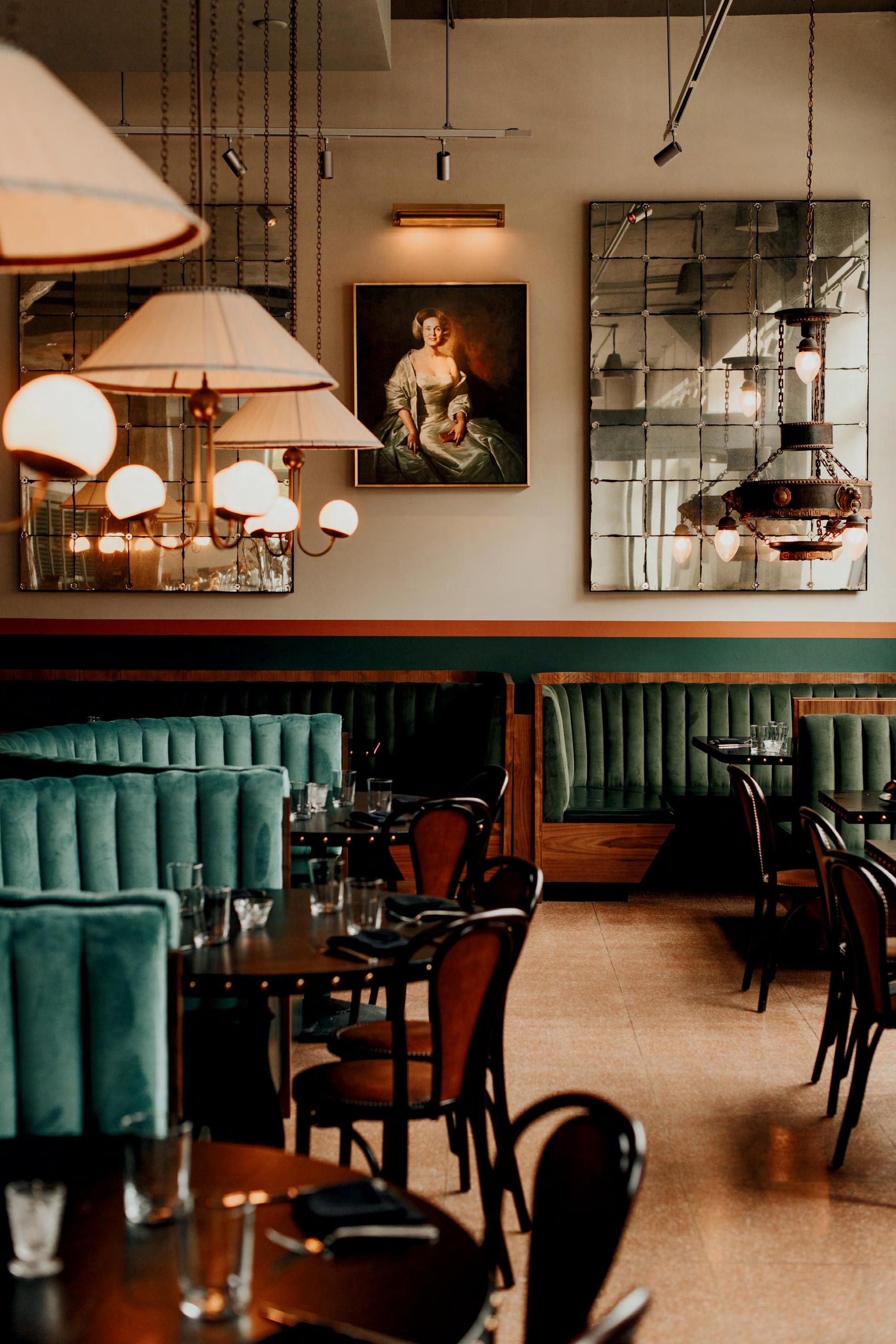
Miracles and mysteries seem to go hand in hand. They defy expectation and understanding and sometimes leave beautiful marvels that draw in pilgrims for decades to come. One such mysterious miracle just so happens to be found along Route 66, right in The City Different as you are driving through the New Mexico stretch of America’s Main Street: a literal floating staircase within the Loretto Chapel.
The story of the Loretto Chapel and its miraculous staircase starts 173 years ago in 1850. A new bishop assigned to the New Mexican territory, Jean-Baptiste Lamy, was whipping the area into shape. Needing some help in educating the local girls of the Santa Fe community, he made a request that was answered by the Sisters of Loretto, a group of Catholic pioneer women first organized in 1812 with a vested interest in the dissemination of God’s word and education of the poor. Their school opened in 1853, but it was not until 20 years later, in 1873, that the Sisters would start work on their chapel with the aid of the very same architect that Archbishop Lamy had brought in from France to work on his new cathedral, Projectus Mouly.
“Mouly agreed and worked on the chapel for five years, 1873 to 1878. He patterned it after Sainte-Chapelle in Paris,” said Richard Lindsley, docent of the Loretto Chapel. “Mouly wanted to put a circular staircase to the choir loft, but he was not able to find anyone to come all the way from France to do that. The chapel was dedicated and consecrated in April 1878, and the Sisters and students started to use it for worship, but they were not able to get up to the choir loft to use it since there was no access.”
for the aid of the patron saint of carpenters, St. Joseph, in completing their chapel. Eight days passed unanswered, but on the ninth, lo and behold, a carpenter arrived.
“On the last day of the novena, an older man with a gray beard showed up and said he would build the staircase, so they hired him on the spot,” continued Lindsley. “He worked in the chapel for three months, never allowing anyone to see him work on it, and then he vanished. The Sisters went to the only lumberyard in town to at least pay for the materials because they didn’t want to steal from anyone, since the carpenter vanished before they paid him, and the lumberyard told the Sisters that the carpenter never got any materials from them. They recalled that when he arrived from the desert with his donkey, he brought no materials with him. That’s one of the reasons that the Sisters and the people of Santa Fe are convinced that he was sent from Heaven.”

A staircase quite possibly wrought by the patron saint himself. As we all know, God does work in mysterious ways. The staircase twists around 360 degrees twice on its way up to the loft, lacks any visible supports, and is entirely put together with wooden pegs. No nails. Every attempt to explain it only seems to raise more questions. The wood was determined to be a unique kind of spruce that could only be found in Alaska. The spring-like construction has been calculated to be able to hold up to a cumulative three tons. Modern stair builders have studied the staircase inside and out and have no idea how to even begin to replicate how the Loretto Chapel’s floating staircase is built.
A choir loft, but no way to get up there; the Sisters were left in a bit of a pickle. No one could make a staircase that could get up the loft that fit the circular design intended and desired by the architect. In late 1878, the Sisters turned to what they knew best to find their solution: prayer. A nine-day prayer known as a novena, in which they asked
Approaching 125 years of age, the Loretto Chapel’s miraculous staircase is still a sight to behold. People are no longer allowed to climb the stairs today, but you can still make your way over to the Loretto Chapel to check out this peculiar piece of Santa Fe’s expansive history. Truly another magnificent landmark to check out along New Mexico’s historic section of Route 66.
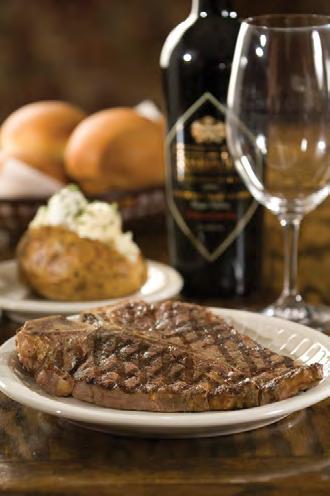

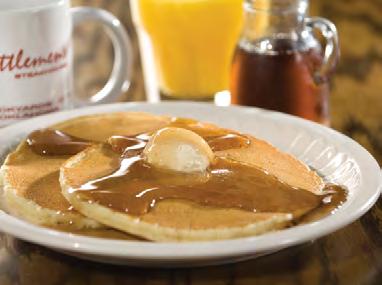
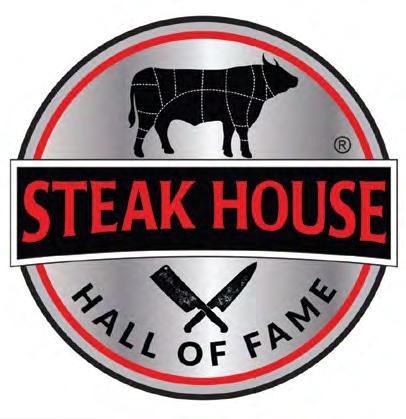

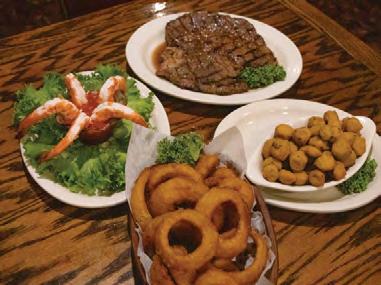





Surrounded by sparse vegetation stretching across a mountainous horizon, the Mojave Desert of southeastern California is a lonesome landscape. It is a land of mystery and a million stories, tales of dreams — some realized, many broken — and it is the windswept home to more than its share of surprises. Aside from its haunting beauty, this stretch of desert once contained a hidden gem that few are aware of: an old phone booth that acted, for a fleet of lonely miners, as a ghostly reminder of a faraway, outside world.
The booth has long vanished from the face of pop culture and perhaps the desert itself, but its memory has not. In honor of the revered destination, a replica has popped up in an unlikely but nonetheless perfect place: the Goffs Schoolhouse, a much-beloved Route 66 destination that made its own home in the middle of the Mojave many years ago.
Located miles outside the sun-bleached ruins of the Cima and Aiken Cinder Mine, the original phone booth was a product of another time.
In 1948, as miners traveled between the mines, the clatter of pickaxes reverberating through the empty wasteland, communication became a necessity. With sweat-stained fingers, miners cranked a handle attached to a wooden box and gripped a metallic trumpet-like device to their ears. All that was left was to wait for an operator to respond. With this earlier design for the phone booth, miners and citizens relied on it for emergencies and regular convenience. Established by Emerson Ray, who owned both mines, the phone booth experienced updates to correspond to changing times. Despite its transition to a rotary phone in the 1960s and a touch-tone phone in the 1970s, the phone booth remained as ordinary as could be. However, everything changed in 1997 through the impact of the Internet — and a man named Godfrey “Doc” Daniels.
In May 1997, after reading a letter to a magazine editor that mentioned a phone booth located within the emptiness of the Mojave Desert, Daniels found himself drawn to the phenomenon. Despite the odds of a working phone booth existing in that dusty void, he made it his mission to call the booth’s number every day until someone finally responded. Eventually, he got his wish when a miner named Lorene Caffee picked up.
After this exciting development, Daniels rented a vehicle to embark on the 635-mile drive from the semi-arid climate of Arizona to the desert of California to visit the phone booth for himself. And he was not disappointed. “A lonely communications outpost at the end of a long, long chain of telephone poles. All its glass had been shot out, but I thought it was beautiful. At that moment I felt I might never leave it,” Daniels told devoted readers of his blog, Deuce of Clubs, on August 27, 1997.
Word of his discovery spread like wildfire, inspiring people from around the world to share in Daniel’s experience. However, as the Mojave Phone Booth surged in popularity, this would inevitably lead to its downfall in 2000 when it
was removed, leaving behind only an engraved headstone in tribute to its final resting place.
Never to be called again — or was it?
Sheltered within the small rural town of Goffs, California, there resides an old, red-roofed schoolhouse that has been converted into a museum. Formally known as Goffs Schoolhouse, the historic building is responsible for maintaining thousands of artifacts. Spread out across its 75-acre property lay an old school bus, vintage signs, and now, of course, the newest addition: the monument to the Mojave Phone Booth.
“The Mojave Phone Booth was always one of those iconic things out [in the desert] that very few people, relatively speaking, got to see,” said Billy Creech, president of Goffs Schoolhouse. Having embarked on numerous expeditions surrounding the dry, dusty plains of California, Creech recognized the Mojave Phone Booth’s uniqueness as worth protecting. When the original was removed from the Mojave National Preserve by the Pacific Bell telephone company, its absence ripped the hearts of its loyal supporters, leaving them feeling betrayed. “There was a bit of underhandedness to it, and that doesn’t sit well with me. There was a big portion of people who really got left out. The phone booth was taken away from them, an experience that they had enjoyed. Why not bring this back?”
An explorer of quirky landmarks, Creech was entranced by the concept of the phone booth and had an epiphany. Using a booth donated by one of the museum’s former leaders, Creech delved into the original’s history in an effort to create a replica exhibition as tribute. Traveling down a dirt trail, visitors now have the opportunity to undergo a similar journey as others had done during the 1990s. Though Goffs will “never recreate the real thing,” their goal is to get “as close as possible” to the original.
As an homage to the original, the replica will allow visitors to communicate long distances. A small phone cord is attached to a payphone to plug in visitors’ iPhones, which will power the replica to make calls. “Because there are no hard lines [locally], operating a phone booth becomes a very serious challenge,” said Creech. “The technology I’m trying out is going to give people the opportunity to replicate that experience as much as they can using that payphone.”
Contacting Daniels to get his thoughts on the fascinating idea, Creech found a supportive partner. “I called Doc and asked what he thought about bringing back the phone booth. And he loved the idea.” With Daniels assistance, Creech brought the original’s spirit to life through the replica. “Doc helped me with ordering the magnetic letters and numbers that were inside the original phone booth. His friend owns the original phone number and allowed me to have the number for the [unveiling] event.”
Devoting two years to this project, Creech hopes that the Mojave Phone Booth replica will allow people to benefit and learn from the original’s history. “The idea is to bring something back to reinvoke memories while creating new memories for those who didn’t experience it: to show people that there are unique and special things in the world.”



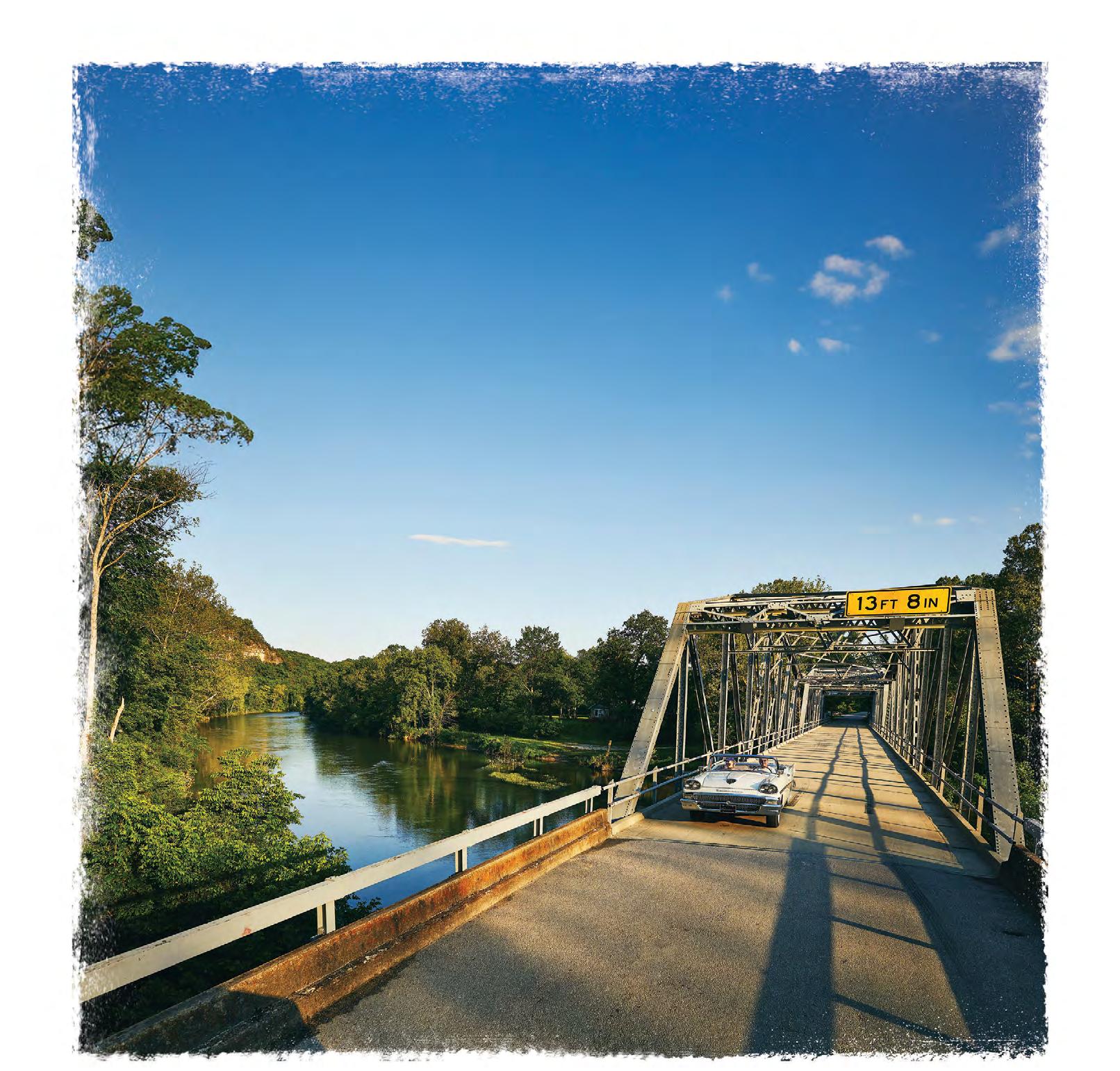
*Rate Restrictions: Valid only for Choice Privileges members (program enrollment is
The reservation must be made on ChoiceHotels.com at participating hotels and must be made at least 7, 14, 21 or 30 days in advance, which will vary based on the hotel for
at
off Best Available Rate, is non-cancellable, non-changeable and non-refundable.
of booking. This rate has a seven (7) night maximum
other discount. Choice Hotels reserves the right to change or discontinue
direct at ChoiceHotels.com/Missouri or call 1-877-424-6423.
FOR

DEVILS ELBOW ROUTE 66
Skip the interstate and take a trip down Historic Route 66 in Pulaski County! Our 33-mile stretch of classic Americana and breathtaking scenery is filled with delightful diners and dozens of shops, stops, and selfie opps that only these two moms can deliver.
Come Say “Hi” to our favorite moms. Plan your trip at pulaskicountyusa.com.
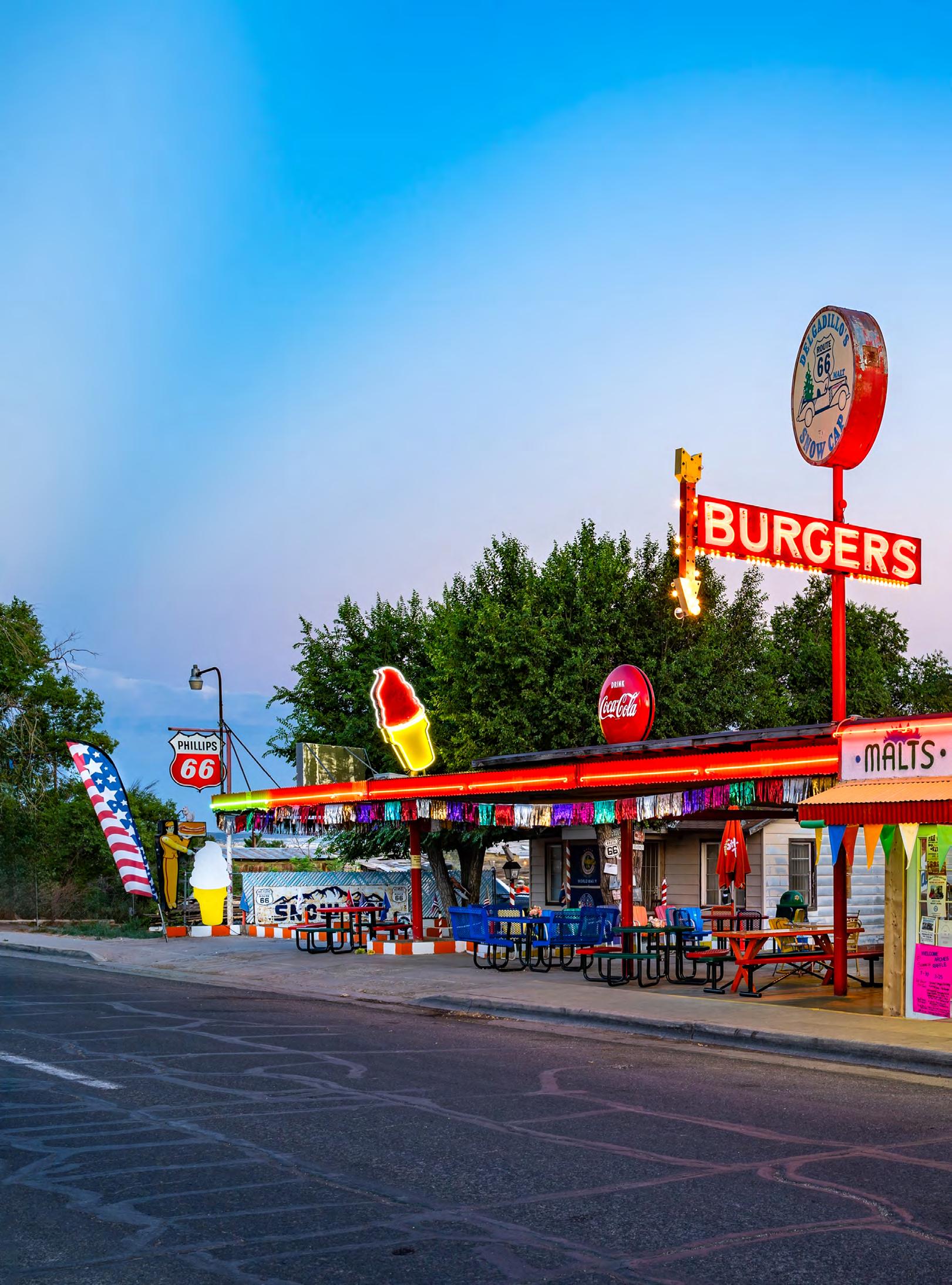 Photographs by David
Schwartz - Pics On Route 66
Photographs by David
Schwartz - Pics On Route 66

If Route 66 is known for anything, it is the quirk and kitsch of the many businesses that have lined it from its inception. Even nearly 40 years after the Mother Road was removed from the inventory of U.S. highways, travelers still marvel and laugh at the unusual, the odd, and, as in the case of Delgadillo’s Snow Cap in Seligman, Arizona, the unexpected humor.
Where else can you have condiments like mustard haphazardly squeezed in your general direction, only to quickly discover that the action was but a harmless prank?
From sight gags throughout the drive-in, to punchy oneliners that have been used thousands of times before on unsuspecting customers, the Snow Cap serves everyone a side of food gags at no charge. It’s a tradition that John Delgadillo inherited from his late father, Juan, and continues each season to a mix of new and returning customers. As for those repeat offenders, it is those gags that are even tastier than the food.
Seligman was named for Jesse Seligman, a New York businessman who helped finance the railroad through the region. Although never a teeming metropolis, it has long been a municipality that measures its population in the hundreds. Located less than an hour west of Flagstaff, its nearest neighbors are Ash Fork to the east, and Peach Springs to the northwest.
Long before the coming of the railroad in 1882, it was the homeland of the Havasupai. In 1857, Edward Fitzgerald Beale established a wagon road along the 35th parallel, right through where modern-day Seligman rests. By the early1910s, the National Old Trails Road had come through town. By 1926, it would be christened U.S. Highway 66.
The 1950s saw the heyday of Route 66, with car culture and post-war optimism ruling the times. Seligman was no different from the many other small towns along America’s Main Street, a place whose roadway was dictated by the railroad that had arrived almost a decade earlier. Pavement paralleled rails, with passengers and freight heading east and west mere feet apart.
Traffic through town was brisk, with a Harvey House Hotel and restaurant serving the railroad and locals alike, as well as motels attending to the needs of motorists. It was into this tableau that Juan Delgadillo found himself surveying the landscape in 1953. Born in 1916, he had served the U.S. Army during World War II, and had returned to his hometown to settle down and start a family.
“At the time he was working for the Santa Fe. When he was working there, he was trying to find a different life, to be out on his own. He did not want to spend the rest of his life working for the railroad,” said John Delgadillo. “My father told me years ago, before he passed away, how the Snow Cap came to be. Across from where the business is now, there
used to be a service station. Where the Snow Cap is today, there was an outhouse on the empty corner and people would walk across the street from the service station to use that outhouse.”
Juan watched as people crossed over to use the restroom, and he thought, “Hmmm… that would be a good place for an ice cream shop or something.”
That is all it took to put Juan in motion. With a dash of entrepreneurial spirit, and a work ethic forged by the hard times of his youth, Juan decided to launch a second career and open a drive-in.
“He looked into Dairy Kream back in the 1950s,” John continued. “He approached them, but they told him that Seligman was too small. So, he went a different direction, and got a Snow Cap franchise.” He bought into it, and the rest is history. Most people may not realize that the Snow Cap brand was once a franchise but locally, at one point, there was also one in Winslow and another in Prescott. It is now lost to the annals of history.
With a little bit of pluck and a lot of tenacity, he gathered up scrap lumber and, with his father and brothers, set out to build his own Snow Cap. It was — and still is — a modest structure, but Juan made do, and put his finishing touches on both the building and property, curating an eclectic arrangement of oddities that quickly helped turn his little café into a roadside attraction; one that would stand the tests of time.

Old vehicles, vintage signage, and outhouses — not the one that caught his attention in 1953 — can be found there today, adding a degree of stickiness to the experience that keeps people lingering a little bit longer to see and experience it all.
“He knew what he wanted to do. He was setting us up. Otherwise, today I’d be working for somebody else,” John reflected.
Little did Juan or anyone know at the time that he and his extended family would play a significant role in keeping Route 66 alive in these parts, one serving of burgers, fries, and shakes at a time. Never mind that short-order cook was not exactly his forte. He grew into it. Through the years, he involved his household in the day-to-day operations, including his wife Mary, brothers, and later their children, Bob, born in 1956, John (1959), and their daughter, Cecilia (1962). It was a family business from the very beginning. The kids worked as far back as they could remember.
Those were the peak years during the baby boom, with more than 4 million births annually. Even tiny Seligman experienced that same wave of prosperity and optimism,

one that found Americans taking to the highways in record numbers and leaving lots and lots of money in their wake. It was enough for Juan to eke out a living — a modest one, but sufficient for raising a family.
While Juan was not lacking in drive and enthusiasm, neither was he deficient in sense of humor. He seized the opportunity to add his own brand of “condiments,” not the sauces one dips and spreads, although they certainly involved them. His pranks and hijinks amused customers and kept them coming back for more, especially the plastic squeeze mustard bottles that he would use to surprise customers. He would point the bottle at them, and just when the customer gasped, he would squeeze it, only to send a colored string flying toward them.
And then there was the door with two knobs, one on each side facing out. It was anybody’s guess as to which one to pull, unless they had the foresight to look for the door hinges. “Sorry We’re Open” when illuminated meant the obvious, of course, but no apologies to be found inside. Cheeseburgers with the cheese became a hot seller, as did their famous dead chicken (is there any other way?).
“My brother and I would always be emptying the trash, sweeping, cleaning up,” said John. “‘When you get your chores done, you can go play with the guys,’” he remembered his father encouraging them.
Acknowledging that a family business can be all-consuming, John’s seniority has allowed him to digest all that happened during his formative years. “He was a good father. He was strict, mostly business. Growing up with him made me think about what a person can do. ‘If you put your mind to it, you can do anything you want to do,’ was his mindset.”
As for the humor and gags, it was all homespun. “It was all dad’s own ideas.” Unfortunately, it was also the result of medical necessity.
“After he opened the Snow Cap, he was having ulcer problems,” John remembered. “The doctor said, ‘Juan, you have to quit doing what you’re doing,’ because he was working the Snow Cap and working at the railroad. ‘You need to do something different, or you will be six feet under.’ So, he made the Snow Cap more of a fun place.”
At this point he devoted himself to the restaurant alone.
Juan’s mantra, though, stuck in John’s mind. “To be a success in business, you have to work it.”
The next few decades were ones that ushered in several waves of change. The kids were growing up, and Juan, Mary, and assorted extended family members were holding down the

fort at the Snow Cap. The kids worked when they were not in school, playing sports, or just having fun, and Seligman of the 1970s could be an eventful place.
“It wasn’t boring when I was young because Dad had us working at the Snow Cap. When we got done, we could take off. We’d get on our bikes and go cruising.” Of course, with Seligman being a small town, sometimes it took a little creativity. “We had to find our own things to do. When we were kids, traffic was crazy through Seligman. There was traffic, traffic, traffic,” John recalled. But that all changed in 1978 with the coming of I-40.
“When they bypassed us, it was like, ‘Where are all the cars?’ It was like a ghost town. We could ride our bikes down the middle of the street without getting hit,” John said with a hint of sadness. The light switch had been flipped.
The family struggled to keep the Snow Cap afloat, now supported primarily by local residents. The freeway diverted long-distance travelers right by town at high speed, en route directly to Kingman or east to Flagstaff.
Juan’s brother, Angel, was dismayed to the point of gathering up the family and concerned citizens to see what could be done to revive Route 66 through Seligman. He was successful and, in 1987, his campaign for Historic Route 66 signage proved fruitful. The Mother Road was back on the map.
And just like the cars and trucks disappeared in 1978, they were soon replaced by tourists in cars, on motorcycles, and in tour buses. Today, during the summer months, Route 66 is nearly as busy as it was during the highway’s heyday. Once Seligman landed on tour bus itineraries, its success as a tourist town was cemented. As many as 40 people exit those buses with one thing in mind: spending money.
The biggest challenges were still ahead, though. In June 2004, Juan passed away from a heart attack, at age 88, leaving the Snow Cap in the capable hands of his family. But then Mary died in April 2007, and less than two months later, brother Bob died of cancer. While sister Cecilia worked at the Snow Cap when she could, the burden of day-to-day operations fell on John.
“We [Bob and John] were working side by side. We played music together, we camped together, we worked the Snow Cap together. But when he passed away, all of this went on my
shoulders. What am I going to do?” he said with emotion.
But he carried on, and has put his own spin on the humor, not missing a beat. “We added straws. Somebody wants a straw, you hand them a little piece of straw. People want a shake, and we shake their hand.”
He has good support from his remaining family, including his wife, Rita, his sister, and a niece who does his accounting. “We’re a tight-knit family. We’re proud of the Snow Cap.”
John Delgadillo may have been born into the drive-in life, having worked at or managed the Snow Cap since he was a young lad, but he does not envision sticking with it as long as his father did. While Juan poured his heart and soul into it until his death, John sees a gradual exit at a much younger age.
“We have talked about it,” he said, “my sister and my nieces. I’m there 24/7 now keeping it going. I told them to give me about five to six years. I even told my kids. Somebody will have to step up.” But there is no clear succession path in place. His kids live in Prescott Valley, an hour and a half away, not an easy commute.
Of course, it’s hard to just retire from something like this and simply walk away, even if there are family members willing to take the mantel. The Snow Cap is more than a business: it is a legacy.
As for an entire lifetime spent in Seligman, John harbors no ill will. “I don’t miss living in the city. I’ve never lived in the city. I don’t regret living where I’m at now.” Thanks to his father, it created a career for John. The apple, it turns out, did not fall far from the tree.
The pattern that Juan established years ago clearly influenced John, who shows the same vim and vigor his father brought to work every day. But John conceded that he wanted to save some of his golden years for relaxation, as well as to do things with his wife; something that Juan seldom did.
“My dad was constantly there. He didn’t do any vacations with my mom. My dad was strictly business. So, when we got older, whenever we went on trips, we took her with us. He grew up in the Depression. It was hard for him to not work. He was setting us up for success. We broke the milkshake record last year in September with 266 flavors in an hour. The movie Cars was a big success. It brought even more people to Seligman.”
For now, it will continue to be business as usual, just as it has been for more than 70 years. Tour buses and tourists come through Seligman in droves during the season, making Route 66 nearly as busy as it was when Juan built the Snow Cap from the ground up.
That old building has stood the test of time, as has the humor. “I would rather be there than anywhere else. It’s just such a fun place to be,” John said wistfully. The gags will keep coming, one mustard squirt at a time. One wrong doorknob after another. Cheeseburgers with cheese, and lots of dead chicken.
Sorry, not sorry. They’ll be open as always.

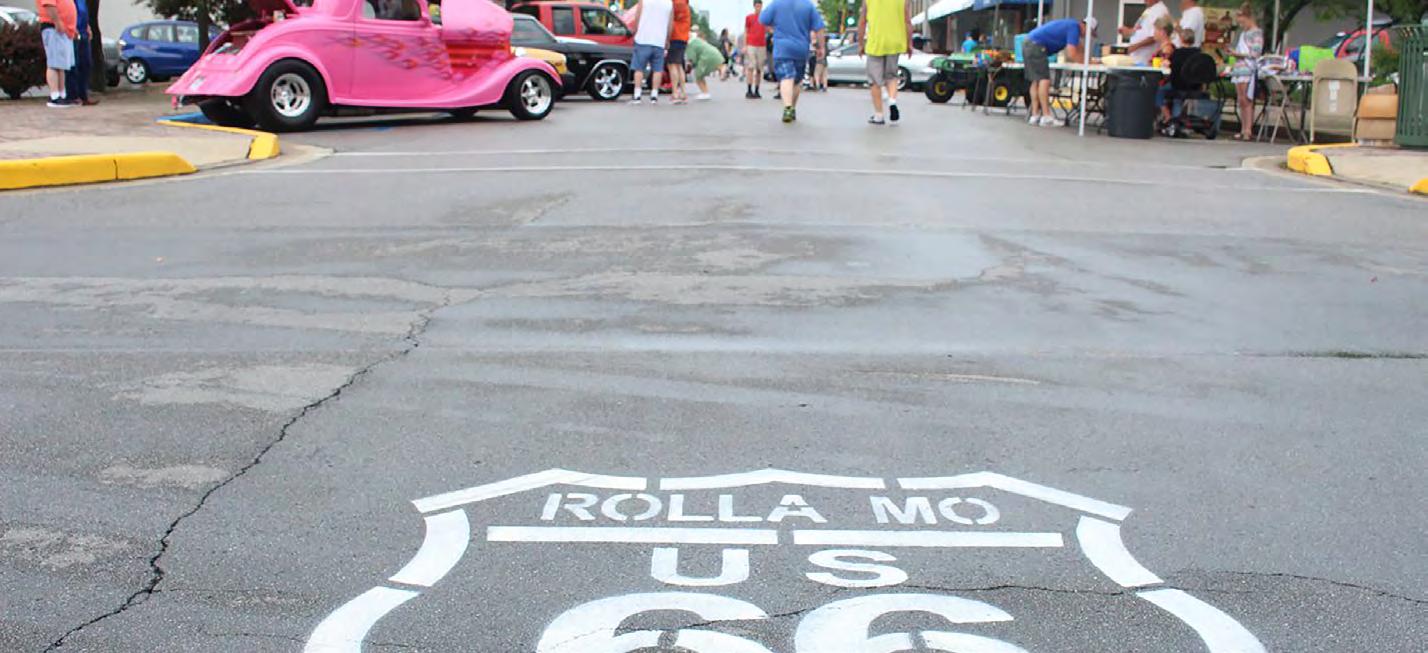



 Photograph by David J. Schwartz - Pics On Route 66
Photograph by David J. Schwartz - Pics On Route 66

America is famous for its roadside attractions. The country has a long history of pulling curious people off the highway via the allure of brilliant neon or enormous objects. And Route 66 offers perhaps the most unique spots to discover. Down in southern Illinois, Collinsville is famously known for its giant 170-foot Brooks Catsup Bottle water tower. How cool is that, right? But the town is also home to another intriguing gem that is less “expected” and shrouded in some mystery: several enormous, grass-covered, earthen mounds spread across four square miles. To the unknowing eye, these mounds could pass for the natural topography of the land, but in truth, they hold a lingering perplexity of possibly America’s oldest city: Cahokia. Scholars believe that the ancient city of Cahokia — present day Illinois — grew from a small settlement established at the confluence of the Missouri, Illinois, and Mississippi rivers around 700 A.D. By 1050, this community had ballooned into a thriving metropolis, with a population of over 15,000 at its peak, rivaling medieval London and Paris. Cahokia became one of the most advanced civilizations in ancient America, boasting thatched, rectangular houses; public plazas; political and social structures; and these huge, pyramid-like earthen mounds on which the aristocrats are believed to have built their residences while also using them as burial grounds, meeting places, and/or ceremonial centers.
“These [mounds] are to be found at the junction of all the considerable rivers, in the most eligible positions for town, and in the most extensive bodies of fertile land…” wrote Henry Marie Brackenridge, a surveyor from Pennsylvania dispatched by Thomas Jefferson in 1813. “I have been sometimes induced to think that at the period when those mounds were constructed, there existed on the Mississippi, a population as numerous as that which once animated the borders of the Nile or the Euphrates, or of Mexico and Peru.”
However, by around 1350, this flourishing civilization had all but vanished. Exactly who these people were and why they abandoned the city is one of the greatest archaeological mysteries today. Even the name of the city, Cahokia, is a misnomer, adopted by French missionaries in the early 1700s after the Cahokia tribe who came to the area around the 1600s. What was left behind as a trace to this early human existence were simply these enormous man-made mountains, some reaching 100 feet high, covering a large territory that is now known as the Cahokia Mounds State Historic Site.
“The state of Illinois purchased a small portion of the site in 1925. It was only 144 acres at the time,” said Lori Belknap, superintendent of the Cahokia Mounds State Historic Site. “The first incarnation of the state site was actually a state park. Over the years, with more organizations and supporters, the state started acquiring more and more of the property. Then the National Park
Service began the process to have this included in the World Heritage system.”
The Cahokia Mounds were placed on the National Register of Historic Places in 1966 and with a UNESCO inscription in 1982, the mounds stand as only the 10 th North American monument to enter their register of culturally and historically significant sites of humanity’s ancestry. Out of what is believed to have been over 100 mounds built, about 70 of these mounds still exist today with Monks Mound, the centerpiece of the historic site and the largest, towering over 100 feet high and covering over 14 acres. Visitors can climb to the top of Monks Mound, or Mound 38, and take in impressive views of the river and the Gateway Arch in nearby St. Louis, Missouri.
Some of the most intriguing archaeological discoveries on the site were at Mound 72 where the remains of a man, believed to be of a noble class, along with shell ornaments and unused arrows were unearthed. Interred in the grave were also the bodies of several women and the decapitated bodies of four men, provoking debates on the practice of ritual human sacrifice. Evidence of jewelry, headdresses, stone tablets carved with images, and tools, among other items were also found pointing to a sophisticated city for its time. Another historical landmark discovered during salvage archaeology at the site are a series of wooden posts forming circles. Known as Woodhenges — similar to the famous Stonehenge — they are believed to have served as calendars to mark the seasons.
Today, of the 2,200-acre tract of land that makes up the Cahokia Mounds State Historic Site, 800 acres are open to the public and offer walking trails, an interpretive center, and the opportunity to explore this ancient civilization. While much of its past may have been lost, the Illinois Department of Natural Resources strives to create a tangible connection to humanity’s past through evolving technologies.
“We’ve launched an Augmented Reality application. You can go around the site and using the camera in your device, you can see video animations that show what was in the location when it was occupied 1000 years ago. When walking between video points, there’s also audio tours,” said Belknap. “It’s a really good self-guided tour that anybody can do at any time.”
Even as scholars stay divided as to who these early inhabitants were, and why they abandoned their city, Cahokia remains a place of great intrigue and enigma. Without evidence of any written records, the hand-built earthen mountains exist as a significant narrative to this ancient civilization. They stand as an awe-inspiring testament to the architectural capabilities of the people that once dwelled across North America, both as an invitation for us to explore and learn from the past, as well as a reminder of the value of recording our history.
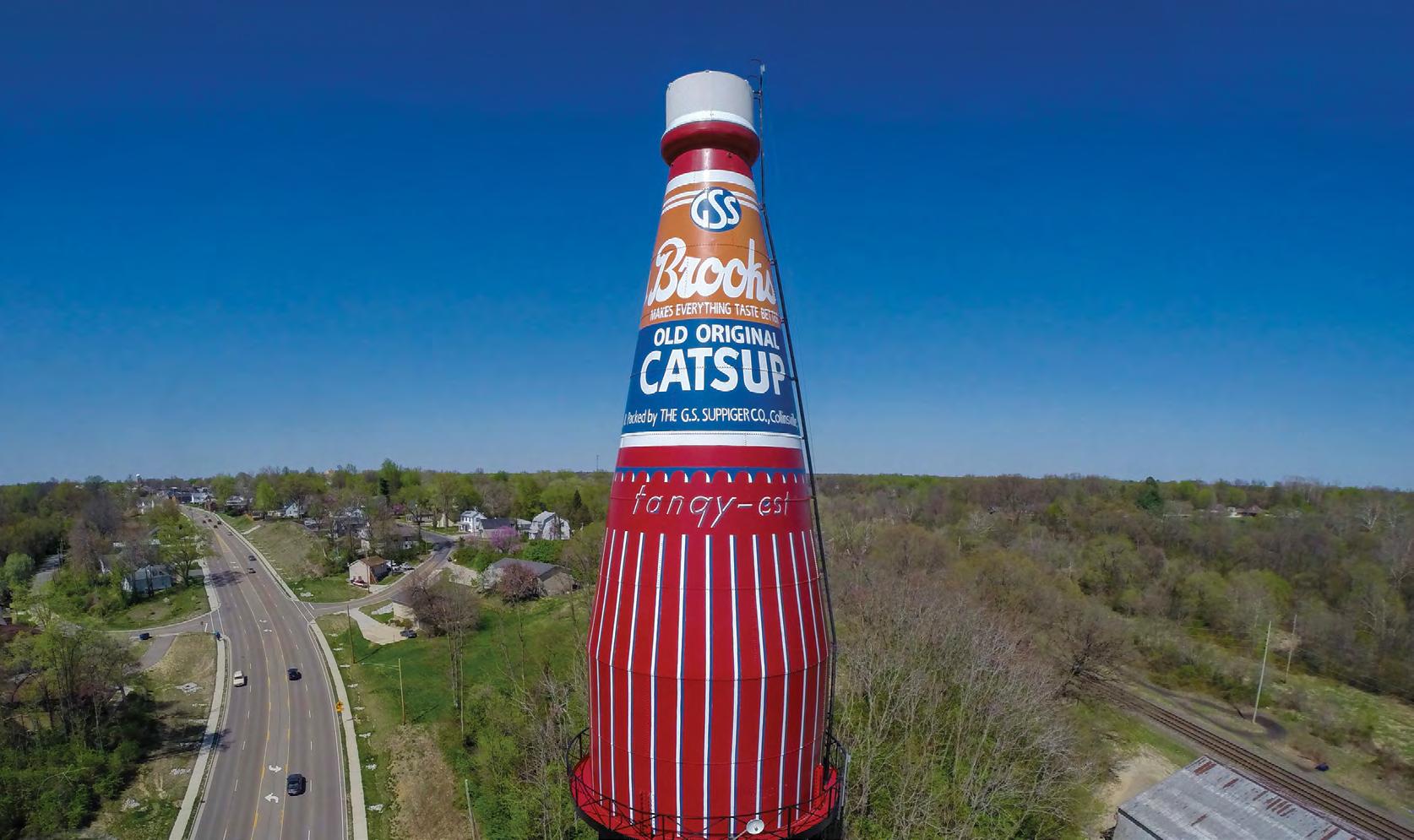
Discover a new Post Card Mural Trail, a giant pink elephant, the world’s tallest catsup bottle water tower, giant monuments and more along the Last 100 Miles of Route 66 in Illinois. Legends live on this legendary highway. Learn more at riversandroutes.com

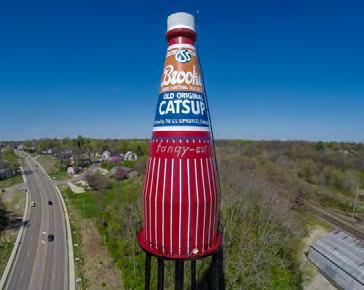
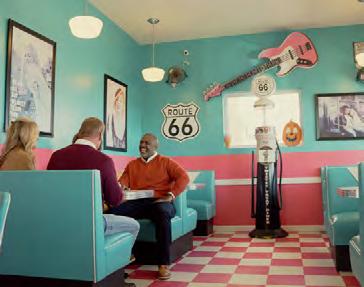
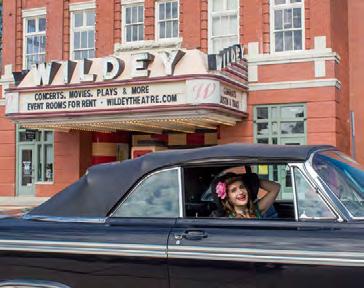
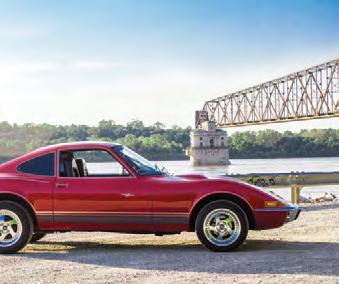
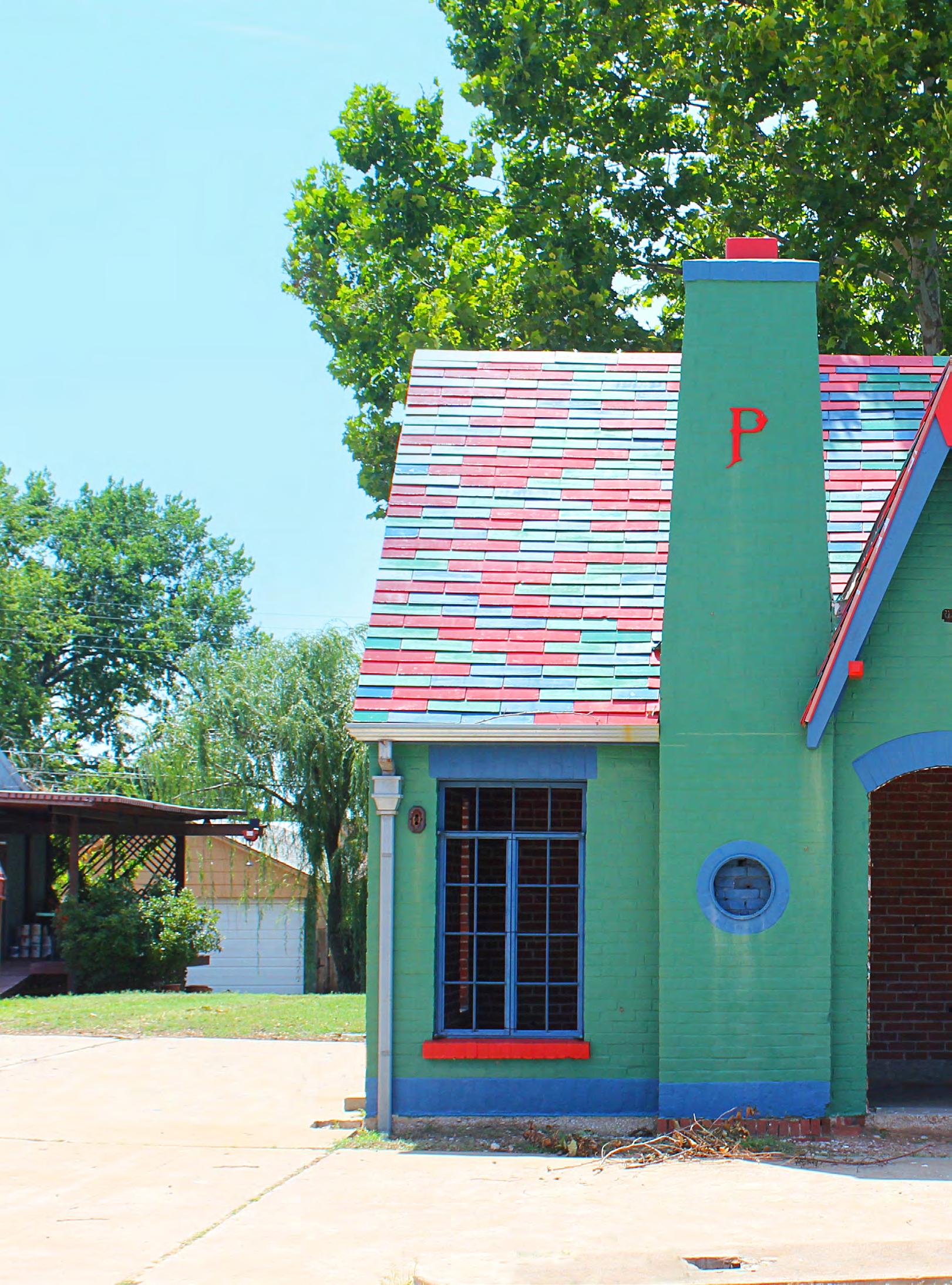 Photograph by Brennen Matthews
Photograph by Brennen Matthews

The residents of Chandler, Oklahoma, hold a clear esteem for their town’s history and its relationship with Route 66. Considering that it holds multiple locations on the National Register of Historic Places, they should! However, one location is possibly a little more incognito than others: the town’s historic Phillips 66 gas station. Its peculiar design has made it something of a benchmark in Chandler and among tourists, and its recent string of restoration efforts has made it a symbol of what some are willing to do to preserve evocative structures on Route 66.
The hunter-green colored building with orange-and-blue detailing around the door and window frames, and the steep, pitched gable roof on the corner of Manvel Avenue — Historic Route 66 — and East 7th Street, is hard to miss. At one point in time, three 10-foot-tall gas pumps stood on the island out front. The Phillips 66, or Station #1423, was built by the Phillips Petroleum Company in 1930 in the Type B cottage-style architecture, one of 500 to be developed by the company between 1927 and 1938. This particular station is currently among the last few structures of this design still standing. Its pattern resembled the kind of houses you would have seen in the area, and that is not by coincidence. “Gas stations tried to have a unified design to brand them,” said Jerry McClanahan, Route 66 artist and historian. “Some neighborhoods objected to having an ugly station since these roads [went] through residential neighborhoods. So, the developers wanted something that could blend into the area.”
The station operated as a Phillips 66 until 1967, then in 1972, Bill and Janean Westfall took over and ran it for the Skelly Oil Company. In 1979, they went into business for themselves as Westfall Oil Co. and it would later be rebranded as Getty in 1983, and then as Texaco until 1992, when it finally closed shop, following Janean’s retirement. Bill had passed away in June 1982.
The building, which had come to be locally known as the Westfall station, sat vacant until 1999 when Chandler local, Bill Fernau, and his company, Patina Properties, bought it from Bill and Janean’s son, Todd Westfall, with plans to restore it back to its original Phillips 66 state.
“Bill Fernau owned it for quite a while, and he patiently collected everything that would be needed to restore it,” said McClanahan. “There was a two-bay brick addition built on the side in the ‘50s, but he had that removed so that it could be listed on the National Register.”
Ultimately, Fernau sold the station to another Chandler native, Larry Braswell, who owned it until 2019 when it was foreclosed on by the bank. That is when Shane and Sarah Massie came along. In October 2019, the Massies entered negotiations to purchase the station from the bank and the deal finally closed in January 2020.
“The guy who was the president of the bank at the time wanted a local person to own it. He wanted somebody who would take care of it and bring it back to what it once was,” said Shane Massie, current owner of the Phillips 66 station. “For there to be derelict buildings and things of that nature, it doesn’t sit very well. I bought another building out of foreclosure, and since I had done it before, I was relatively comfortable with the process.”
Since they’ve acquired the station, the Massies have been working diligently, painstakingly reinstalling the multicolored roof tiles back to the original orange, green, and blue Phillips 66 color scheme.
While restoration efforts are often commissioned through grant writing and donations, the Massies pay for everything out of pocket, so their efforts face some gaps in time, especially following the pandemic. The Massies also own Big Willy’s Hot Dogs, a food truck and catering company, and their business, like most others, took a hit, resulting in a pause in restorations. Slowly, they are getting back to restoring the station, with specific efforts being made to change out the windows and the exterior lights.
The historic Phillips 66 gas station still has work to be done, but it’s steadily on its way to being in a condition reminiscent of how it looked back in the 1930s. Its ownership might have changed hands over the past few years, but it is clear that those who carry the keys also carry the respect for the past, and a hope that the old-fashioned imagery remains a mainstay for travelers coming through Chandler.
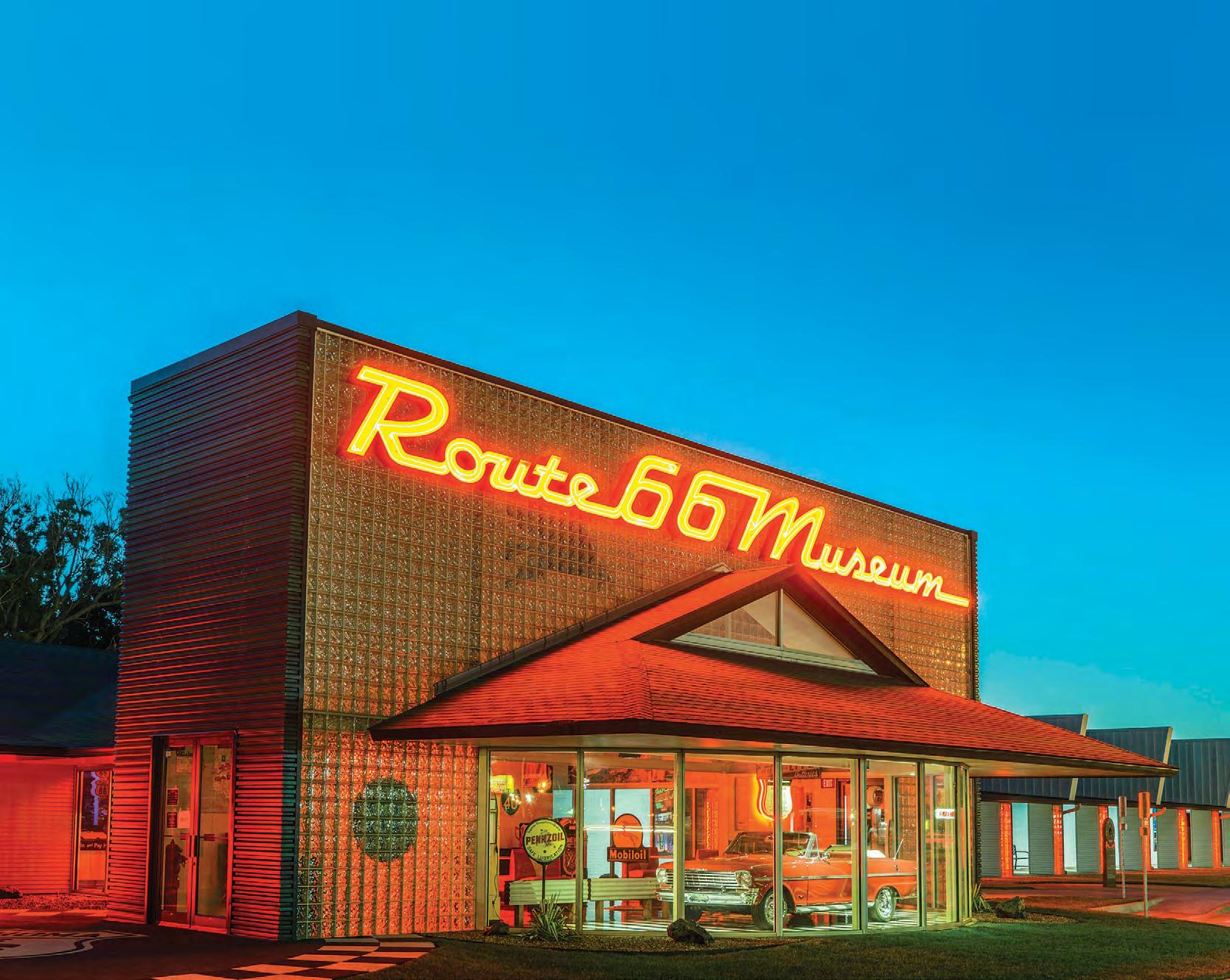



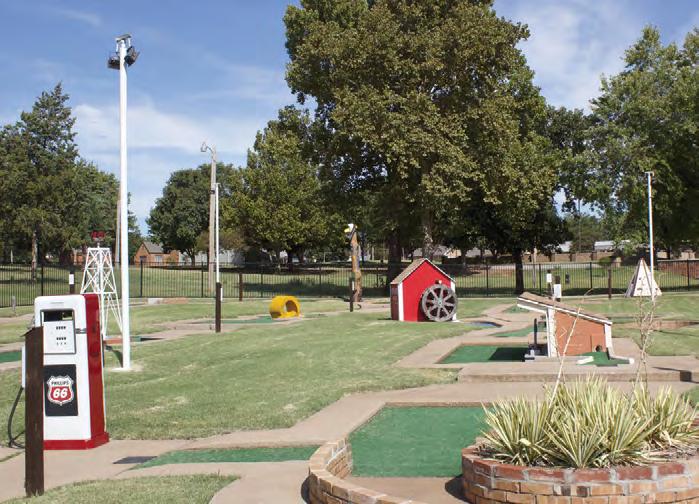


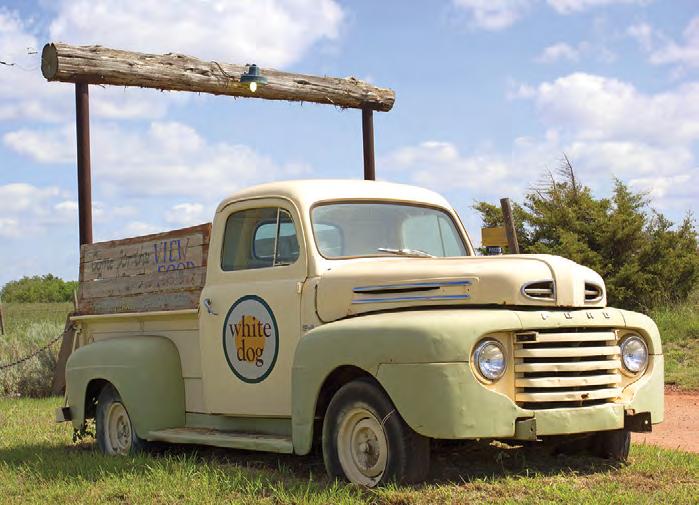






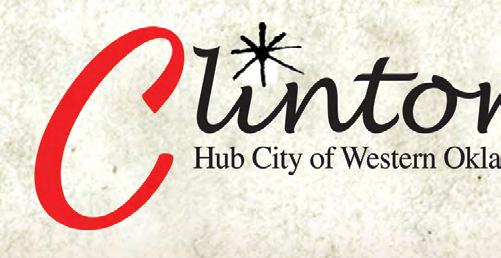



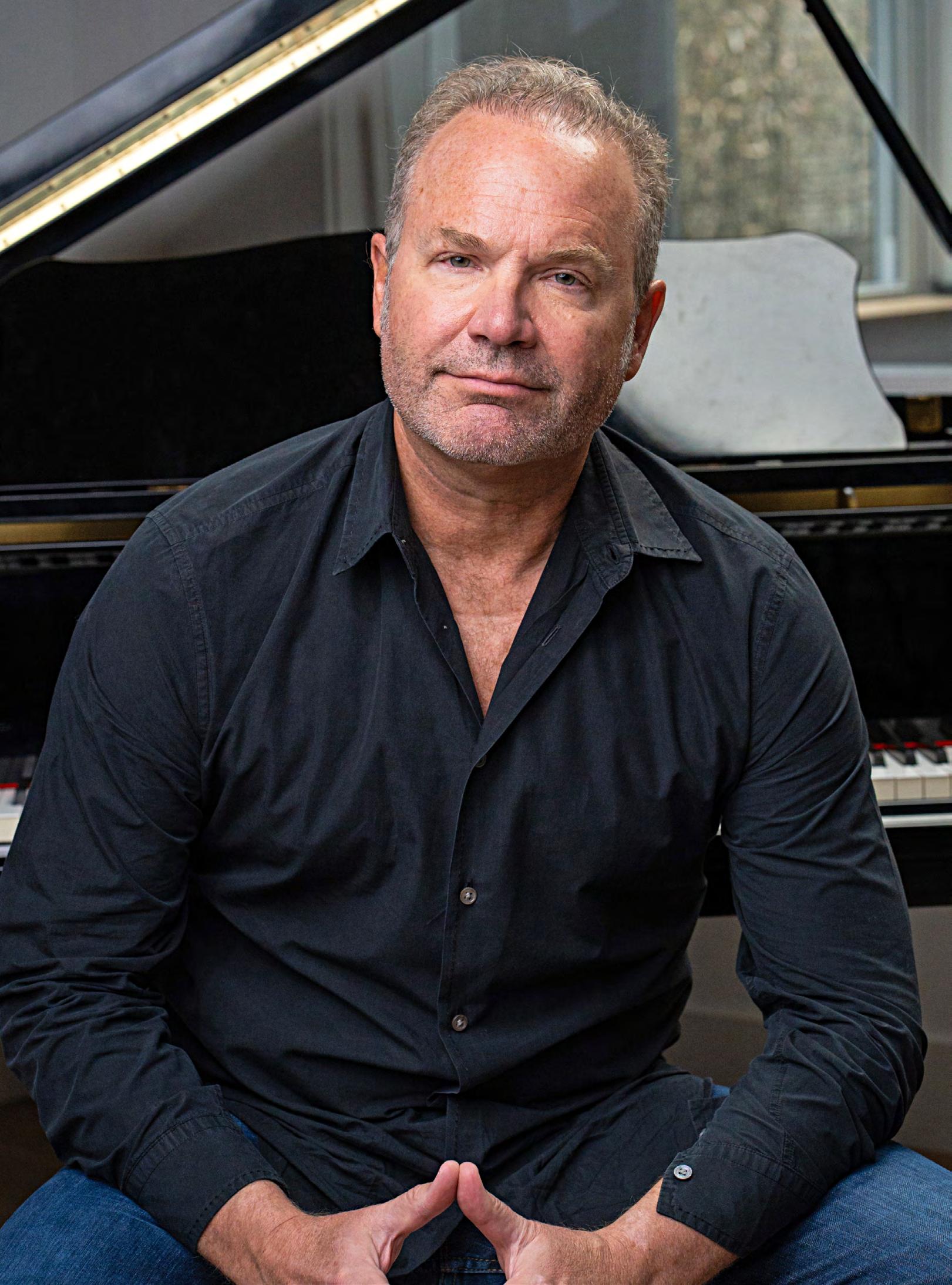
In the ever-evolving tapestry of modern music, few artists possess the rare ability to weave raw emotion and universal truths into their compositions quite like John Ondrasik. Renowned under the pseudonym Five for Fighting, Ondrasik stands as a singular force in the industry, captivating audiences with his soul-stirring melodies and deeply introspective lyrics.
Emerging in the late 1990s, out of the bustling music scene of Los Angeles, Ondrasik quickly captivated audiences with his debut album “Message for Albert.” However, it was the sophomore release, “America Town,” featuring the iconic anthem “Superman (It’s Not Easy),” that catapulted Five for Fighting into international acclaim.
Ondrasik’s ability to distill complex emotions into relatable narratives struck a chord with listeners worldwide, earning him a devoted following. From the chart-topping hits to introspective ballads like “100 Years” and “The Riddle,” Ondrasik’s music serves as a timeless soundtrack to the human experience: navigating the complexities of love, loss, and the search for meaning in a turbulent world. Today, his songs represent discussions and subjects that are more relevant than ever. Listen in on this fascinating conversation as we delve into the captivating life and career of John Ondrasik, a storyteller whose music transcends boundaries and touches the hearts of listeners around the globe.
You were raised in southern California and went to the University of California-Los Angeles (UCLA) to study math. That may surprise some fans.
I did, I am a born and raised valley boy. Now, I don’t live in San Fernando Valley, but I’m in Thousand Oaks, which is adjacent. I’ve lived there my whole life — my mom was a piano teacher, and my dad was an astrophysicist. I grew up loving music. My mom put on Broadway shows when I was in elementary school, and I was Tony in West Side Story. I love Broadway and, of course, very early on I started piano. I was two years old. But my mom was wise because when I was 13 years old, I wanted to ride my skateboard, play basketball, and chase girls — and she let me quit. I had the fundamentals of the piano and then it was up to me if I wanted to do it or not. I loved songwriting, so I started writing songs and it became my passion. I got a little studio where I would write and record songs — hundreds of songs. When it came time for college, I knew my passion was music, but I also knew the odds of having a career in music. I have the kind of math gene and I was a computer guy. My dad was building computers on our dining room table, and I learned basic computer language as a teenager. Initially, I spent a year at USC (University of Southern California) because I couldn’t get into UCLA, so I spent a year at USC doing computer science. I found out quickly that you’re coding for like 10 hours a day. (Laughs)
I moved my little studio into my dorm because I wanted to write songs more. Then I changed my major to math because I had some aptitude for it. If the music thing didn’t work, I’d have a math degree and could get a job. I transferred to UCLA for my junior and senior year, but I had my little studio in my dorm, and I was writing and recording. I wasn’t playing a lot of gigs yet, but I think having that degree actually gave me a sense of freedom where I could take a few swings. If it all went wrong, I knew I could find a job.
When you graduated in 1988 with a math degree, the plan was music, but the fallback plan was math?
It was, but we had a family business that started in the 1940s called Precision Wire Products, and I worked there as a kid. My dad left NASA when my grandfather passed away and he took over Precision Wire, so I worked there with my dad growing up. I worked there all the way through my career. With Precision Wire, I was able to have an income and help out my dad, but if I needed to bolt for an audition, or a voice lesson, or a recording session, I could do that. It really allowed me to pursue music until an older age, since I didn’t have success until my late 20s.
It’s been a great balance, because the celebrity world could be shallow and silly, but when you go back to Precision Wire… this is where people make things, they’re sweating, the machines are running, and you have a payroll to meet. You see the American dream every day. These people come and work at 18 years old, then 20 years later, they’re putting their kids into Ivy League schools. That keeps you focused and grounded, so it’s been the best of both worlds.
Your initial step into professional music was the “glam rock” scene. You quickly started meeting some people who were connected to that world, who had worked with other big artists.
My parents had a timeshare and a little condo in Malibu where I would go. After my graduation from college, I was down there writing and hanging out. At the pool, I met a guy named Rudy Sarzo. He was a nice guy and we got talking. He had hair past his shoulders and looked like a rocker. I found out that he was the bass player in Whitesnake. I told him that I was an aspiring songwriter and played a few songs for him. It turned out he was a closet Barry Manilow fan — he loved piano music. We became buddies, and he mentored me. It became like Almost Famous ; I was a little kid and I’d go to Whitesnake concerts, and he would take me around. One of his friends was a guy named Scott Sheetz, who was one of Pat Benatar’s guitar players. He wrote her song “Fire And Ice.” He had left Benatar, he met me, and he liked my voice, so we wrote a few songs together. We formed a band called John Scott. It was me and all the ex-members of Pat Benatar’s band. (Laughs) They were all 40-year-olds, and I was 23. We wrote some songs and got a manager. People were kind of interested and we cut some demos in a studio, but then this little band called Nirvana came out and our band ended overnight.
In a way, it was somewhat of a blessing, because I went back to the piano and started writing the songs that people know. It was a great experience.
Around the mid-90s, you’re solo, and going around to wherever you can play as a singer-songwriter in LA. As an aspiring performer, what was the experience like in the 90s, trying to get an audience interested in what you were doing?
It was certainly different. There was a little club called the Coconut Teaser, and under it was a tiny room called the 8121 Room. I was playing there every week, and a few people would come in. I did gigs here and there, but I certainly didn’t have a band. I was really focused on writing a lot of songs and trying to record some demos, but I knew that I had
to get out and play. A few years later, I was playing at a piano bar on Melrose Ave & Vine St. and seven or eight people were there, and my demos were floating around the music industry. This woman came in — she was a very successful music publisher — and she had heard my songs at Motown. I had a girlfriend who worked at Motown, and she was playing my demos in her office. This woman was walking through the office and was like, “What’s that?” The song didn’t sound like Motown, and my girlfriend said, “It’s this guy, he plays at the Melrose piano bar.” She came, and she thought that there was something there. We started working together, she got me my first record deal at EMI Records. We have now been married for 26 years. (Laughs)
Amazing! Something interesting happened to you after that. You were about to sign a big management deal as John Scott and then that fell through because the music scene and the culture changed. Then, you finally get a record deal with EMI Records, a major label, and then their American division closed. How does that even happen, and what were you feeling at that time, since you were so close?
Yeah, as you can imagine, it was devastating. I just made my first real record with EMI Records, and the president of the label actually produced my record, a guy named Davitt Sigerson. I had the full support of the label and was starting to tour, and our first single, “Bella’s Birthday Cake,” was scheduled to come out. We were on the road, and I got the call. Davitt was certainly devastated, and he said that I might be able to be at Virgin Records or Capitol Records, that I had that option if they wanted to pick me up. But they did not; they dropped me. You go through this whole experience and you’re a couple years from getting the deal to make your record and then it all collapses under your feet. Carla, my wife, was instrumental at that time because I’m like, “Alright I had my shot, but now I gotta get a job.” I started working more, but she kept sending out my demos. There were a couple little record companies, one called Deep South Records in North Carolina, that was like, “Hey man, I’ll make a little record with you.” Their competition, for me, was a guy named Gregg Latterman from Chicago’s Aware Records. They were like, “Come over and make a record with us.” They were a very small imprint, but they were connected to Columbia Records, so I made the America Town record with a very small budget.
I was going into discount studios at midnight with Gregg Wattenberg, who is an amazing producer. It was great because we had nobody looking over our shoulder and nobody knew we even existed. We could just focus, work on the songs, and make that record. When it was time to choose a single, they chose a song called “Easy Tonight” which was a hit on Triple-A Radio, an adult alternative. It was a number one song there, but it sold no records. What it did was let Columbia Records know that I existed, and they said, “Let’s do another song,” and that song was “Superman (It’s Not Easy).”
You must have had a billion people ask you about your stage name, Five for Fighting. Unless you’re into hockey, a lot of people wouldn’t know that “five for fighting” is actually a five-minute penalty for fighting on the ice, and that you’re a huge hockey fan. When you suggested that name, were you being facetious or was that a real suggestion?

I was being totally sarcastic. At that time in the late 90s, the male singer-songwriter was not on the radio. It was grunge music, boy bands, and Lilith Fair. There were no Elton Johns or Billy Joels. I think that what they were trying to do, from a marketing strategy, is cover that up; maybe it would make it easier for them to market me. When they told me that, I’d just been to an LA Kings game, and a guy named Marty McSorley, who was Wayne Gretzky’s bodyguard, had gotten in a couple of fights, and at the spur of the moment I said, “Well, how about Five for Fighting?” I expected them to hate it, but they loved it. I thought that they were nuts. (Laughs) It sounds like a heavy metal band.
I think that it was a big marketing failure by them because there’s a big disconnect between the songs and the guy. But for me, it’s been great, because I’ve had some anonymity. People know the songs, but I’ve been able to play Monday night football, outdoor hockey games… I got to play at some of these huge events and John Ondrasik probably doesn’t play at those gigs, but Five for Fighting does.
“Superman” totally blew up. It was #14 on the Billboard Hot 100 and #1 on the Adult Top 40. You see listener response to it, it’s a beautiful song, and you’re hoping it’s going to pick up. Then, 9/11 happened a year later. How did the song, in this miraculous cultural moment, get embraced by that tragic event?

It was interesting. “Superman” really struggled initially on radio because it was different, and radio was reluctant to play it. But it was #1 in the Philippines! But I think that the label thought there is something there, and they stuck with it. The song struggled and struggled, but then it started to become a big hit. Then the label sent me overseas to set up [a] promotion to release “Superman” in Europe. I was in London on 9/11 and we were supposed to do a promotional show for the song that night. Of course, we canceled everything, and I kind of sat in the room and called everybody I knew in New York. People forget that there were like 10 days where there were no planes in the skies; you couldn’t move. Everyone was in shock, and when I got back to the States, I remember I kissed the tarmac — I was so glad to be home.
I hadn’t realized that many of the news organizations had picked up “Superman” and were using it to recognize the firefighters who ran into those buildings. It had become a song that recognized them and their heroic acts as well as the families who lost loved ones. I remember walking down 7th Ave., and I saw pictures of people missing. This song spoke for that moment; and, certainly for me as a young guy who [had] just gotten used to hearing his song on the radio, it was overwhelming. Then I got a call from my friend Rick Krim — who was running VH1 — who had been a longtime fan and supporter of mine. He told me that Paul McCartney was putting on this concert for New York and they wanted me
to play “Superman.” I was very nervous, but very honored. I ended up playing at The Concert for New York. That whole experience was incredibly powerful. It’s hard to put into words, even all these decades later, but I think it was a defining moment for me in a way.
I understood, at that age, how music can transcend — and not just my song. I remember sitting side stage and watching The Who blow the roof off Madison Square Garden at The Concert for New York. I remember seeing 20,000 people — many of them who’d been down at ground zero digging through the rubble — crying, singing, able to scream. They were able to release this pain that was inside them. When I was singing “Superman,” I remember looking at this 250-pound, big, burly union worker with two beers in his hands just crying and singing the song. In the aftermath, I did many events with the military, with firefighters, with the survivors, and then with our troops. I think, for me, it was an education; there was more to this than sex, drugs, and rock ‘n roll. There are things here that can make a difference culturally. It was very humbling and even to this day whenever I play “Superman” in New York or DC, it has a weight to it that will probably never go away.
Obviously, you never had 9/11 on your mind when you wrote the song, it was written years earlier. What was the inspiration behind it?
Yeah, it’s not a song I could write now. The whole “it’s not easy to be me” thing… I’ve realized that it’s actually pretty easy to be me. (Laughs) It’s pretty easy to be most of us. But it was kind of the despair of a struggling singer-songwriter who just wanted to be heard. If you don’t like me, fine, but give me that chance. At the end of the day, it’s really about our innate humanity: we can’t be everything for everybody. We are all human, and we do the best we can. I think the difference between my “Superman” song and others, is that Superman doesn’t want to be Superman. I think that’s why so many people, whether you’re 10 years old or 80 years old, can relate to it.
In 2002, “Superman” was nominated for a Grammy. This song is one of the most noteworthy and memorable songs of the decade. It’s gone down as part of a cultural period. How did your life change from 2002 onward? Did you start to get more recognized and were you getting bigger gigs?
Yeah, I got a tour bus, which was huge when you’re in a van for 10 years. (Laughs) The first day, I remember, I did Larry King, and I talked about “Superman.” I walked off the show and into my tour bus for the first time.
I was able to play at bigger venues. I had a huge song, and I was living the dream. There was a lot of obligation that came with that success though. It always brings its own challenges, but that’s why it was important to have my wife and my family there. I had Johnny, my son, who was one year old; I had my family. But then I had the dilemma of how do I follow that song? It’s hard enough to follow your first hit, but when it’s a song that has that cultural significance, how do you follow that?
The quest to write the follow up to “Superman,” was a struggle… it was definitely a roller coaster. But that struggle resulted in songs like “100 Years,” songs that stand on their own, which is what I wanted. “Superman” is great, but I’m not writing “Superman” #2. In many ways, “100 Years” has
been more popular and more relevant than “Superman,” just because we’re all in it somewhere, and it’s become a song for the home movies, graduations, and weddings. To this day, it’s still relevant.
“100 Years” was on The Battle for Everything, your third record. How old were you when you wrote it?
I was in my early 30s.
In the song, you say, “I’m 33 for a moment / A kid on the way / A family on my mind.” I was 33 when my son was born, so that line always hits me. Then, “I’m 45 for a moment / And I’m heading into crisis / Chasing the years of my life.” I think we all begin to really delve deeper into the meaning and impact of our lives around that time. Were you dealing with these questions at that time when you were writing the song?
Yeah, you don’t write that song without two little kids on your lap. I tend to be one of those people who either dwells on the past or the future. For me, to be in the moment is a challenge, and that’s really what this song is. I mean, it’s cliché, you’ve heard it a million times… to live in the moment. But I think, when you have kids, and you look at what you have right here, you appreciate what you have right now, and that was a little post-it note to myself. Once I had that concept with the melody, I decided to have the verses be stages of our lives. The rest is just crafting. Like 15, when all roads are open; 22 when you’re on fire and you’re chasing the moon, looking for your life partner; and then, of course, 33, thinking of a family. I figured there would be a crisis somehow, so the rest kind of wrote itself. It’s a lot of crafting and writing… 400 lines to get the 30 [that] you hear in the arrangement. The song took a while to write.
“Superman” came within an hour: it was a gift that has never happened in my life and will likely never happen again. But “100 Years” took three or four months to really craft it to where it could be a single or a pop song. We knew we had something there, and we were very fortunate that it resonated. Then I became a songwriter. I wasn’t just the “Superman” guy, even though I had some radio hits like “Chances” and “The Riddle.” Those were two big ones. I was in that grinding and desperate mode, and I was able to reach down and pull that out. It’s still fun to sing both of those songs each night.
Once I hit my 40s, without ever realizing it, I started to go through this midlife crisis thing. It’s not something you’re thinking about, but then you start getting a little melancholy at times and certainly more reflective. A lot of times, men don’t really talk to each other about these struggles. They keep it bottled up. You’re 59 now, on the cusp of hitting 60. Has this ever been an issue for you?
Yeah, for sure. In my 40s, I got a little melancholy. I think it’s just the nature of age. You’re getting older, and you can’t do the stuff you used to do. You’re certainly a little bit wiser — but I think that kind of melancholy is typical. I never had any dark places or certain events that jump out, but I was slogging through.
You’re right about men talking to each other. I think my biggest regret of my life is that I don’t have more male
friends. I have a lot of friends and relationships with people who do have like four or five guys, like the whole Iron John thing. They have grown up together, they go on trips together, and they talk about things. They’re very personal and they pick each other up when they need it. I have not had that, it’s the one thing that I press on my kids. My daughter has a million friends — they talk several times a day — but my son is kind of a loner like me. We men, we have to make an effort; it takes work to develop relationships and friendships. I think you’re exactly right: it’s really important for men to have those conversations and friends they trust. Even at my age, I’m still trying to work harder on that, because I know it’s something in my life that’s missing.
Olivia, your daughter, is 22 and Johnny is 24. My son is 16 and I’ve struggled with the balance of giving him independence but missing him. Have you struggled with being an empty nester?
I think every parent goes through that, you miss your little babies; and they’re always your little babies. It’s hard to let them go and you’re torn, you want them to never leave, but you also know what’s best for them. My son Johnny is in Texas now and Olivia is in New York, so we’ve been empty nesters for a few years. But yeah, you miss those times. You kind of long for grandchildren. But that’s life. They go out, they find their way, they make their own life, and they have their own families. Yeah, it’s sad: I miss my little Olivia sitting on my lap playing piano, but you treasure those memories you create.
Now that we’re adults, it’s really fun to have that kind of relationship with them, too.
In 2006, Two Lights was released and was #8 on the Billboard chart. It is a great album.
Yeah, that record, they actually thought the song “World” was going to be a huge song. They thought “The Riddle” was going to be an even bigger song. It was charted but wasn’t “100 Years” or “Superman,” but they thought “World” was going to be a big song. But, as things go, there was a young man on Columbia Records named John Mayer who was “waiting on the world to change.” Of course, John was on complete fire by then, so their resources went behind him which I would have done, too. “Waiting on the World to Change” is probably my favorite John Mayer song. It just happened, and he got the priority, so “World” didn’t happen. But, in my concerts, many people have “The Riddle” as their favorite song, especially parents.
“Chances” and “The Riddle” weren’t “Superman” and “100 Years” but they were Top 5 Hot AC songs. I was grateful that it allowed me to keep making records and keep touring. Those songs and other songs that weren’t hits became important in certain places like for our troops. It was quite the decade and I’m very grateful for it.
As a songwriter, do you need to be in a reflective mood when you sit down to write a song like “The Riddle” or “100 Years”?
I don’t sit down intending to write a reflective song. With “The Riddle,” I think about what everybody thinks about.
We are a little thing in the universe — like a speck of nothing in the universe — but to ourselves we are everything. That kind of dichotomy of how we’re nothing and everything at the same time, and how do you put your head around that, and why are we here? Those are questions we all ask ourselves; I turned them into songs. Like “Chances” is about picking yourself up when you fall down; and I fall down, so I write a song about trying to pick myself up. Then, there are other songs like “Freedom Never Cries” [where] I’m writing about freedom. There are certain songs that I have an intent, a story to tell, but the ones that were popular would be postit notes about life and thinking about bigger things.
After 10 years of a close relationship, you and Columbia parted ways.
They dropped me. (Laughs)
I don’t lament them. They’re a business and they’re in the business of making money and selling records. My sales had kind of gone down and it’s expensive to put a record out. I was grateful for them, and we had quite a good run. After that I found Wind-Up Records where Gregg Wattenberg, my original producer, was an AR guy and executive. I was able to make one more record with Gregg, which was wonderful.
You’ve been passionate enough to write several songs that seem a little more “serious”. I’ve read that you don’t define these songs as “political,” but the reality is that they are certainly more political than “100 Years.” The 2021 “Blood on My Hands,” which was about the withdrawal of troops in Afghanistan. Then “Can One Man Save the World?” a year later about the war in the Ukraine, and now, you have a brand-new song that focuses on the attack in Israel: “OK.” The main message is that nobody should be supporting and justifying the October 7th attack. This is very different from Top 40 radio.
It’s strange, I’m not a guy who likes to stand on the soapbox and preach whatever my worldview is — that kind of annoys me when celebrities do that. You can see through my music that I’ve always written about freedom and our troops. I have a great relationship with our troops. Gary Sinise and I go out to do a bunch of shows; I’ve always loved freedom, our troops, and I appreciate America and the freedom of speech we have. I’ve met many people who do incredible things. The Afghanistan song came out of nowhere: we were horrified to see the pictures of babies being thrown over barbed wire, but when we abandoned our allies and Americans to the Taliban, that really scared me. I knew people that did amazing work around the world, literally risking their lives to go down to rescue people that we abandoned. I wrote “Blood on my Hands” as a way to be cathartic for myself. A lot of people said I shouldn’t put it out, that I’d be canceled in two minutes, but I said, “Screw it, I’m putting it out.” It needed to be said, and I’m glad I did, because so many Afghan veterans were gutted by the withdrawal and abandoning their brothers in arms. It became a voice for them.
I thought that was it, I didn’t want to write anymore of these, and then Ukraine. “Can One Man Save the World?” was inspired by President Volodymyr Zelenskyy. When we offered him a plane ticket, he said, “No, I’m going to stay here and probably die in the next few days with my wife and little girls. Send me some Stinger missiles.” I ended up going
to Ukraine, in a war zone, and recording the song with the Ukrainian Orchestra. I spent five days hoping that a siren doesn’t go off and I didn’t have to go to the bomb shelter. But again, that one really resonated with people, and it resonated in America, too.
I thought, “I will never do that again,” and then Israel, October 7th, and then, all of a sudden, our college campuses and media proceeded to [ignore] all this stuff. I thought, “The world is broken.”
You’re right, you’re very insightful, because most people think that it’s a pro-Israel song. It’s about October 7th, it’s about the fight for civilization against those who want to destroy it. One of the heroes of my video is a Palestinian woman calling out Hamas for stealing the aid. So, I tell people, “This is probably the most pro-Palestinian video you’ll ever see, because I care about them.” I’m saying things that people don’t want to talk about. I just got back from Israel three days ago. I played “OK” at Hostage Square for thousands of people and I met with hostage families. I saw first-hand how important the song was to them and my presence there because the music industry has been historically shameful, just disgusting, with their refusal to speak out. So, going there was powerful, and being there during the Iran attack with my son — Johnny came with me — was part of history.
It goes all the way back to “Superman.” It provided something for people that they needed. When I played “OK” at Hostage Square, that was the closest thing to The Concert for New York that I’ve ever done. You’re looking into the eyes of these family members who have loved ones, hostages, who have been tortured, and you see their pain, but they’re singing with you. You give them a little hope, you give them little solace. I never could have imagined I would have another experience like The Concert for New York, but in the last week I did.
How did being over in Israel impact Johnny?
My wife didn’t want him to go, but he wanted to go. Johnny is a chill guy, I think he liked it: the city, the food, the people. He was in every meeting, whether I was sitting with a hostage family or Natan Sharansky [an Israeli politician]. To be in those rooms and listening to those people tell their stories, you can’t help but grow up. Being in Israeli society, where these people are constantly under threat, but they’re still playing volleyball at the beach, and you can’t get a reservation for dinner… seeing how they live their life like “100 Years,” because they are always under threat. They live their life fuller than we do. It’s not surprising that if you look at the happiness ratings, Israel is often in the top five, because they live life to the fullest every day — because they have been under threat for 2,000 years.
I’m not Jewish, so going there meant a lot to them because these are not political things, they’re simple: you shouldn’t abandon your allies that you swore to protect. If you can’t say Hamas is evil, then nothing is evil. To me, these are not hard things, and that is why I call them moral messages; but, of course, in this day and age, everything is political.
If you could go back and talk to an aspiring 22-year-old John Ondrasik, what would you tell him?
I would tell him to collaborate more and enjoy the ride!

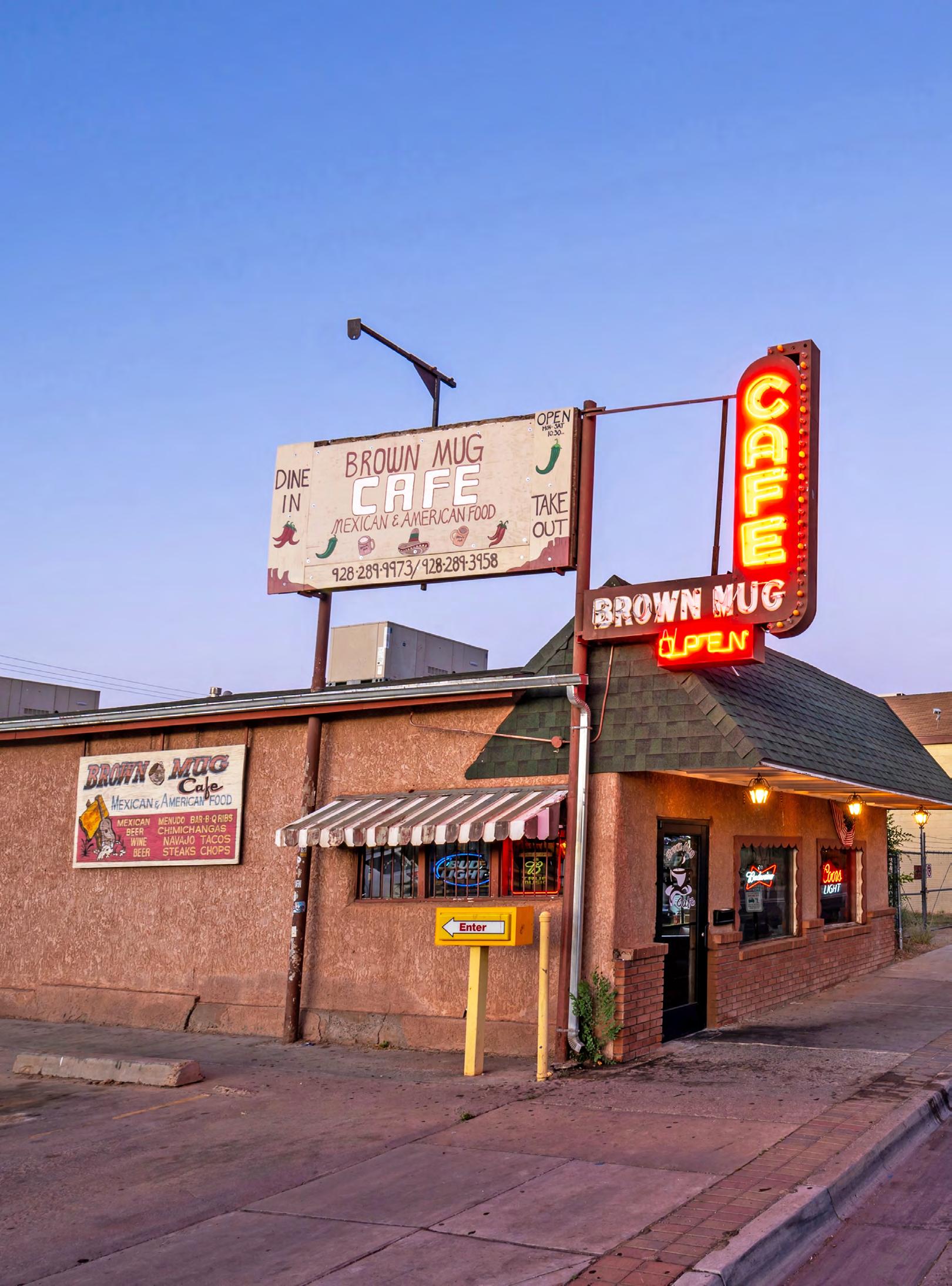

Winslow, Arizona, is one of those towns that, were it not for a passing lyrical mention by the Eagles in 1972, it would probably have forever remained a sleepy pass-through town for the rest of its existence. But with Route 66 bisecting the town east to west, as did its predecessor the National Old Trails Road, and the wagon road carved by Edward Fitzgerald Beale in 1857 before it, this was not the town’s fate.
Today, nearly 9,000 residents welcome a steady stream of tourists seeking to feed their pop culture hunger. Some hurry along, while others spend the night. And some feed another hunger by dining at what is now an easily recognizable Mother Road institution, Brown Mug Cafe. It is a shining example not only of a multi-generational business, but it is also the story of true resilience.
Located on East 2nd Street a couple of blocks from that famous corner and just across the road from the iconic La Posada Hotel, sits a quiet, earthy brown structure with a faded green roof and a purple door. From the outside, the humble building does not really draw a lot of attention to itself. There is no flashy appeal about the café, and those not in the know are more than likely to pass right on by. But as most foodies understand, it is often the local casual spots that offer the most delicious food. And this one is a gem.
First opened in 1958 by Lucy and Joe Ono, the café has since been at the heart of Winslow. The building itself dates to 1935, when it opened first as a saloon, and was later occupied by a Chinese restaurant. When Brown Mug Cafe finally took ownership, the couple decided to use thencurrent marketing tactics to attract a clientele and invested in a vintage neon sign that is still, even today, a magnet for fans of old signage and those fascinated by mid-century neon.
While it is true that 2nd Street was not the original alignment of Route 66, by the time Brown Mug Cafe opened, this stretch of 2nd was already well established as part of the Mother Road.
“My grandmother was a go-getter,” said Paula Vargas, the current owner of the café. “But she was not very creative,” on the topic of naming the café. “I know that they had brown mugs. They were just sitting there one day and were inspired. [The sign] doesn’t even say Mexican food.”
Lucy retired in 2009 at age 83, handing the reins to her daughter Josephina Perez — Vargas’ mother — and husband Joe, Sr. “I started working when my grandparents owned it. I was only 10,” said Vargas. In 1998, Vargas expanded her horizons by attending beauty college and becoming a beautician a year later. Today, she keeps her feet in both ponds.
Sadly, in 2017, Vargas’ mother started showing signs of dementia, which progressed slowly. Vargas took care of her during this time and assumed the duties of managing the business. Josephina passed in May 2021, and Vargas stepped up to the plate.
“I was the one who was willing to take it over,” she said matter-of-factly.
With so many years of hands-on experience, it comes as no surprise that she was well-equipped for the task. “I know how to do it all. When my parents took this over from my grandparents, they also opened another restaurant across town.” Vargas met her husband Martin over there, taught him to cook, and when her parents shut it down, they both moved over to Brown Mug. Now he has been cooking for more than 30 years, and between the two of them, they have a combined 75 years of restaurant experience.
The mark of a successful entrepreneur is the ability to face adversity head-on and emerge a victor. Better still is when that entrepreneur also provides a valuable service to his or her community. Vargas did just that back in 2020 when the global health crisis brought economies to a standstill. Worse yet, shortages and supply chain issues brought widespread disruptions to many peoples’ lives.
This was the case in Winslow as well, and when some of Vargas’ restaurant clients started casually mentioning that they could not find common items such as toilet paper and basic ingredients at the local supermarket, this set the wheels to turning inside her head. She then contacted her suppliers and found that they had no shortages whatsoever. By then, she had been forced to close the restaurant, but she pivoted and decided to effectively become a tiny grocery until things returned to normal.
“For a week, I was in panic mode, and I decided we would do what we had to do.” A couple of days went by, and the next week she thought: “You know what? We’re going to sell groceries. Since we couldn’t have people in the dining area, we just started putting stuff outside the door, and doing curbside pickup,” she recalled with enthusiasm. “Call it in; it’ll be ready when you pull up. I was selling meat, cereal, everything. We survived it. We did not have to shut down.”
A step into the café is like stepping back in time. Sombreros and chile lights adorn the walls, while old time booths with laminate tables, and counter service, provide seating options within the compact space. While Route 66 travelers frequent the place, Vargas’ core clientele is primarily Native Americans from the nearby reservation. (Actor Harrison Ford is rumored to have eaten here.) While she serves up both American and Mexican cuisine, Mexican dishes such as enchiladas, burros, Navajo tacos, and sopapillas dominate about 75% of the orders. “I put some things on specials and have not been able to take them off the menu,” she laughed.
The personal touch is not lost on her customers, who appreciate the hard work put into every dish. “Our cheese, we grate it ourselves. Our beans, we grind them,” she said with pride. Vargas’ son, Martin Jr., is in training to become the fourth generation to run the café and they don’t plan on slowing down. “We’re still family-run. It can happen if you want it to happen. This place has always survived.”
And that is the story of resilience. That is the story of Route 66.

If you were to take a long drive down the Arizona stretch of Route 66 — either for travel purposes or purely for the joy of it — you might come to notice a recurring trend across the various attractions that populate the roadside: dinosaurs. Whether it is the cement dinosaurs that occupy the property of the Rainbow Rock Shop in Holbrook or Wild Bill, the 2.9-million-year-old alligator in Jim Gray’s Petrified Wood Co. (also in Holbrook), the Northeast stretch of Arizona’s U.S. Highway 66 cannot seem to get enough of the prehistoric creatures. But the question is: where did this start?
This trend is not a new development; in fact, it goes back to the early half of the 20th Century. What is now known as the Grand Canyon Caverns in Peach Springs, was initially called the Coconino Caverns and then Dinosaur Caverns. At one point, they even had an “enter here” sign on Route 66 between Kingman and Flagstaff, which included a cartoon caveman leading a brontosaurus by a leash. Perfect, classic Americana! The caverns lured visitors with promises of 20,000-yearold sloths and 300-millionyear-old marine fossils. That type of evidence became very alluring to people across the country at that time.
“There was that burgeoning national popularity of dinos in the 1940s, ‘50s, and ‘60s that came into play, but that was overlaid in Arizona with actual dinosaur evidence in the fossil record,” said Sean Evans, archivist at Cline Library – Northern Arizona University. “Throw in the roadside kitsch aspect of 66 highway architecture and it was a pretty magical mix.”
considerably lusher and more hospitable environment, it was possibly home to at least 15 different species of dinosaurs — including everyone’s favorite, the T-Rex.
When it comes to the matter of who got on the dinosaur train first, so to speak, it is all sort of a matter of perspective. “Arizona is unique in that dinosaurs are associated with Route 66 almost all the way across the state. There are some logical reasons for this, I think. Arizona is well known for its geology. The red rocks, sedimentology, and so on,” said Evans. “My guess is that the Museum of Northern Arizona played into it and displayed the dinosaurs early. Holbrook is definitely ground zero for fossils and dinosaurs, but I don’t know the specific trigger.”
He is not wrong. The previously mentioned cement dinosaurs of the Rainbow Rock Shop in Holbrook have become iconic as a part of the Arizona strip of Route 66, which is fortuitous considering it reportedly took owner Adam Luna 20 years to build all 11 of them. The same can be said for the dinosaur statues that stand outside Jim Gray’s Petrified Wood Co., which they received from the — now defunct — International Dinosaur Park and Museum of the Americas.
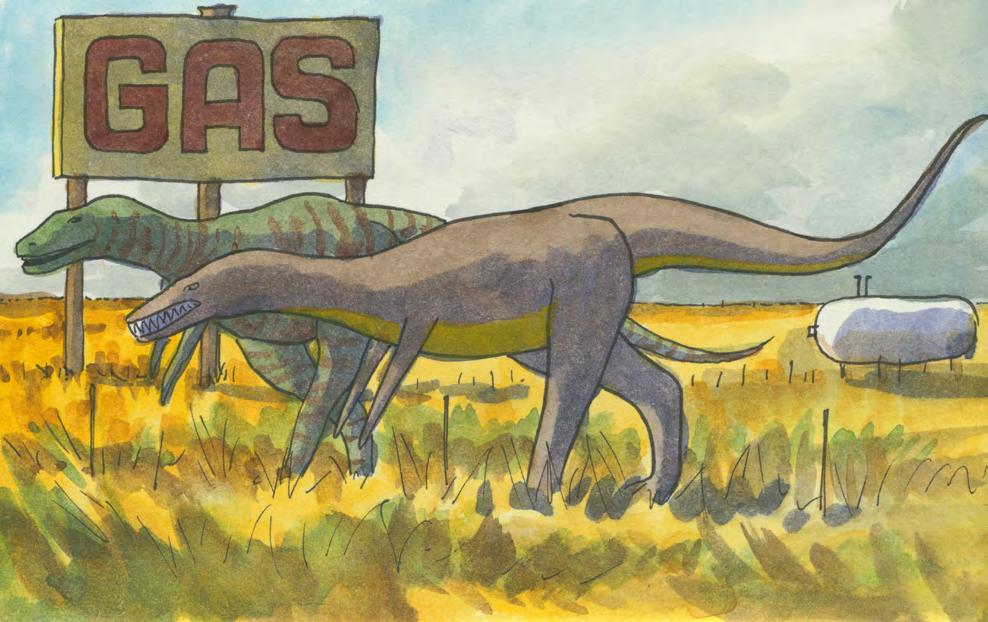
There have also been several discoveries in the area that have added to the mystique of dinosaurs in Arizona. In Petrified Forest National Park, back in August 1984, there was a famous excavation of one of the oldest dinosaur skeletons to be found in the Americas, which was dated to be between 210 and 235 million years old. It was determined to be a Chindesaurus bryansmalli, but it was named “Gertie” after a cartoon dinosaur from 1914. However, Gertie is far from the only prehistoric creature to call Arizona home. Around 245 million years ago, when Arizona was a
The colorful DIY creations
at Stewart’s Petrified Wood Shop, just east of Holbrook, pull motorists from the highway, and the sheer joy in these discoveries sets Arizona apart in many ways.
Regardless of what started the dinosaur craze in Arizona, the current of it seems to run through the state’s identity.
“Meteor Crater reminds visitors of the relationship of meteors and the demise of the dinosaurs. We have volcanoes just east of Flagstaff — again, relationships with the prehistoric past,” said Evans. Between walking among the Moenkopi Dinosaur Tracks — just five miles outside Tuba City — and being able to literally walk in the footsteps of the massive creatures that used to roam the Earth by going to the Arizona Museum of Natural History, which has the most extensive collection of dinosaur fossils in Arizona, it is easy to get lost in the wonder of the incredible beings that once were the dominate species of the planet and still live, in spirit, in the Grand Canyon State.



The west rim is heart-pounding, soul-searching, bucket-list-checking adrenaline rushes you’ve never felt or seen before, including one of the largest glass bridges in the world that will have you stepping 4,000 feet out over the Grand Canyon floor. Skywalk is just one of the ways you can jolt your senses and ignite your spirit at Grand Canyon West. Plan your adventure today.
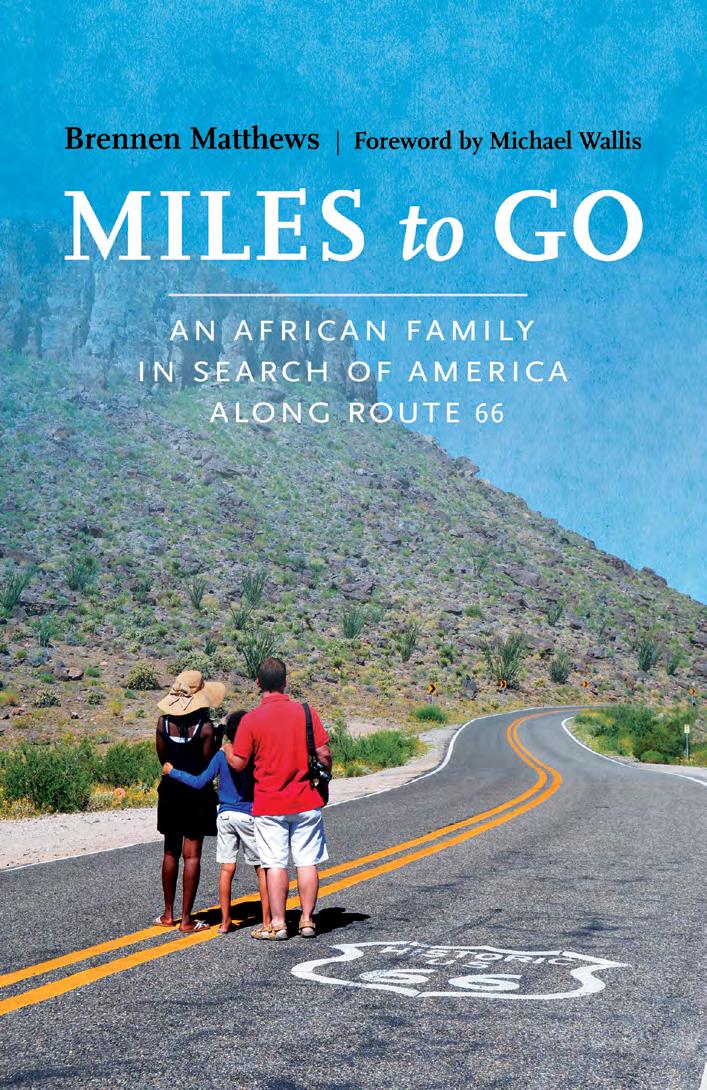
“In telling the story of his African family’s journey on Route 66, Brennen Matthews has made an important contribution to the legacy of the highway. He offers both a new voice and a new look at the Mother Road.” —from the foreword by Michael Wallis, New York Times bestselling author of Route 66: The Mother Road
“An impassioned and engaging road trip along and deep inside Route 66, with a bright, thoughtful guide and his engaging family. If you ever want to travel the Mother Road yourself, it would be a terrific, quirky guide. If you don’t have the time to make that quintessential American drive, the book is as close as you’ll come to experiencing the sheer wonder of it.”
—Stephen Fried, New York Times bestselling author of Appetite for America: Fred Harvey and the Business of Civilizing the Wild West— One Meal at a Time
“Miles to Go fills my heart with the freedom of being back on the road. Reading Brennen Matthews’s story has time traveled my mind to when I drove Route 66 as a teenager and transported me back to all the unique places, the rich characters, and the smell of freedom that only America has to offer. What a joy to feel that once more. Route 66 is the artery of Americana and is now calling my name again. Here I go . . .”—Jim Belushi
Miles to Go is the story of a family from Africa in search of authentic America along the country’s most famous highway, Route 66. Traveling the scenic byway from Illinois to California, they come across a fascinating assortment of historical landmarks, partake in quirky roadside attractions, and meet more than a few colorful characters.
Brennen Matthews, along with his wife and their son, come face-to-face with real America in all of its strange beauty and complicated history as the family explores what many consider to be the pulse of a nation. Their unique perspective on the Main Street of America develops into a true appreciation for what makes America so special. By joining Matthews and his family on their cross-country adventure, readers not only experience firsthand the sights and sounds of the road, but they are also given the opportunity to reflect on American culture and its varied landscapes. but a tale of hopes, ambitions, and struggles. It is the record of an America as it once was and one that, in some places, still persists.
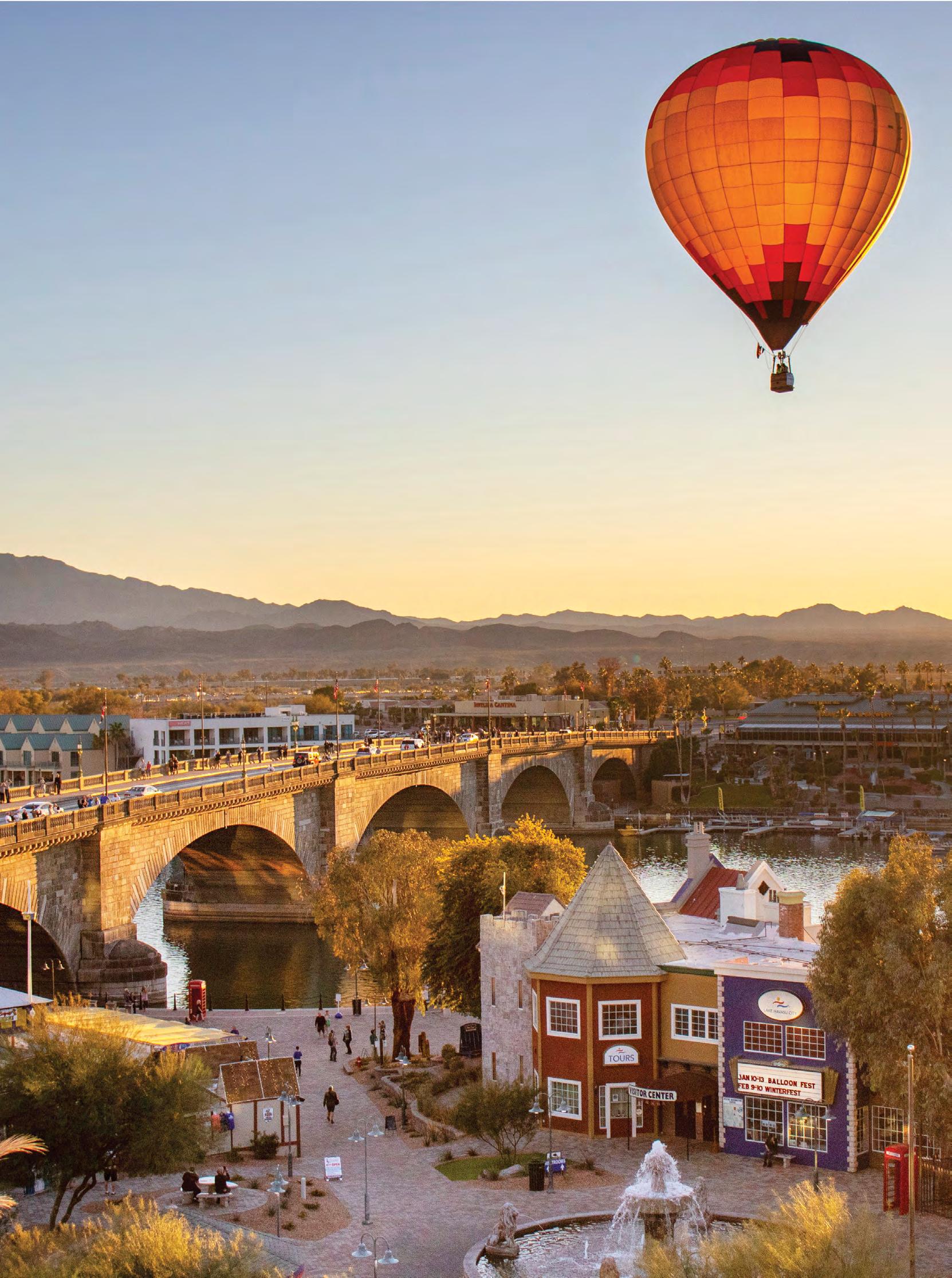


With more than 300 days of sunshine a year – and a unique mix of tranquil waters, rugged mountains, and tons of fun – it’s hard to stay inside. Discover Lake Havasu City – just a short drive from Route 66 – and play like you mean it.®


